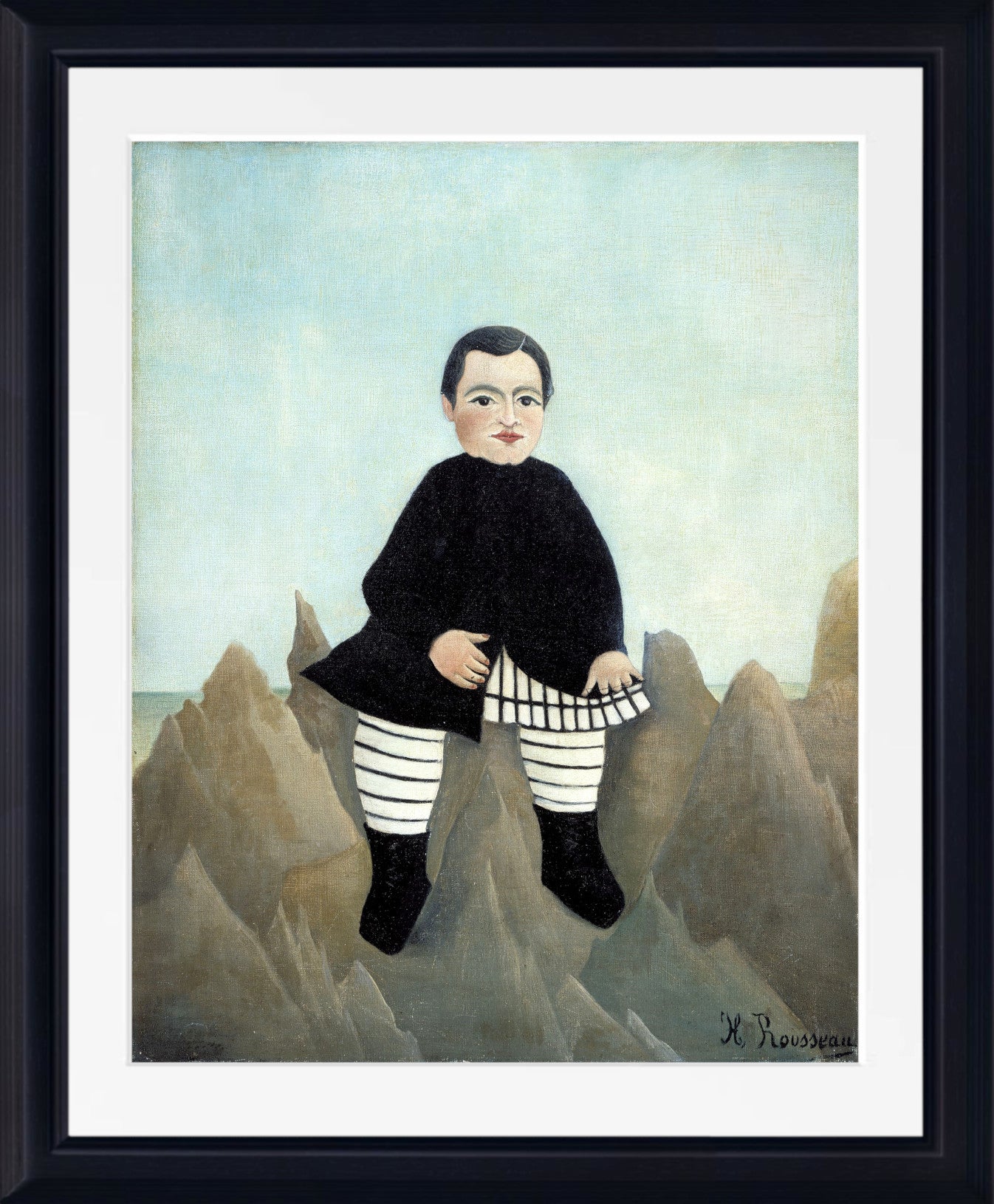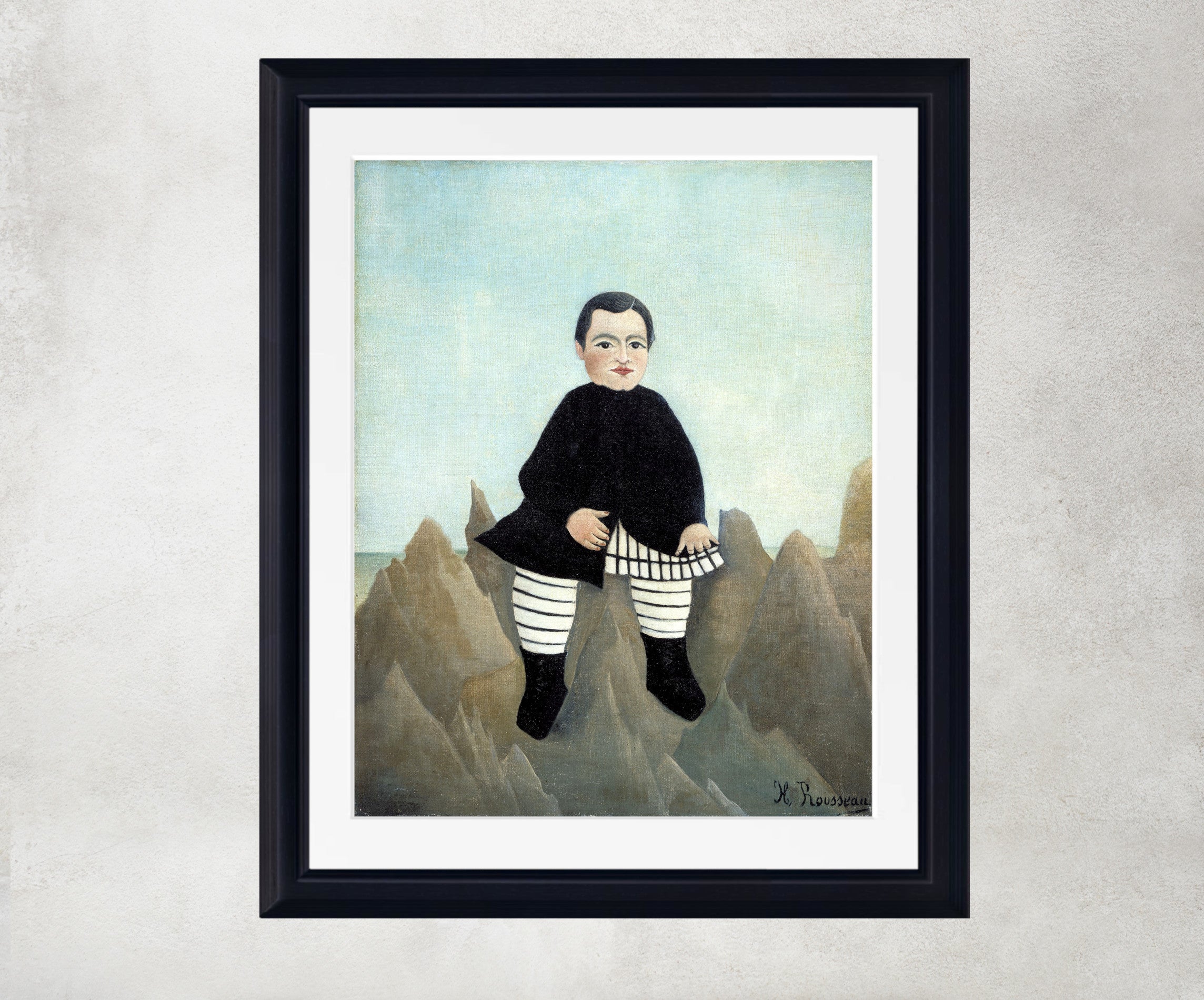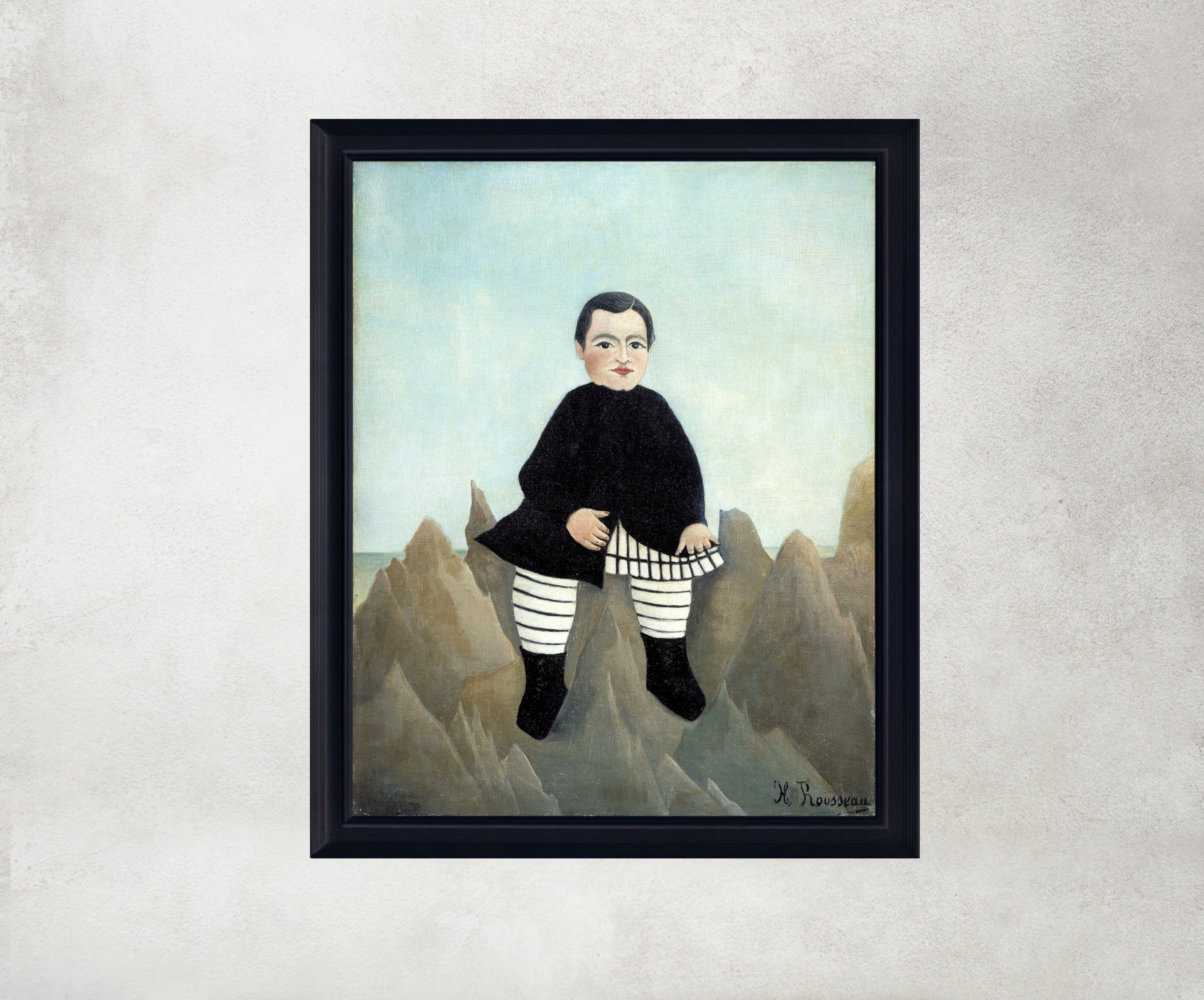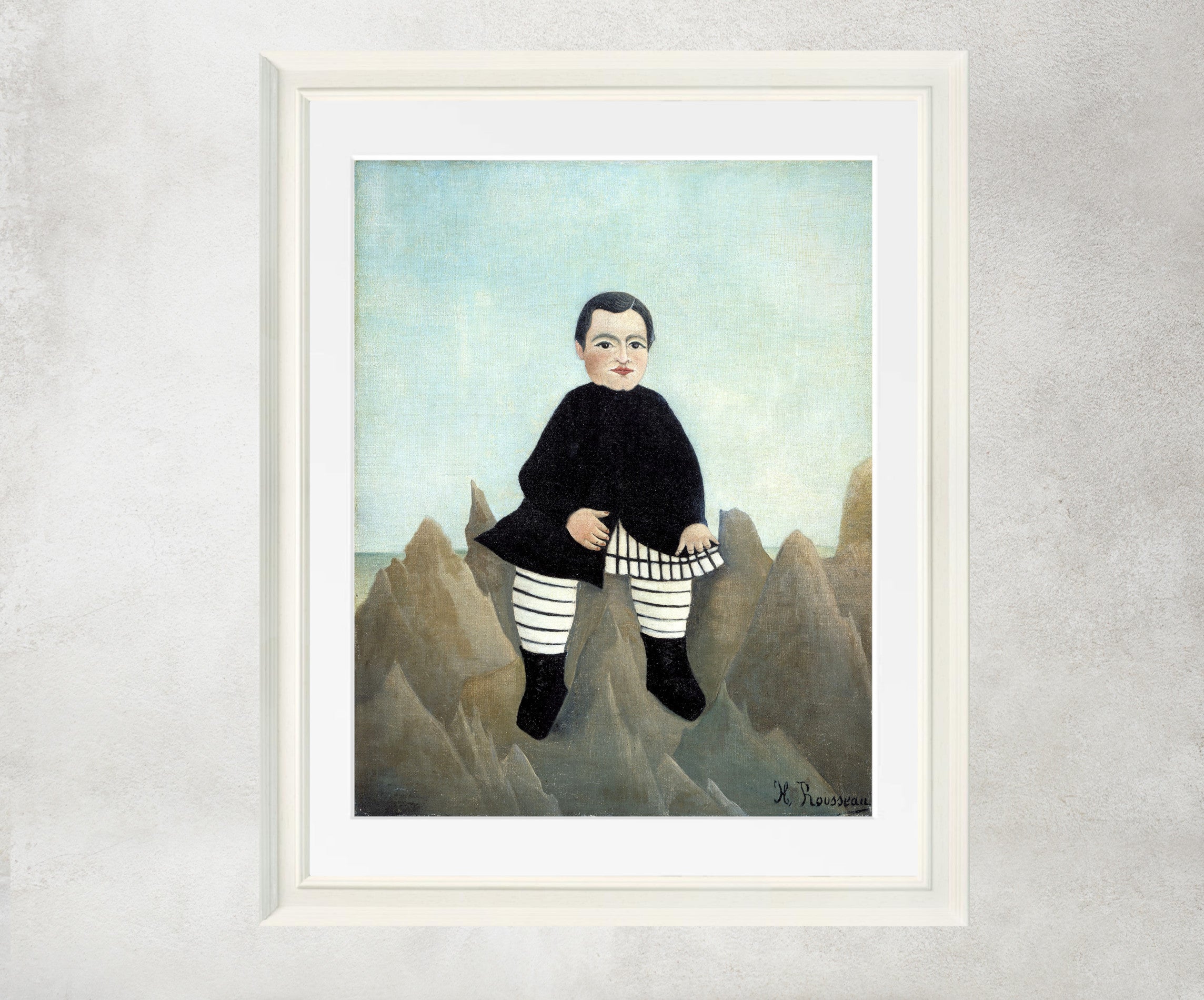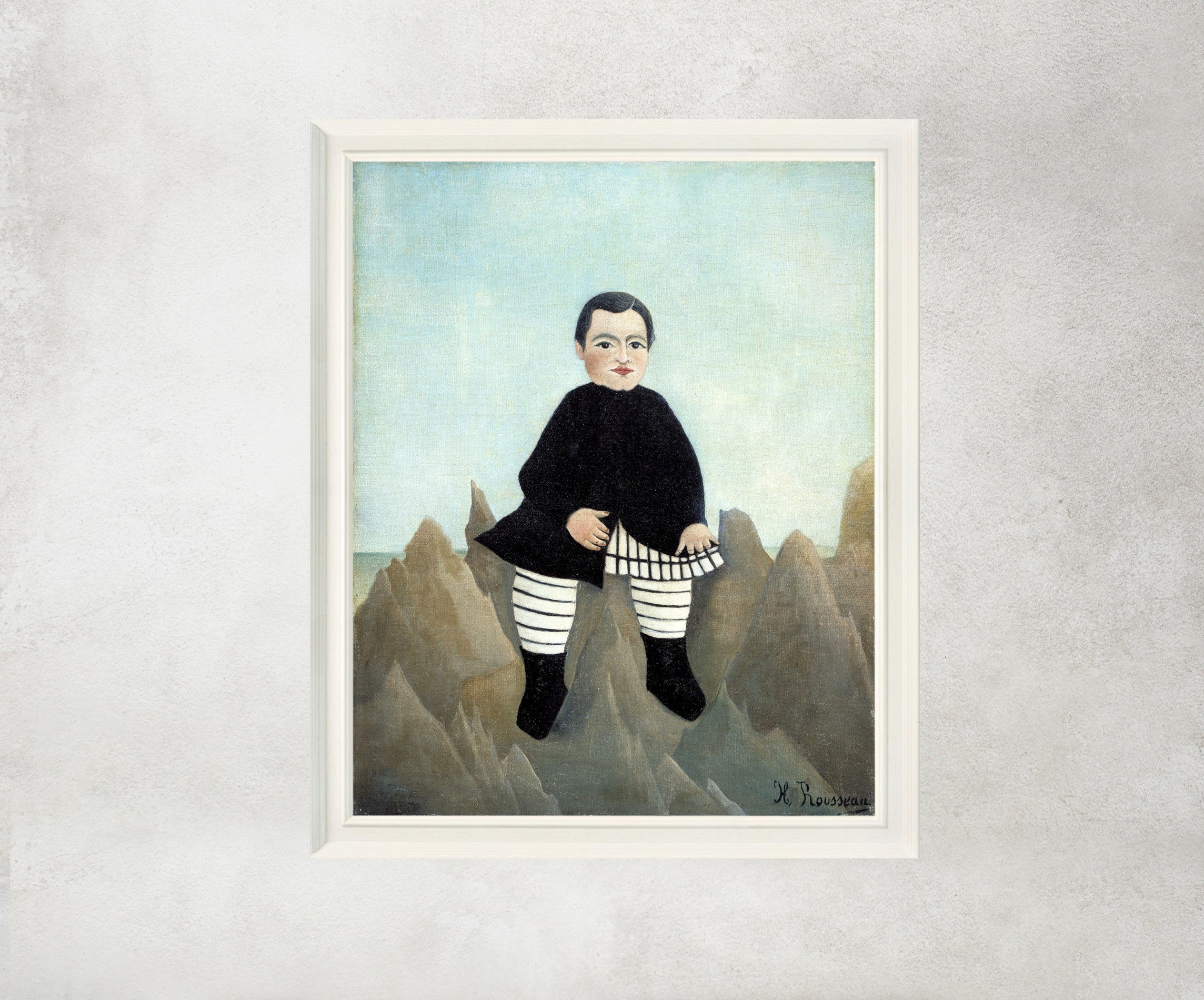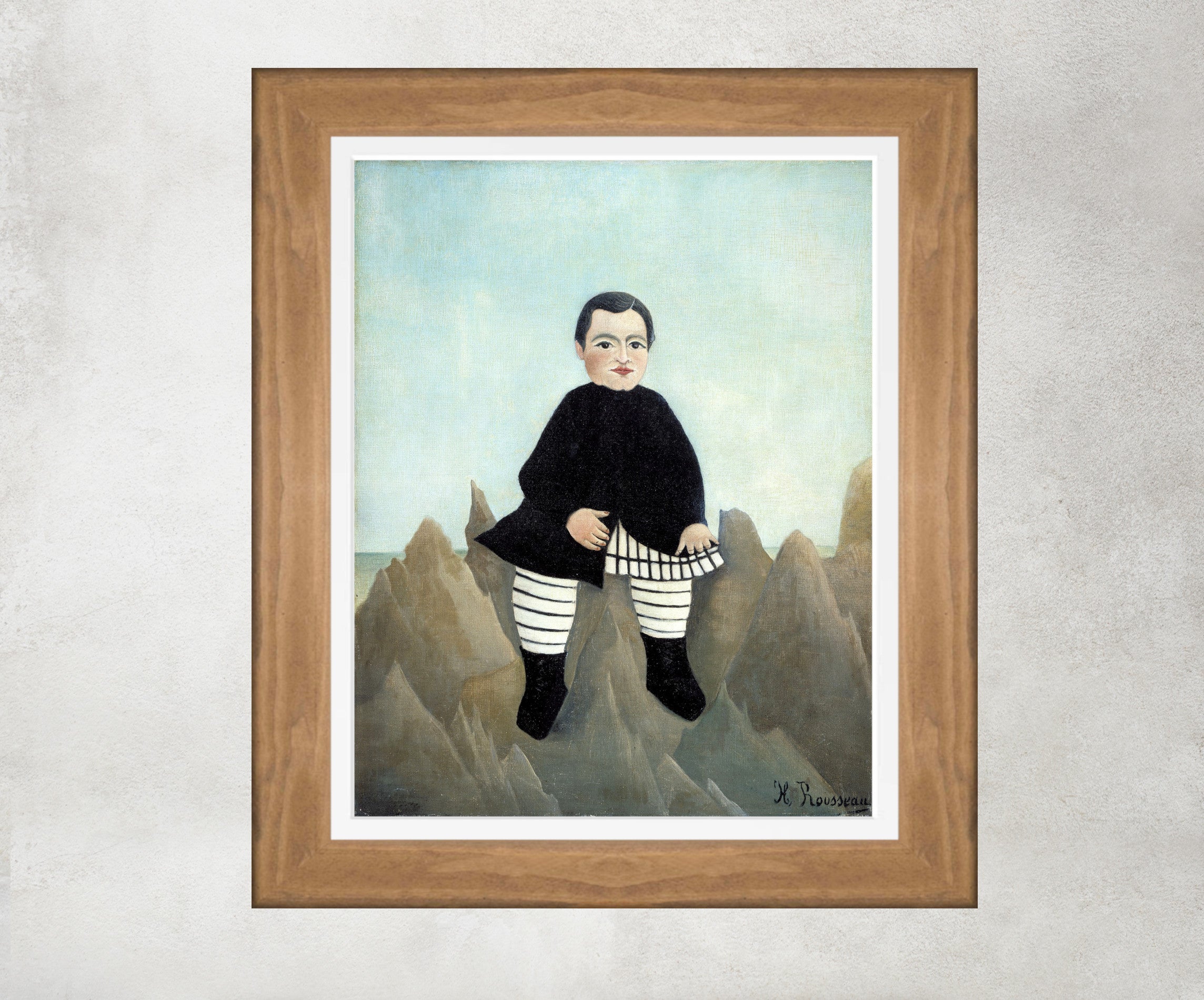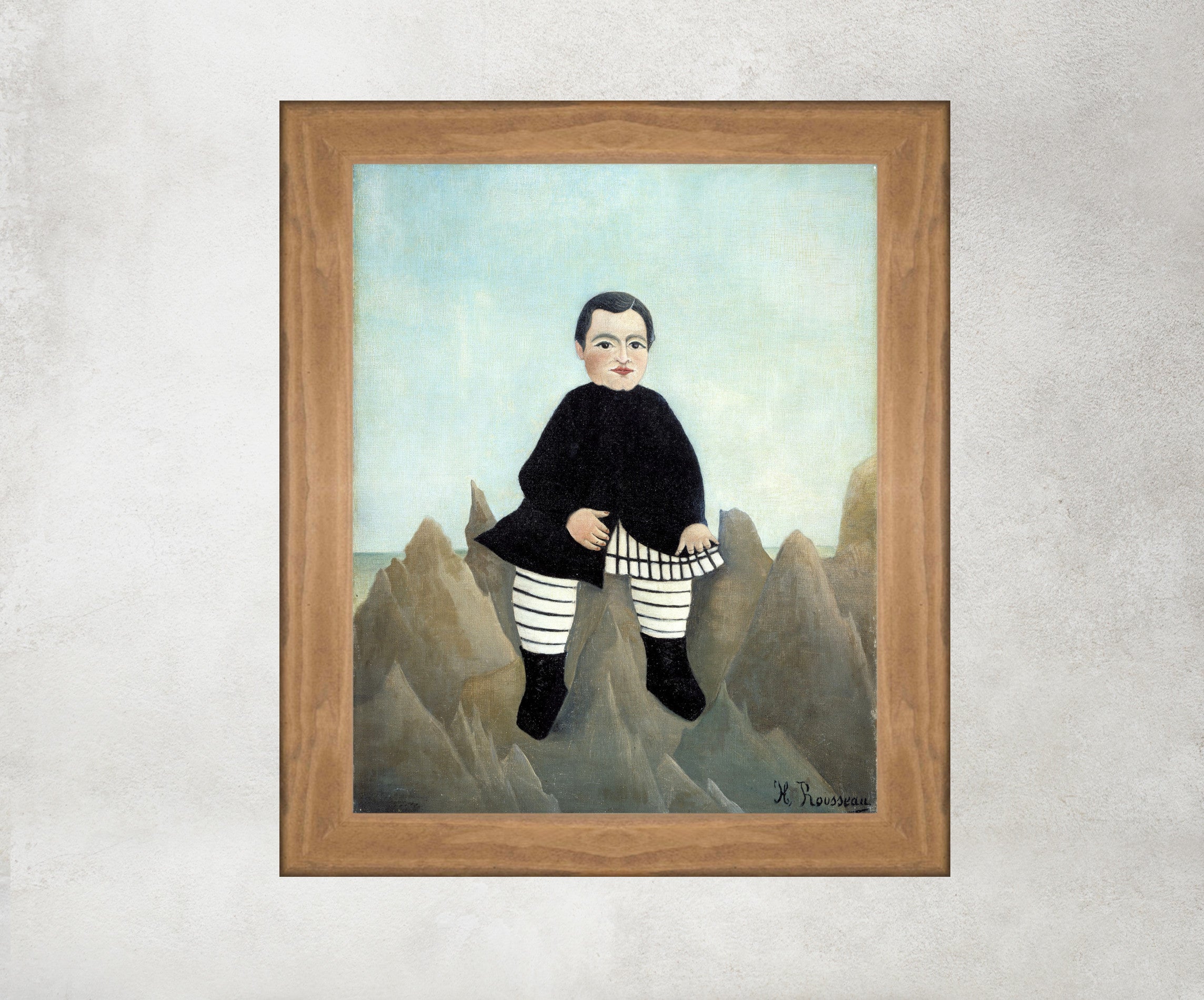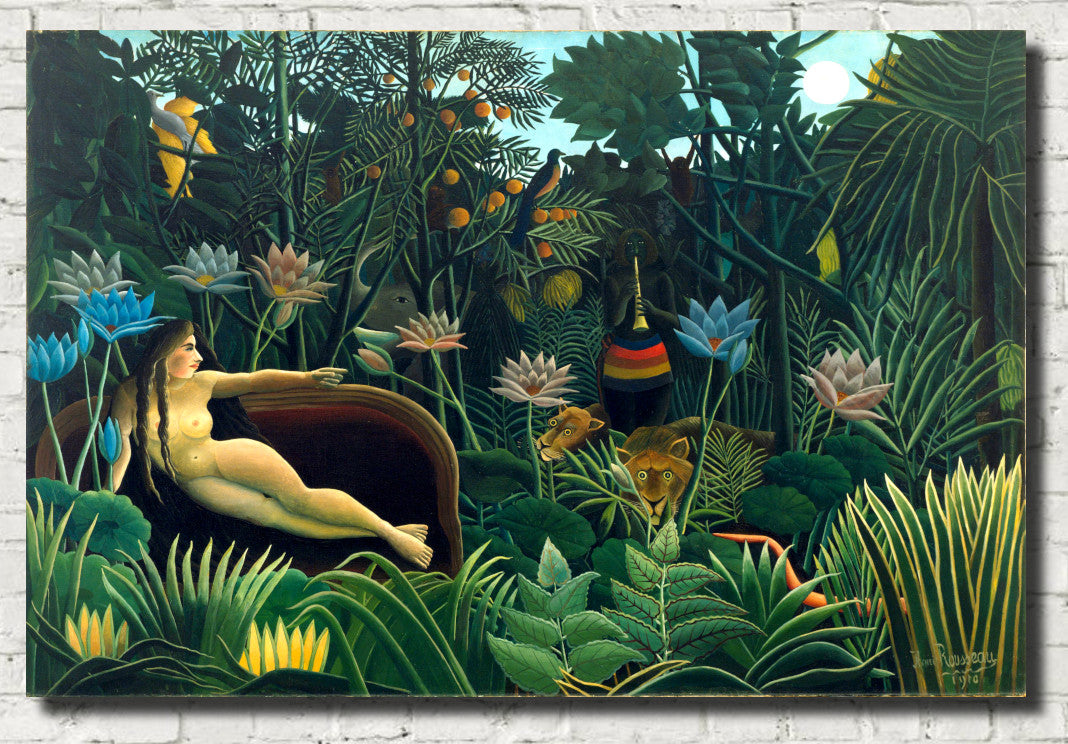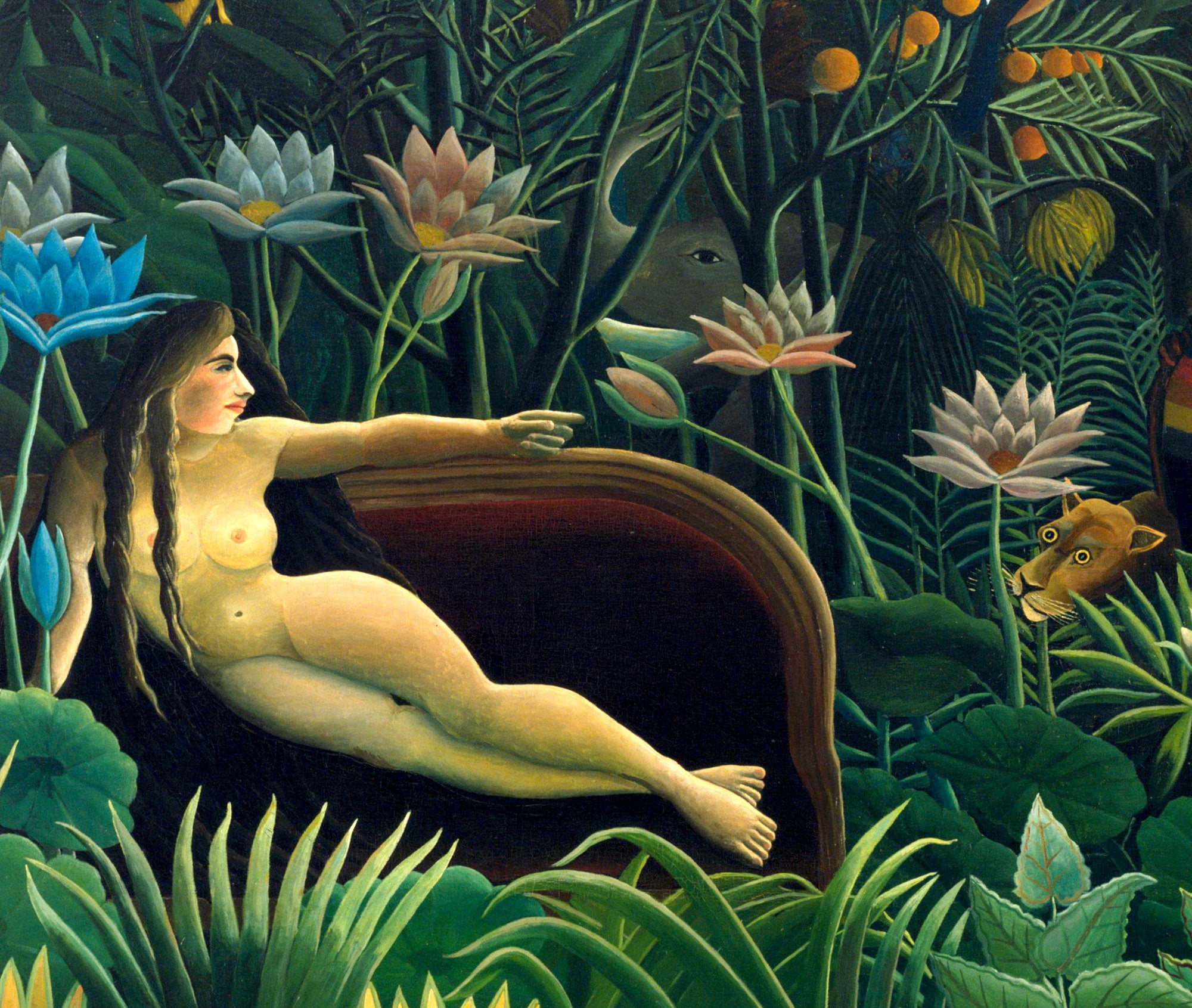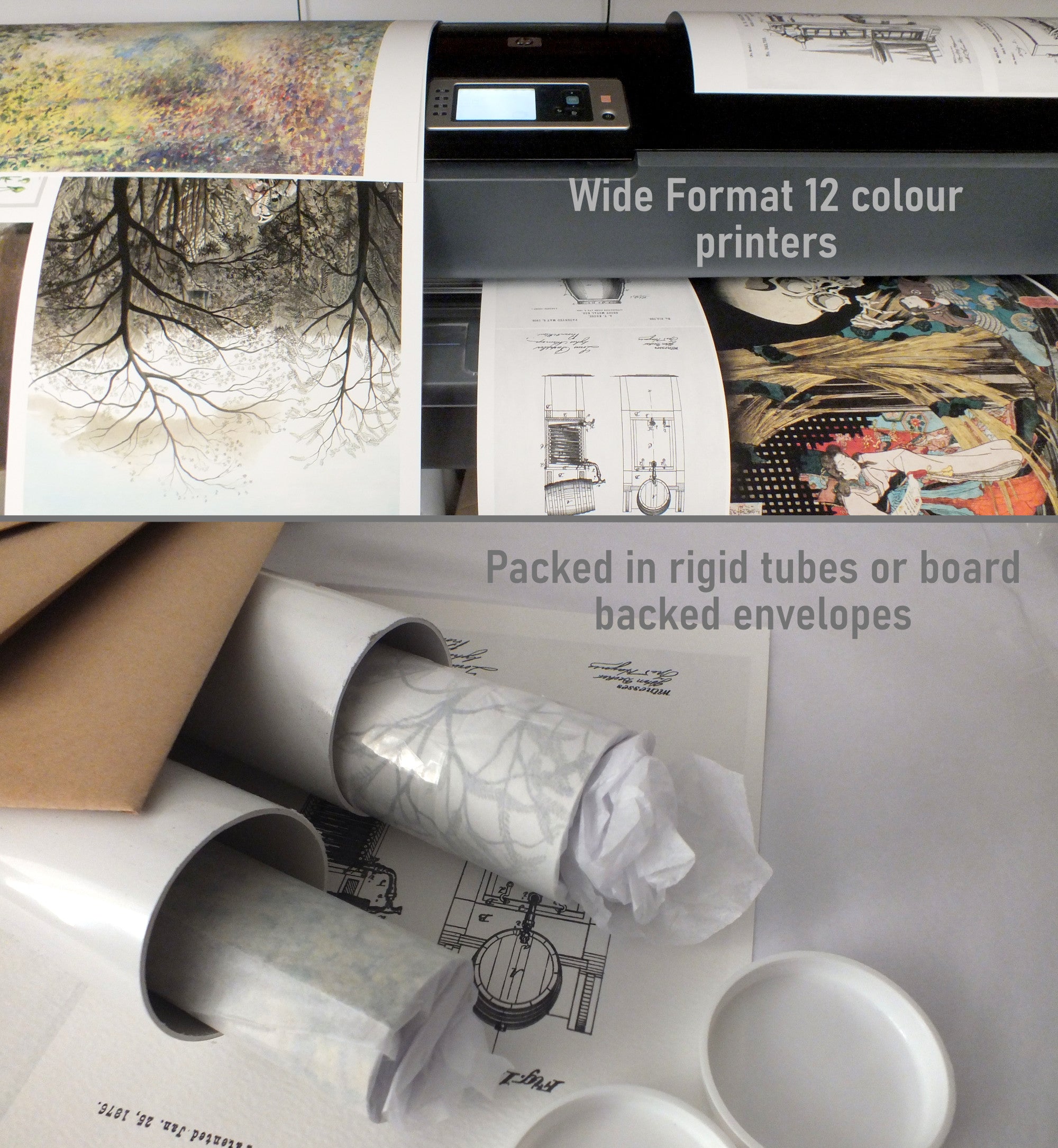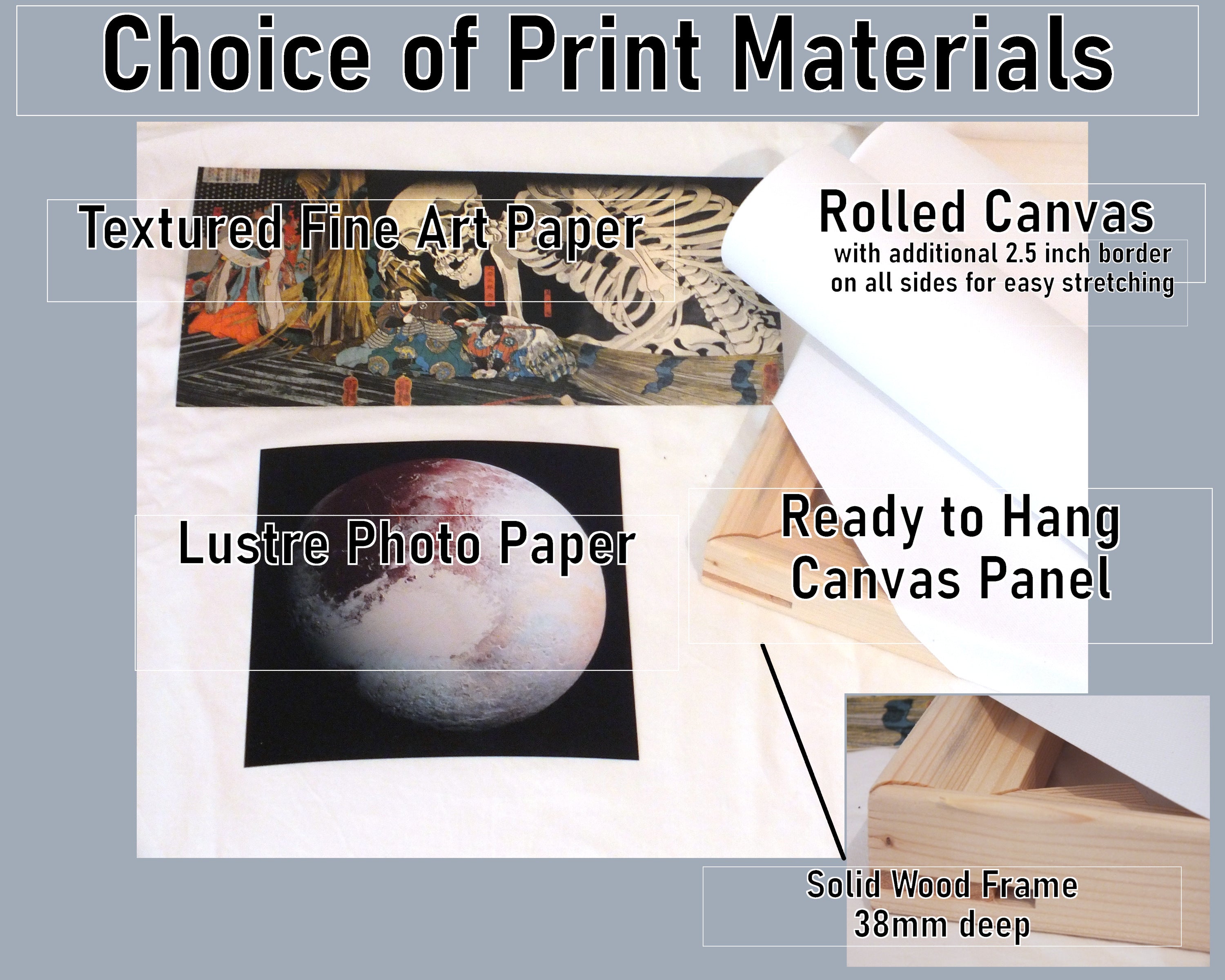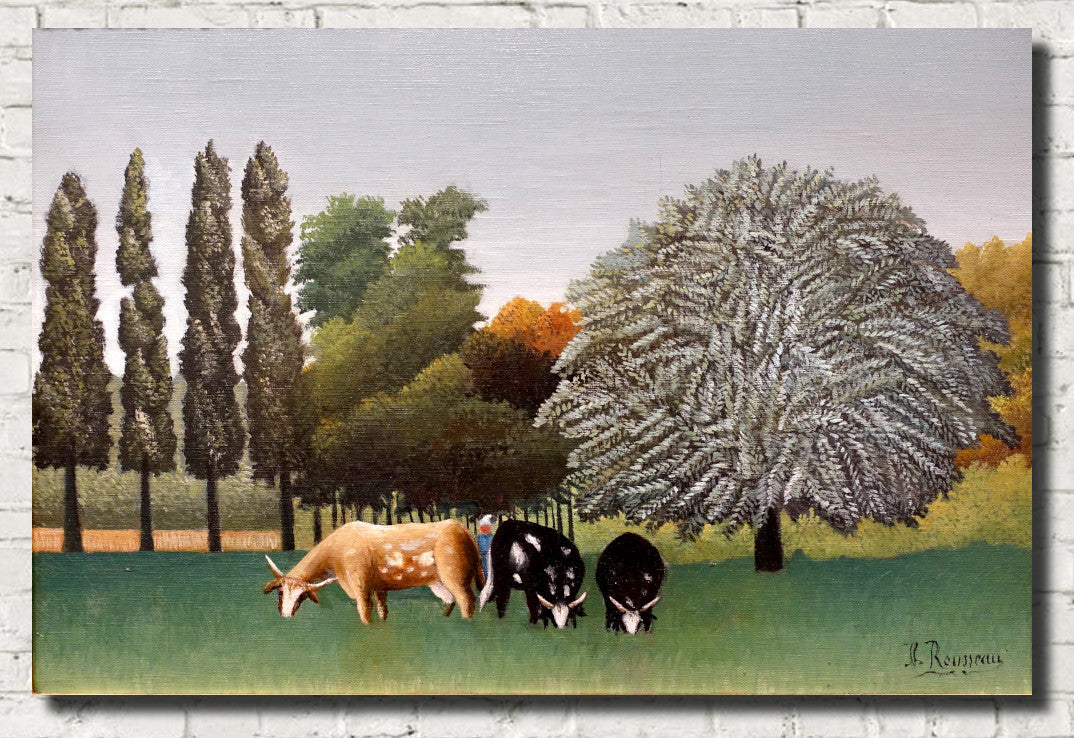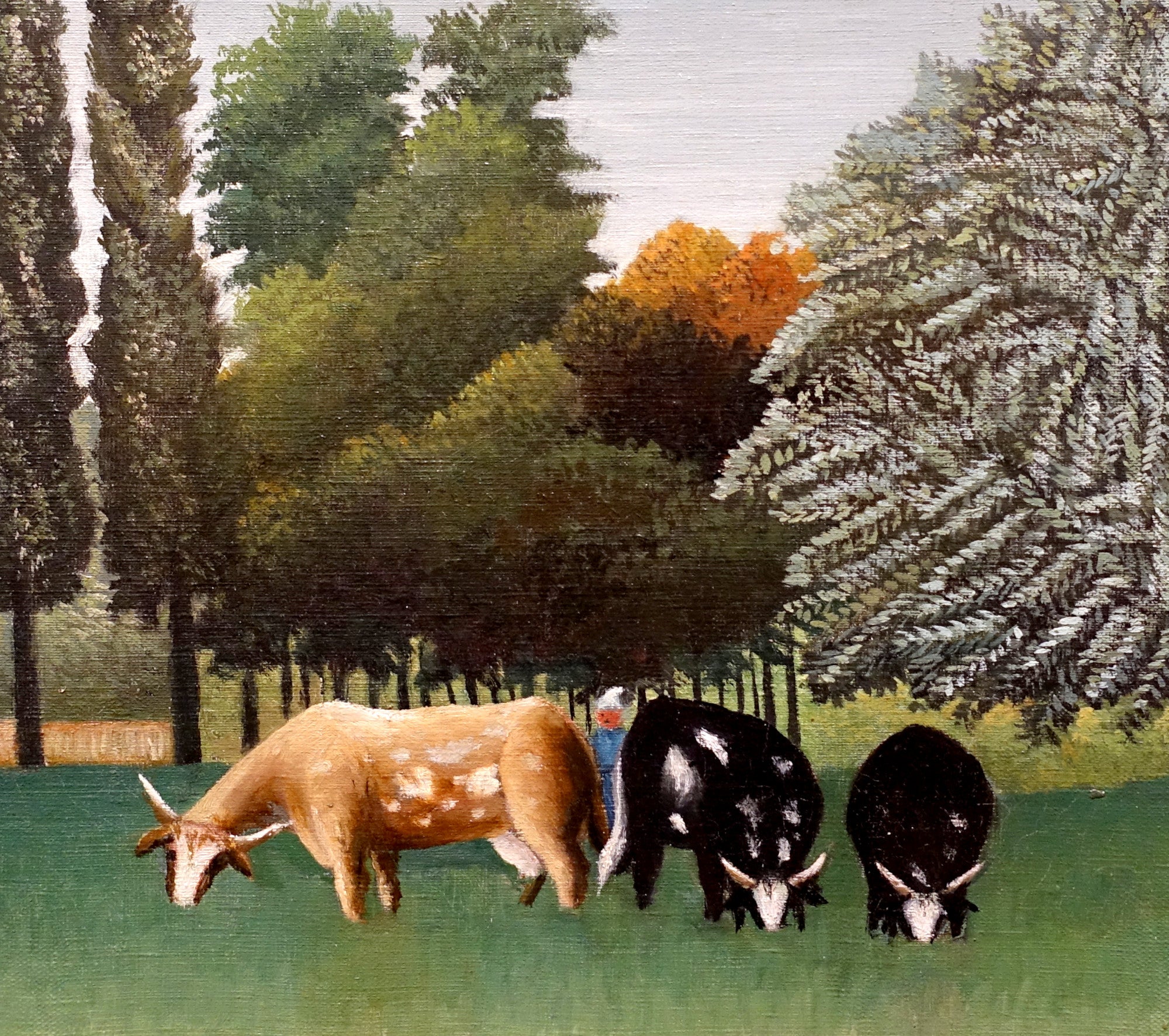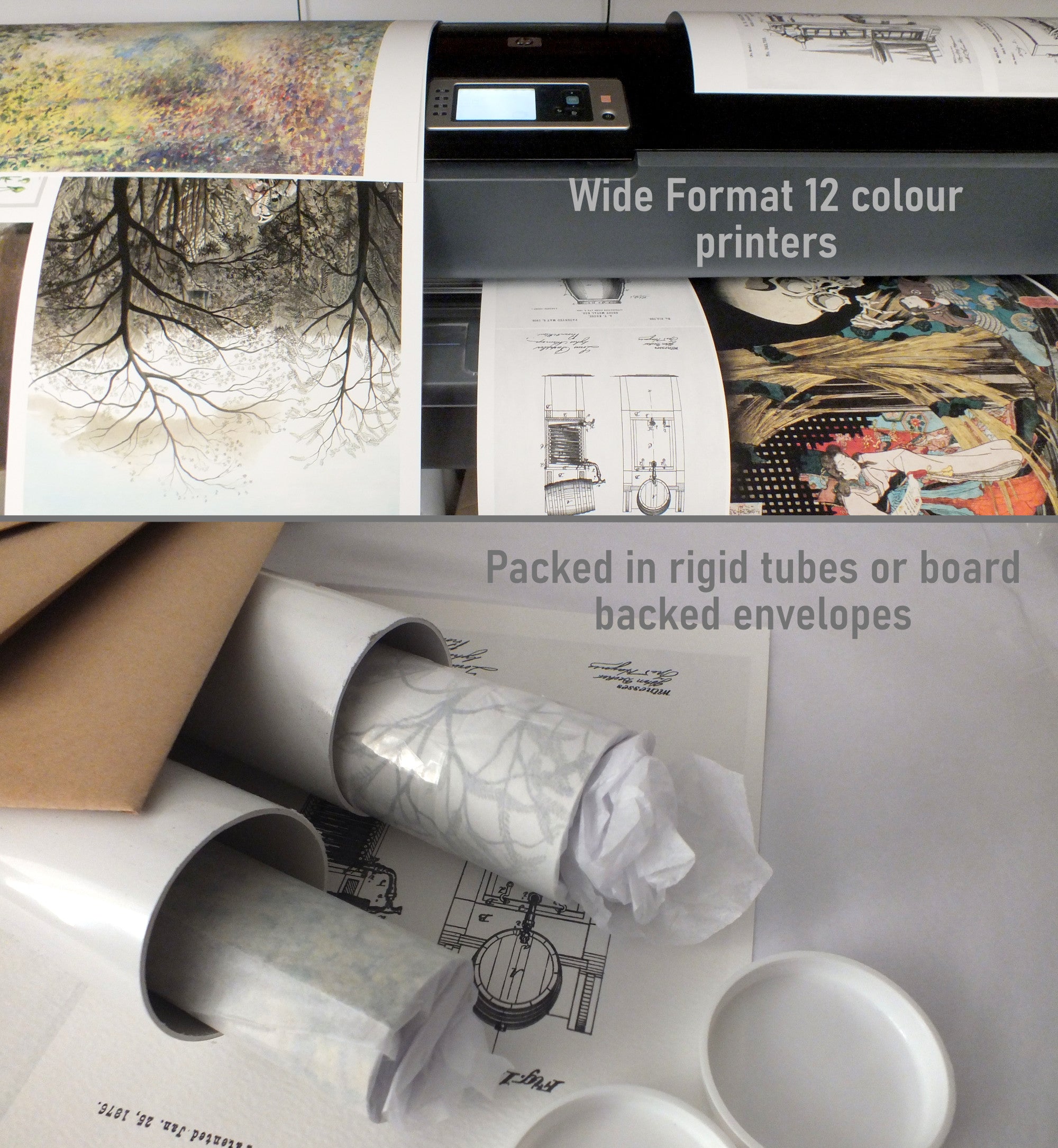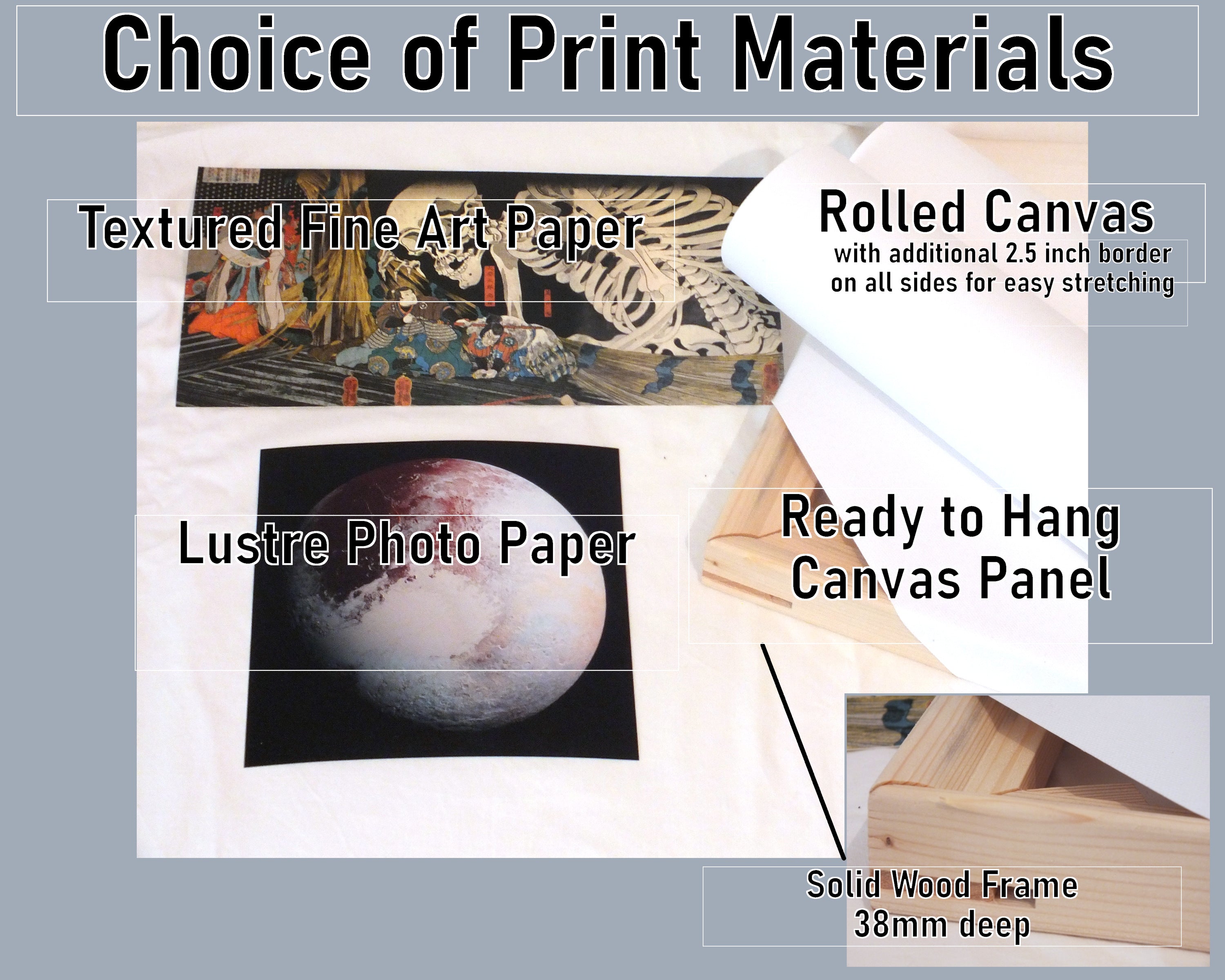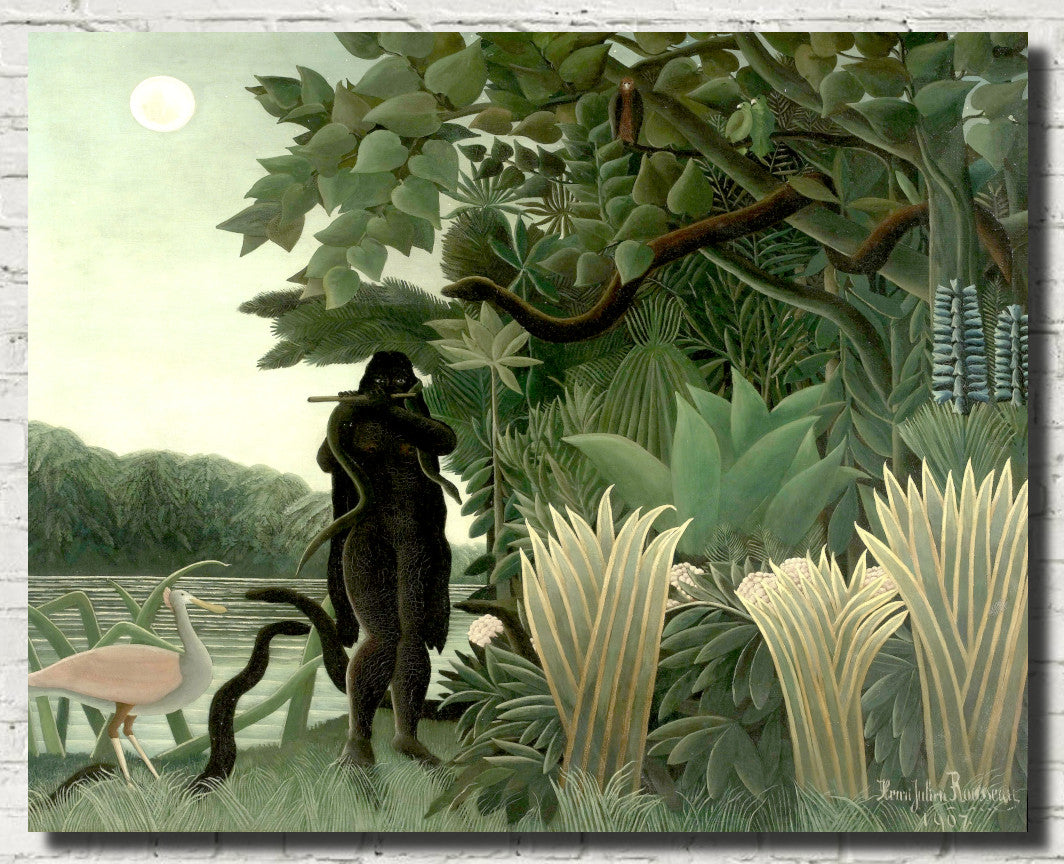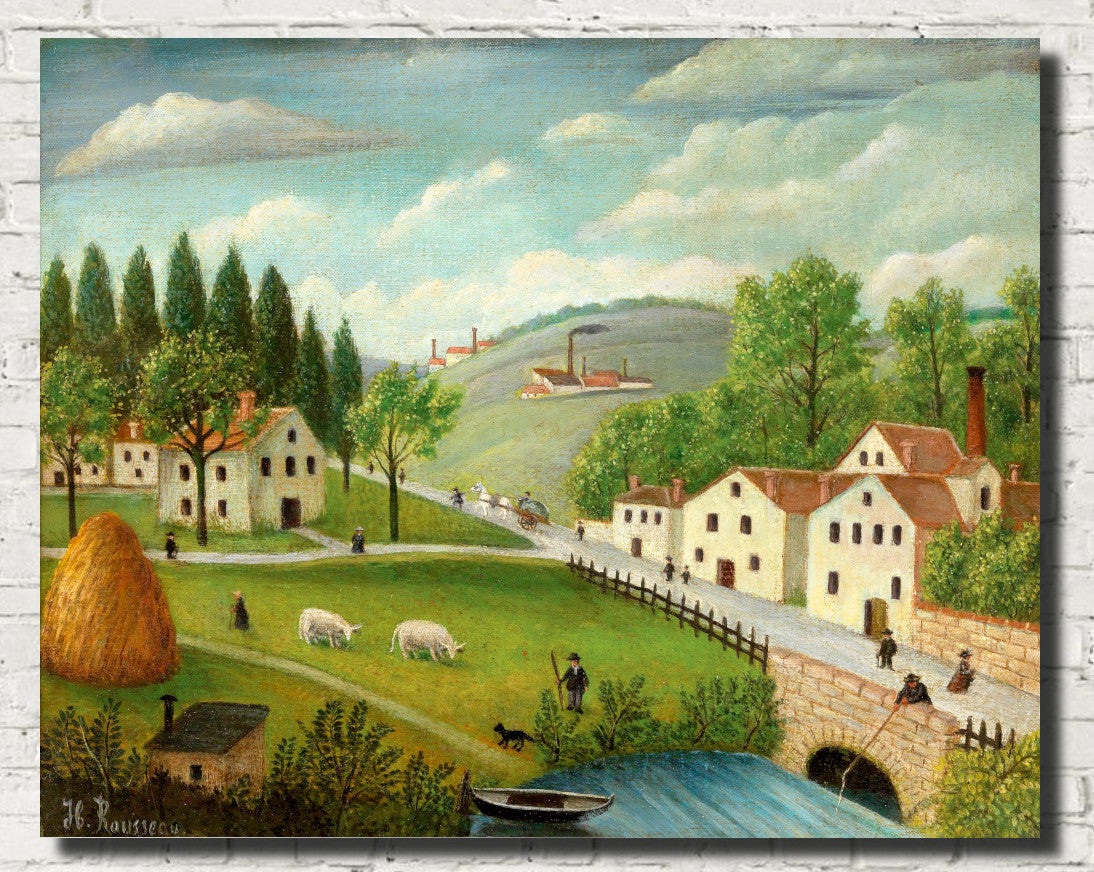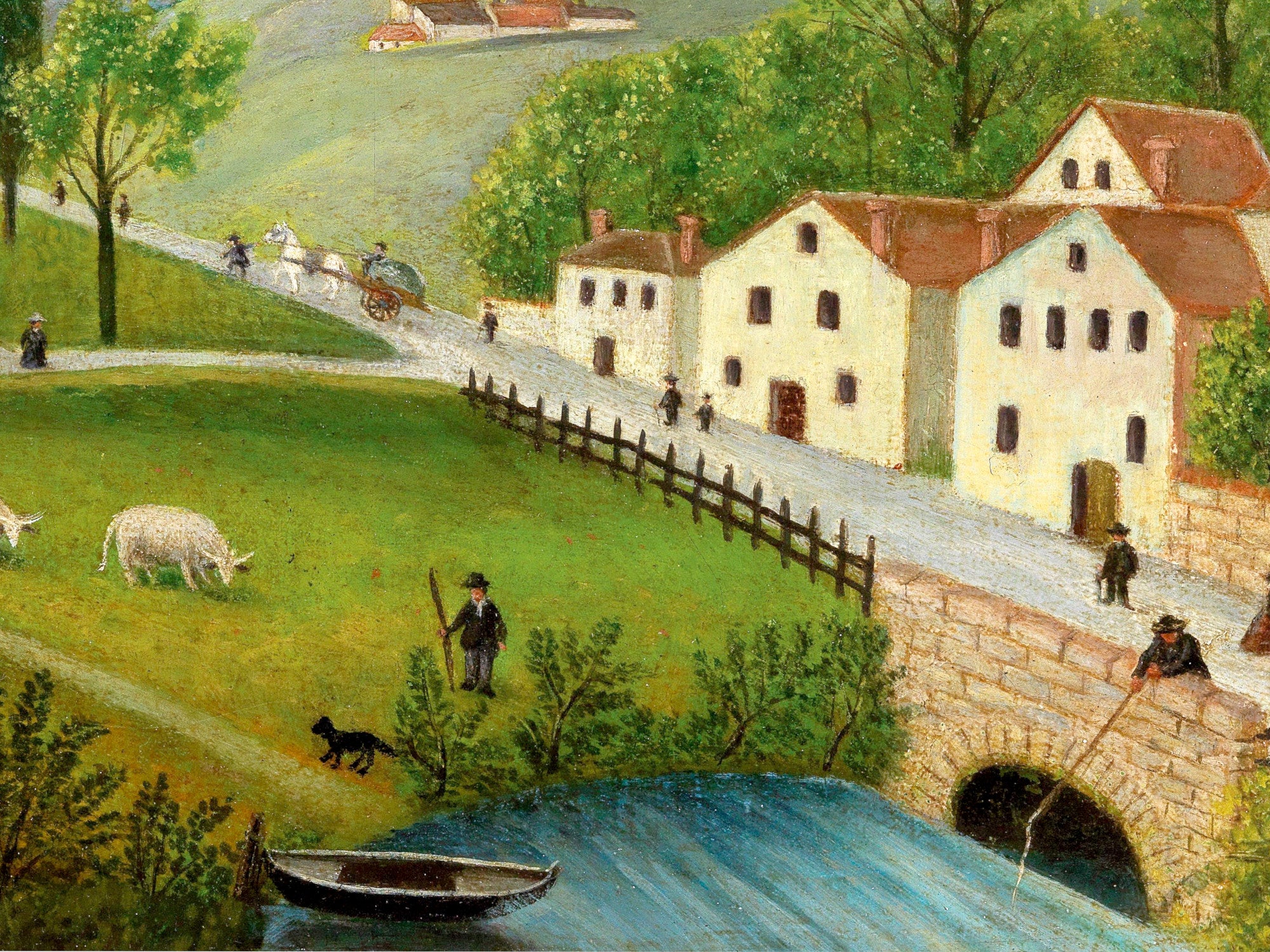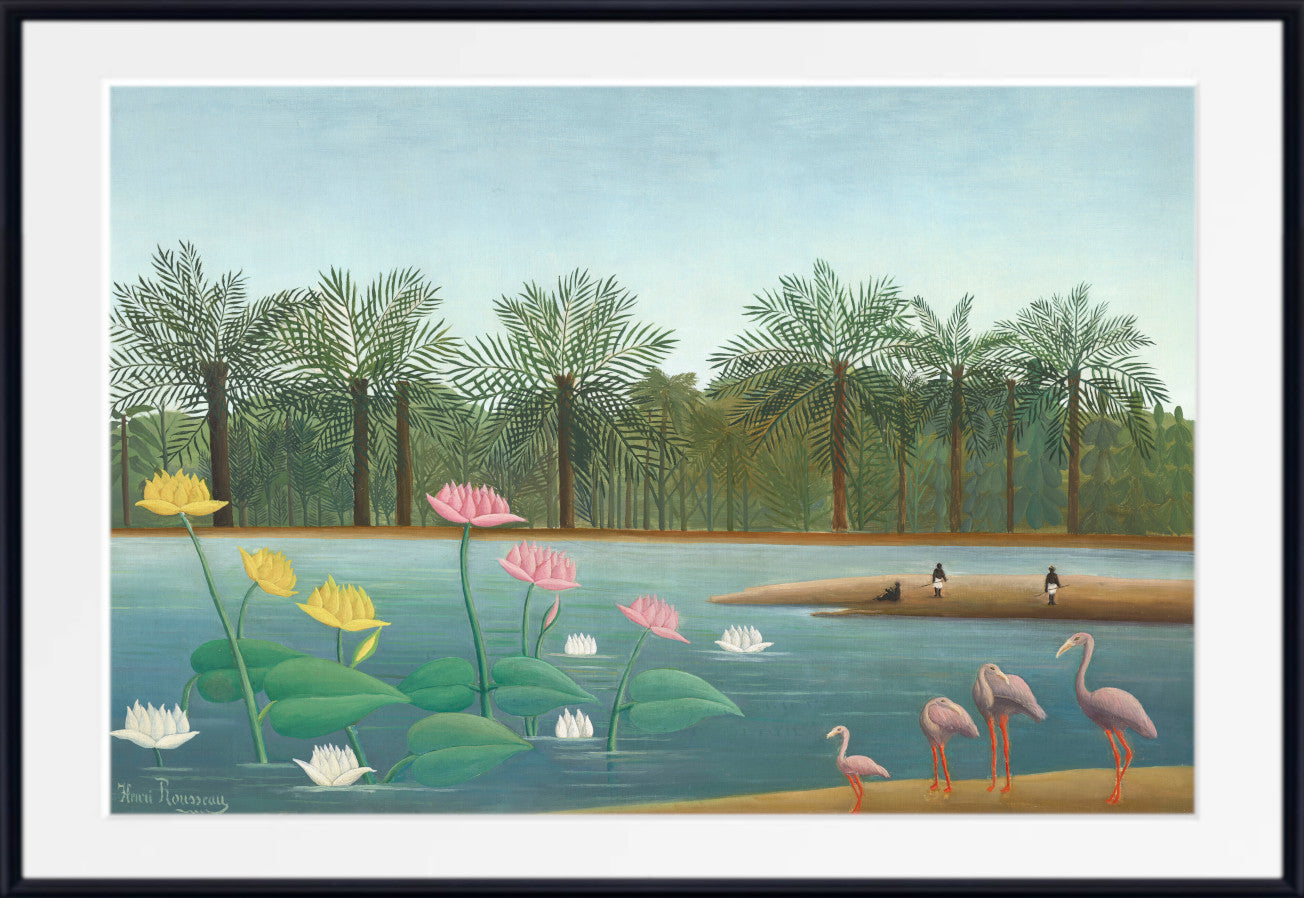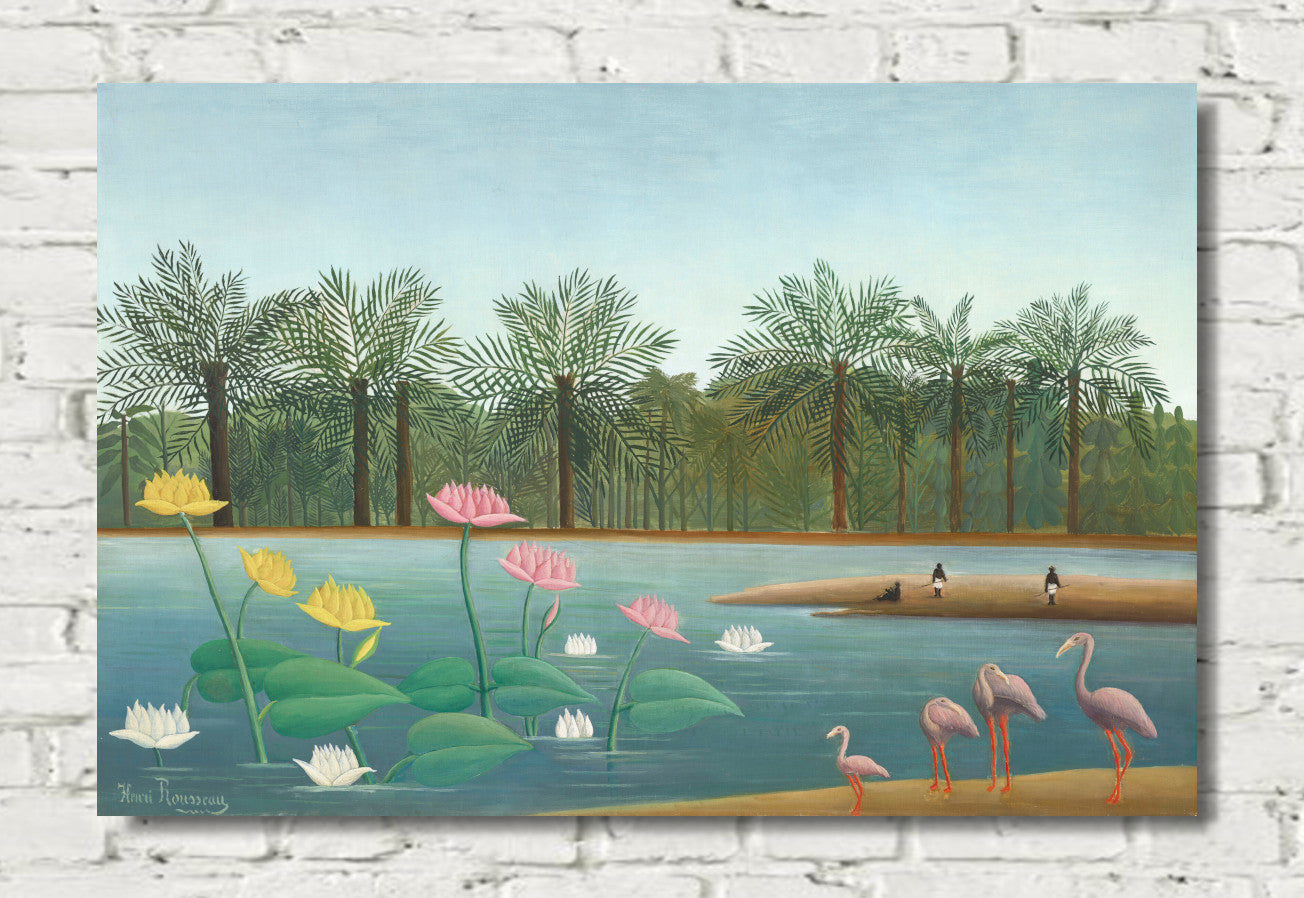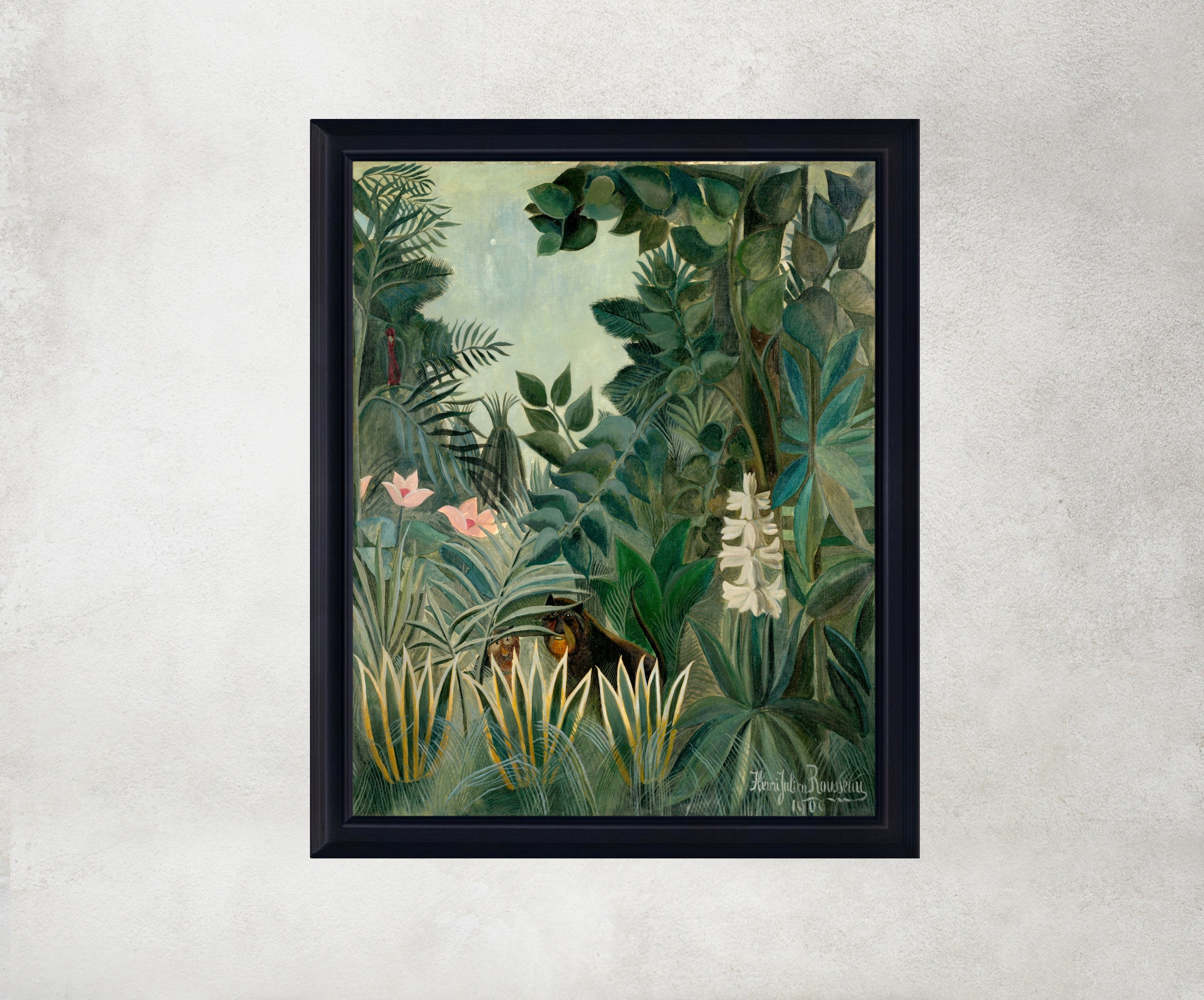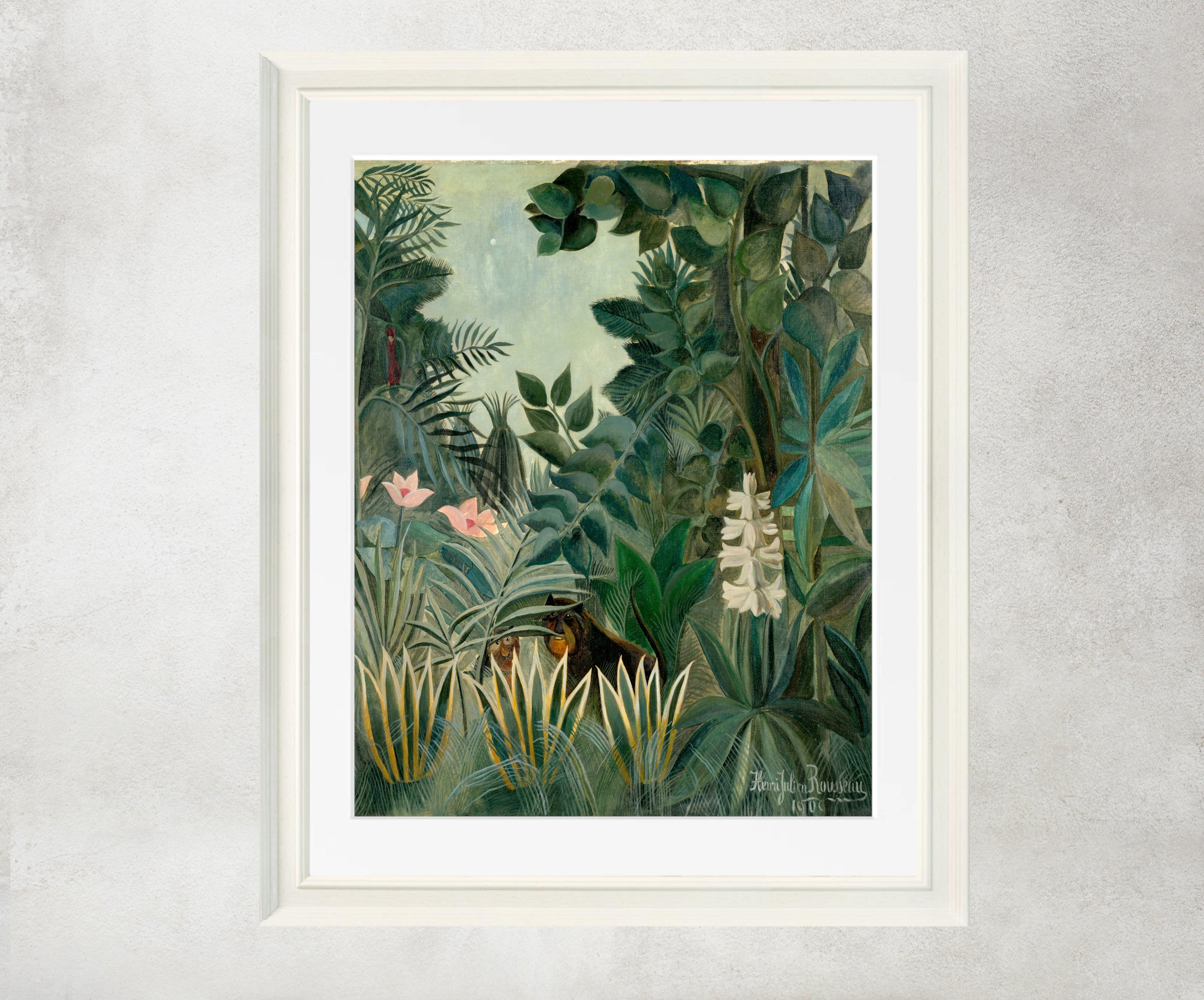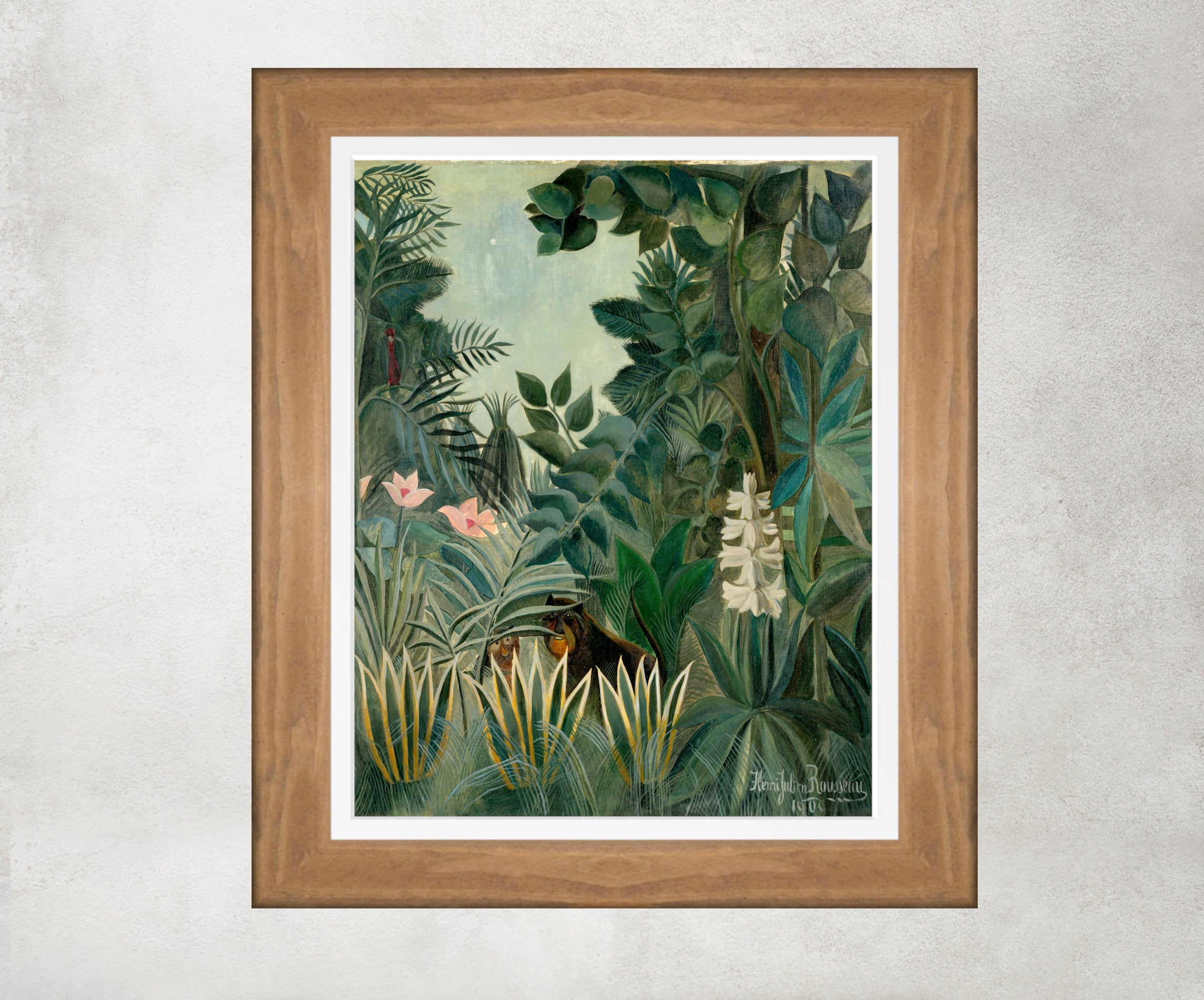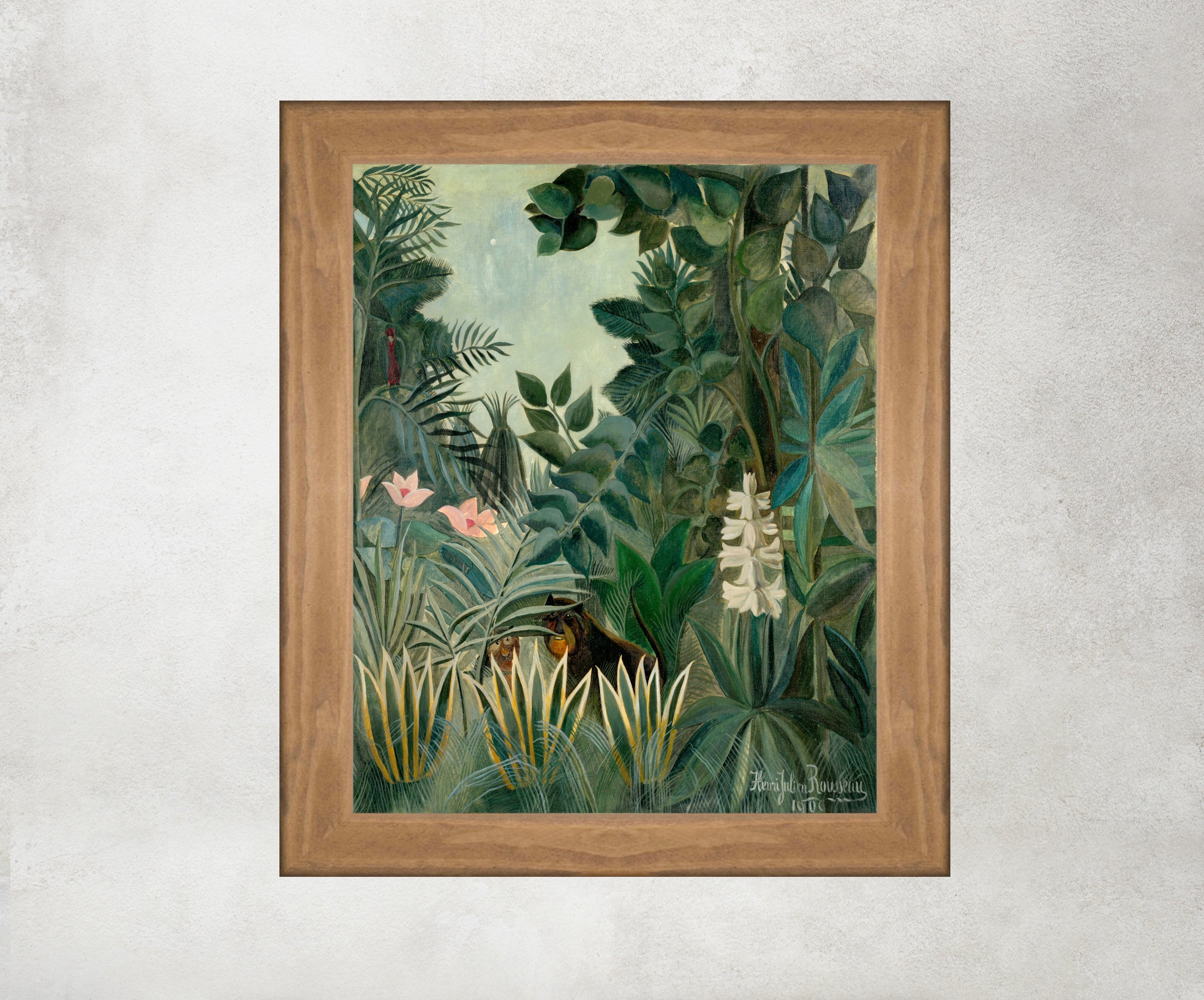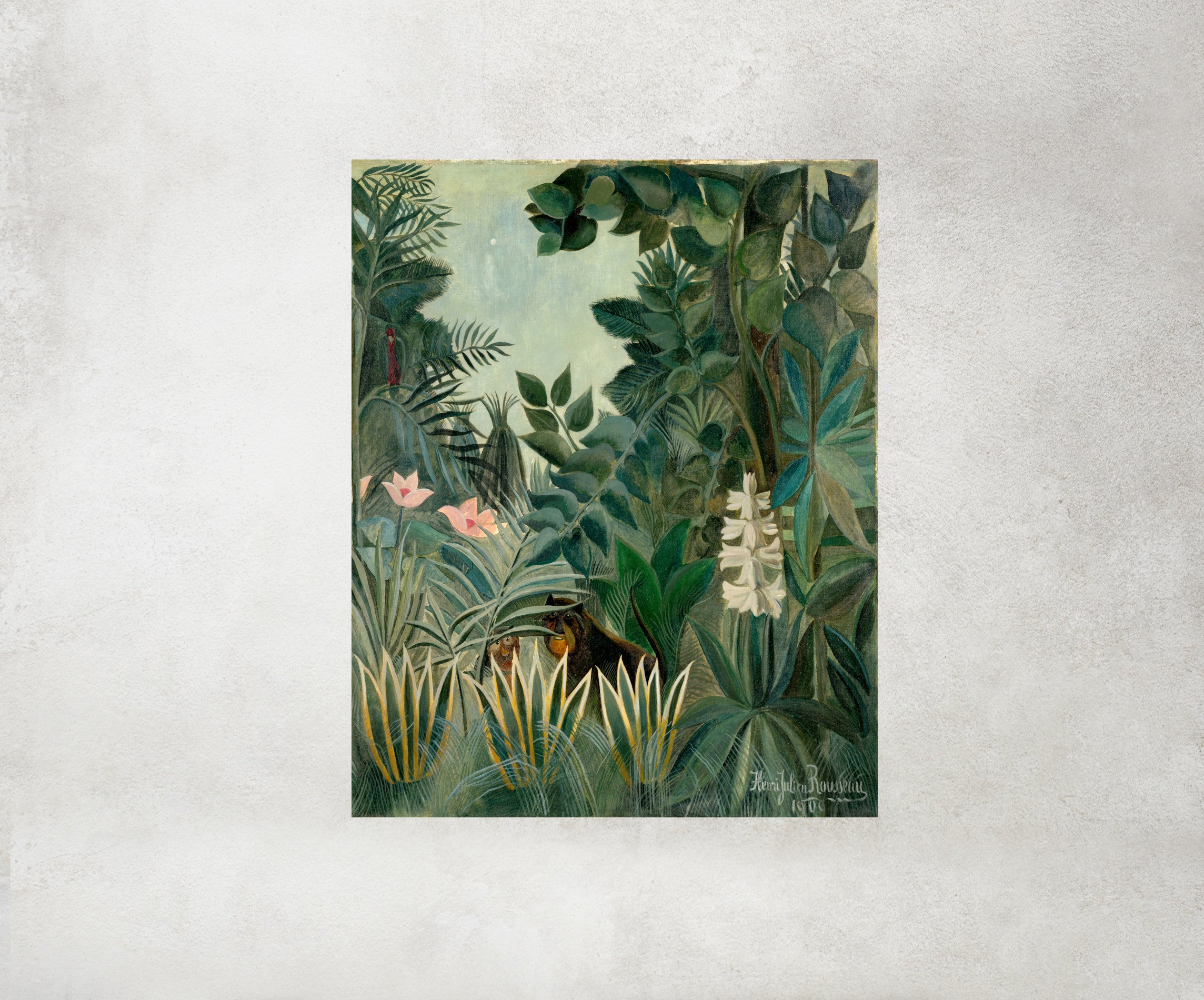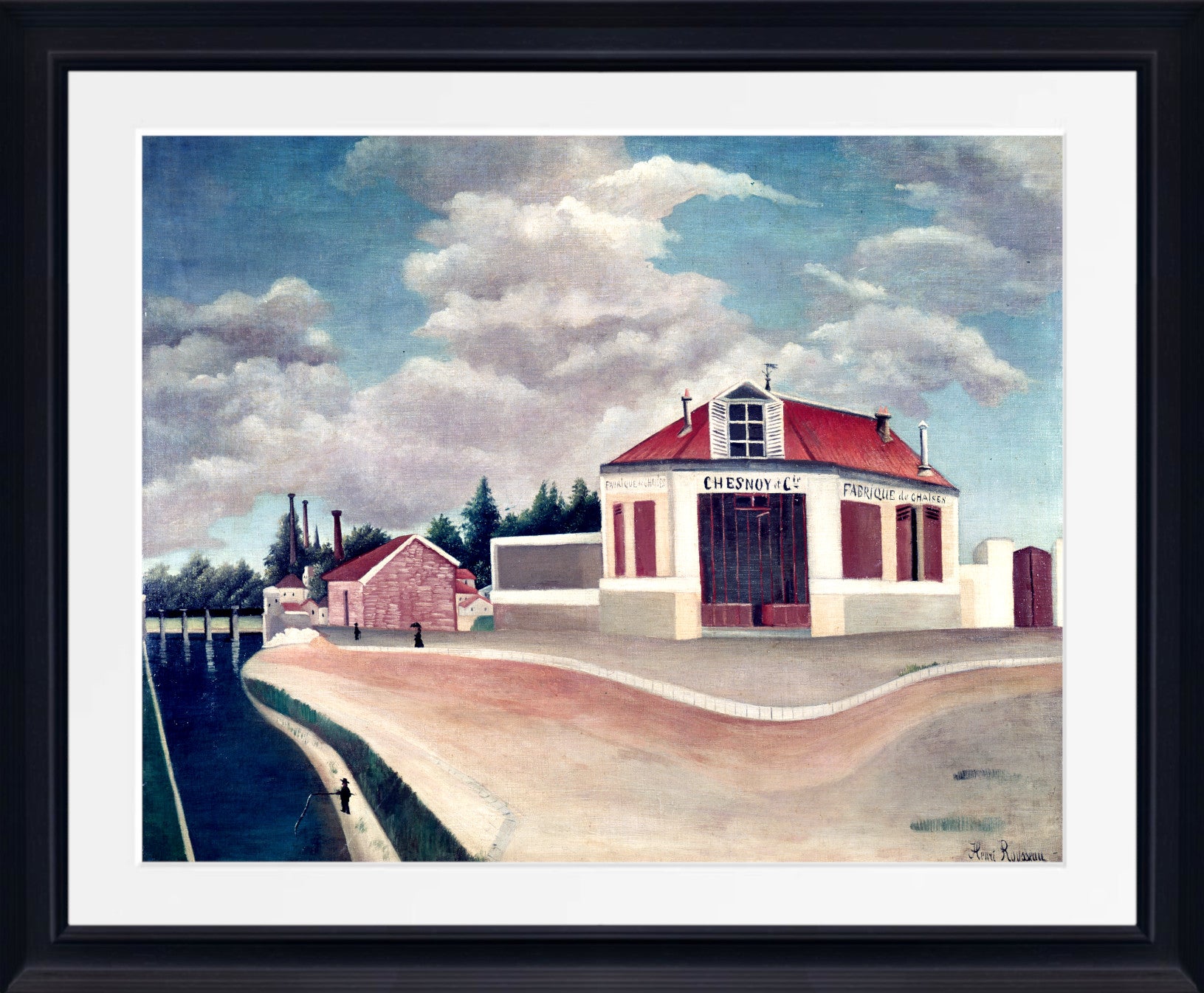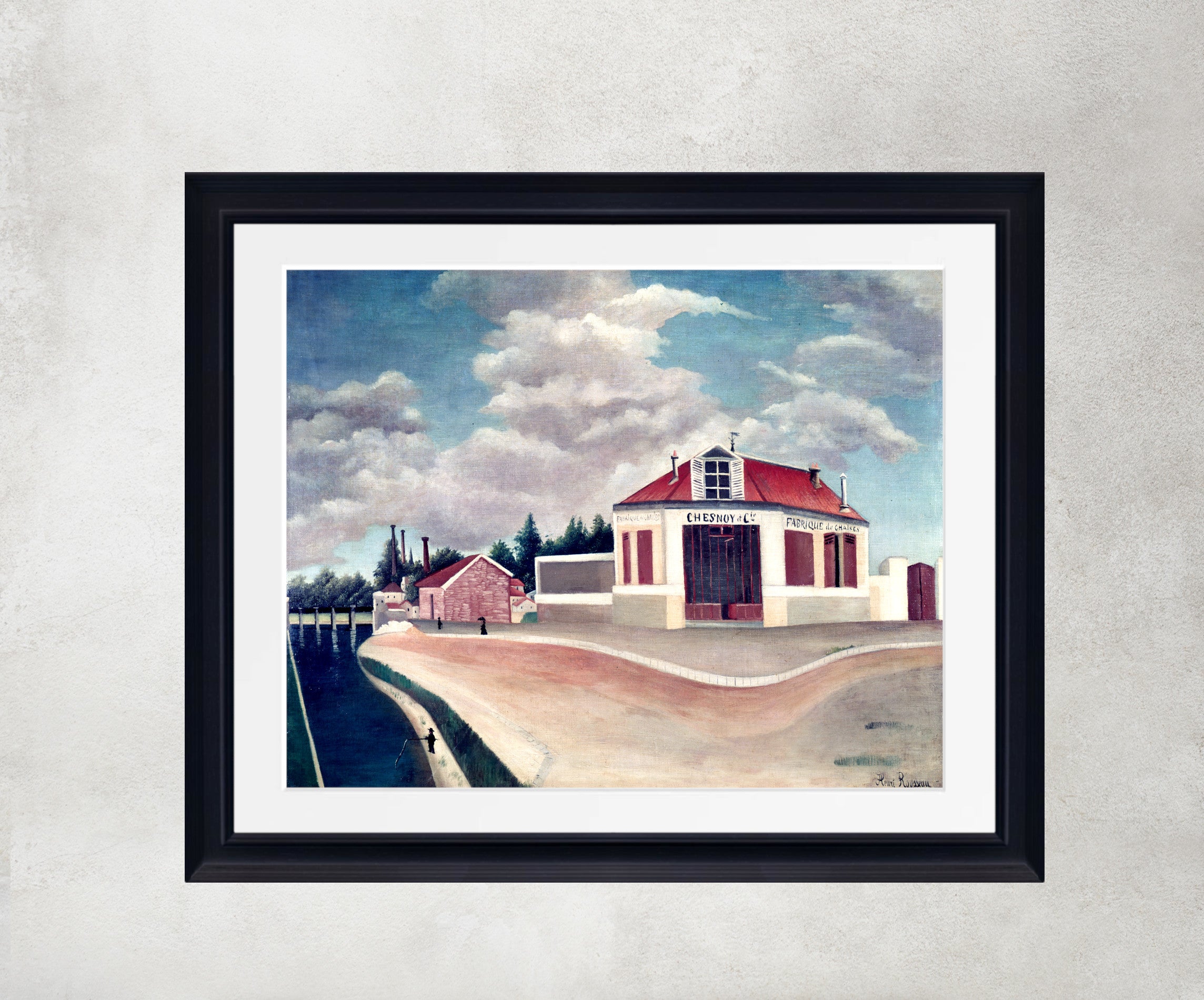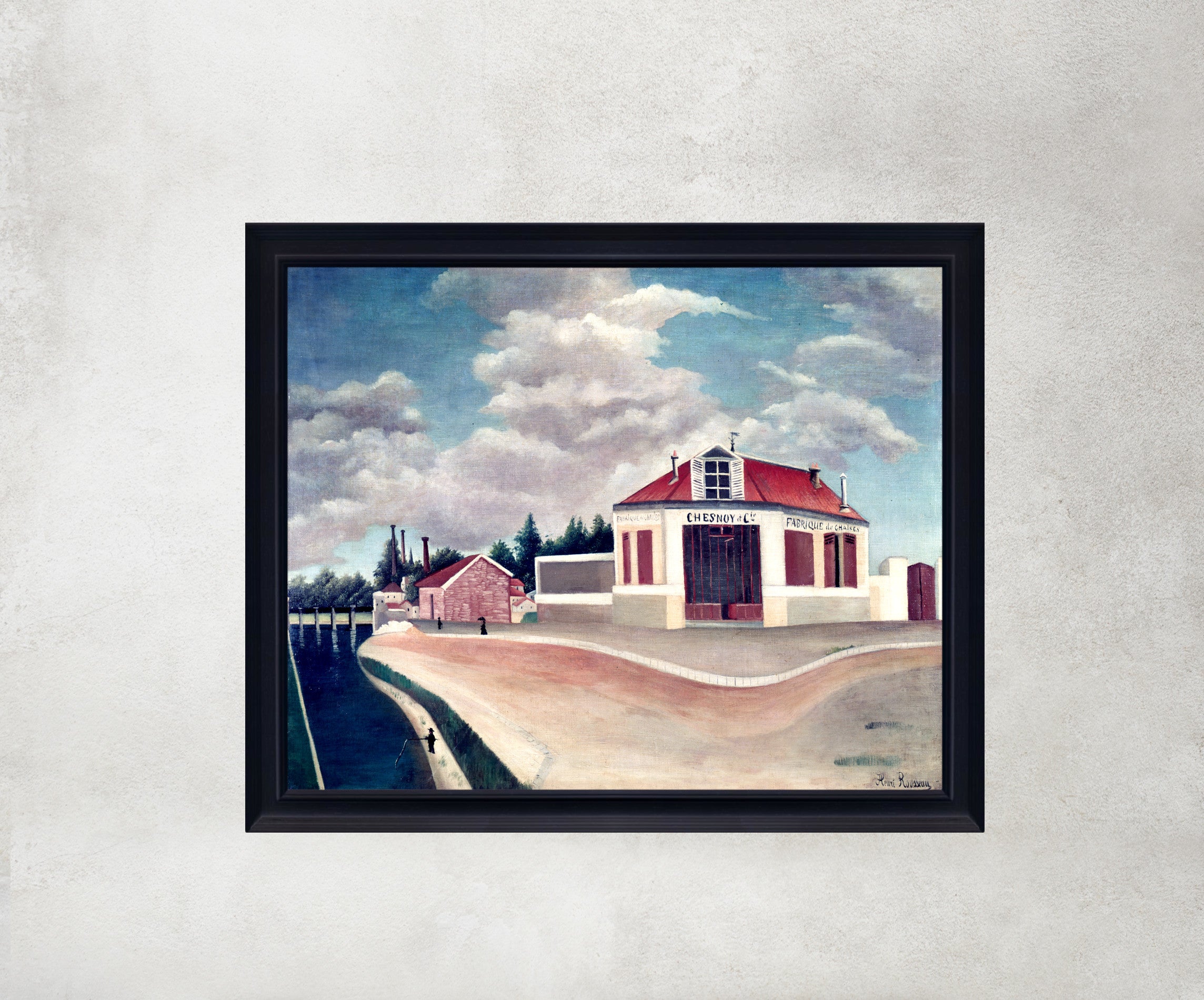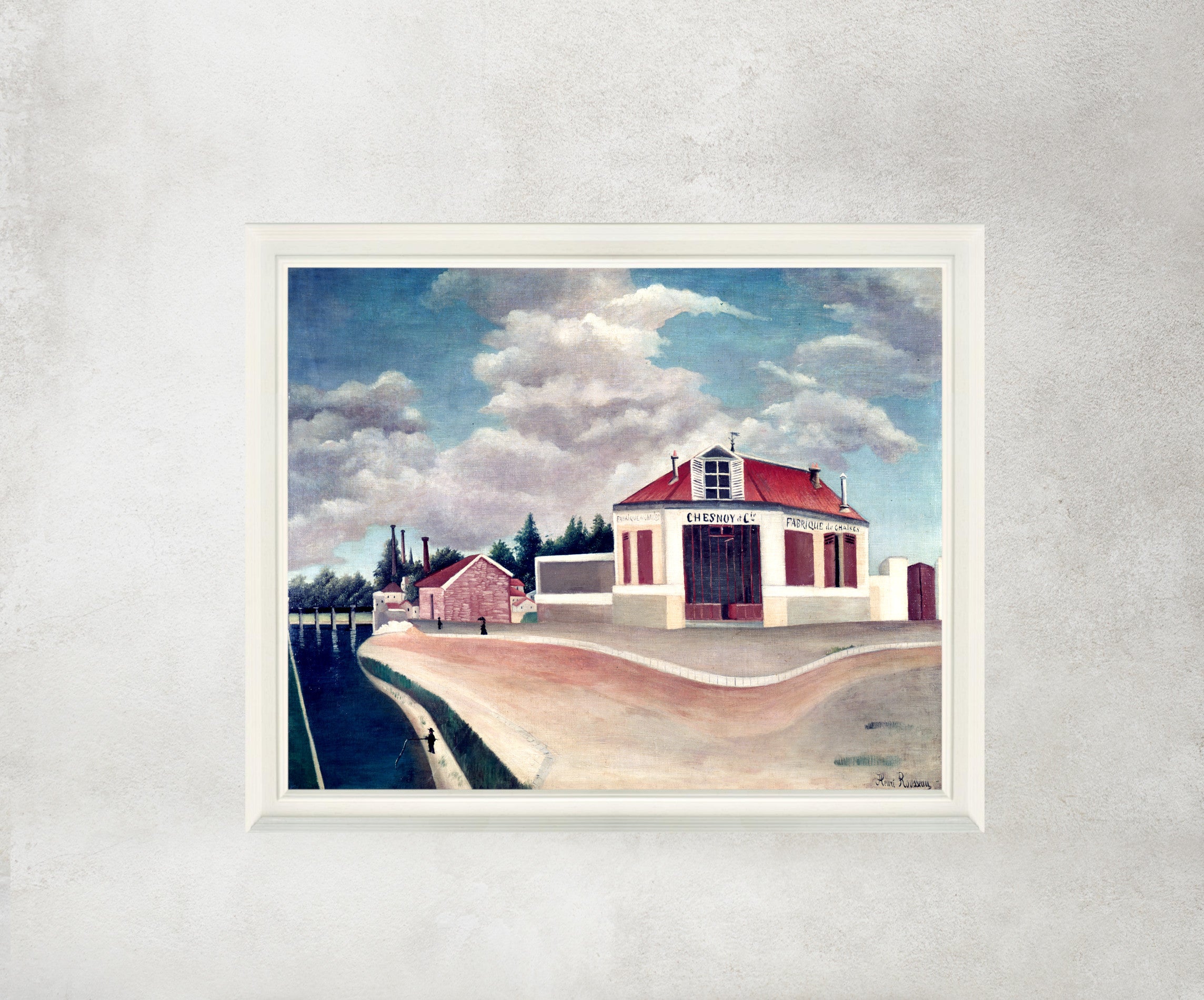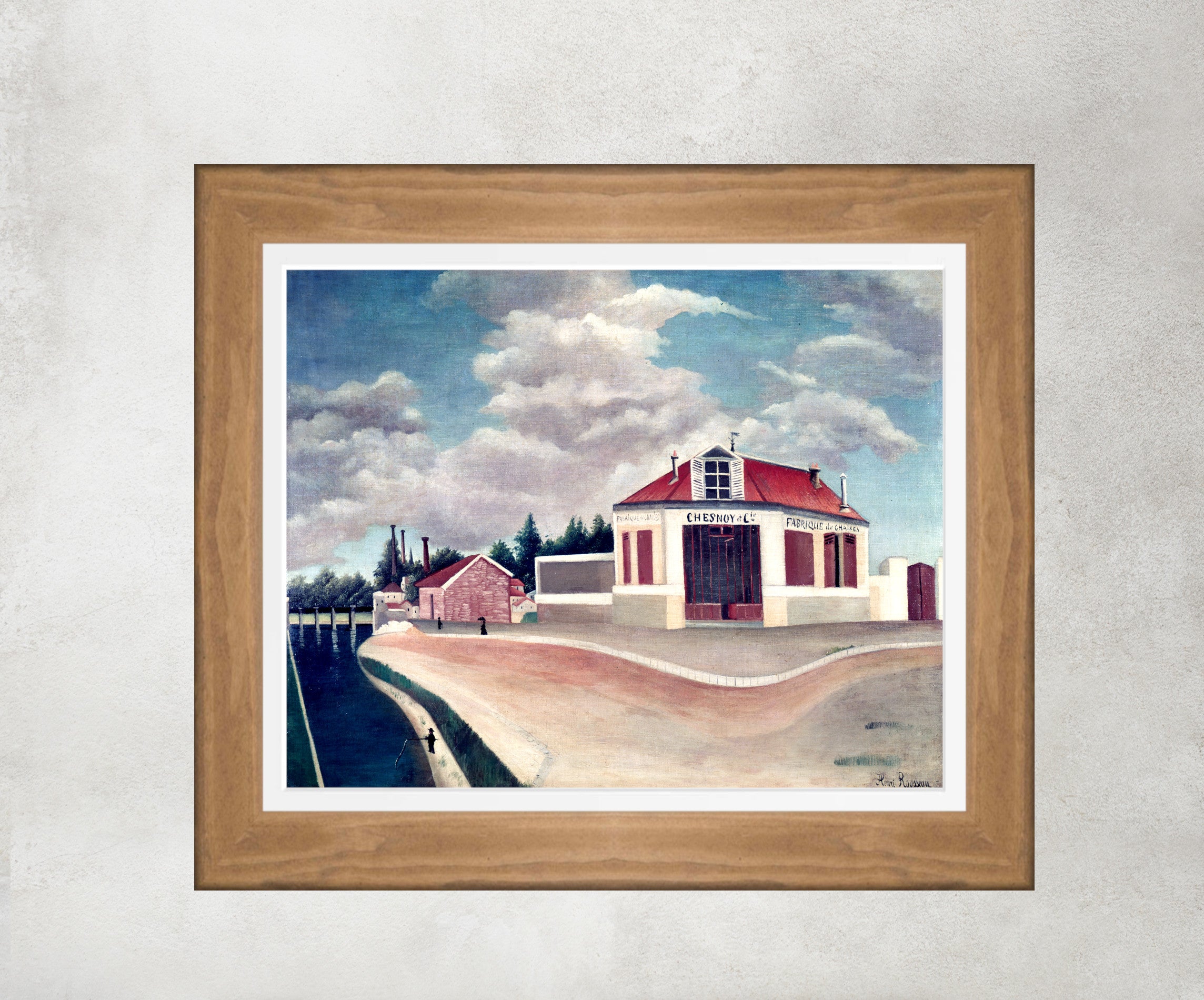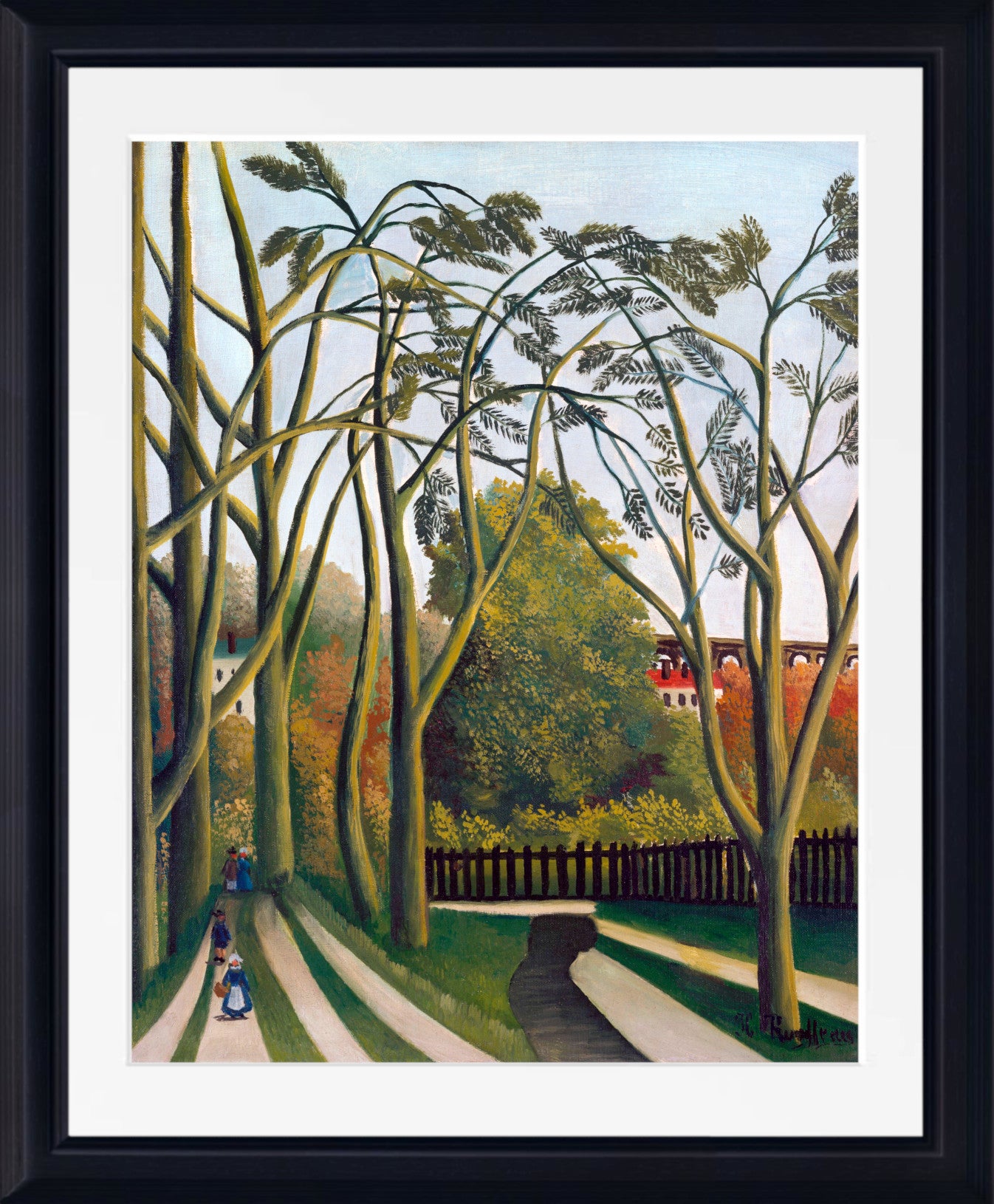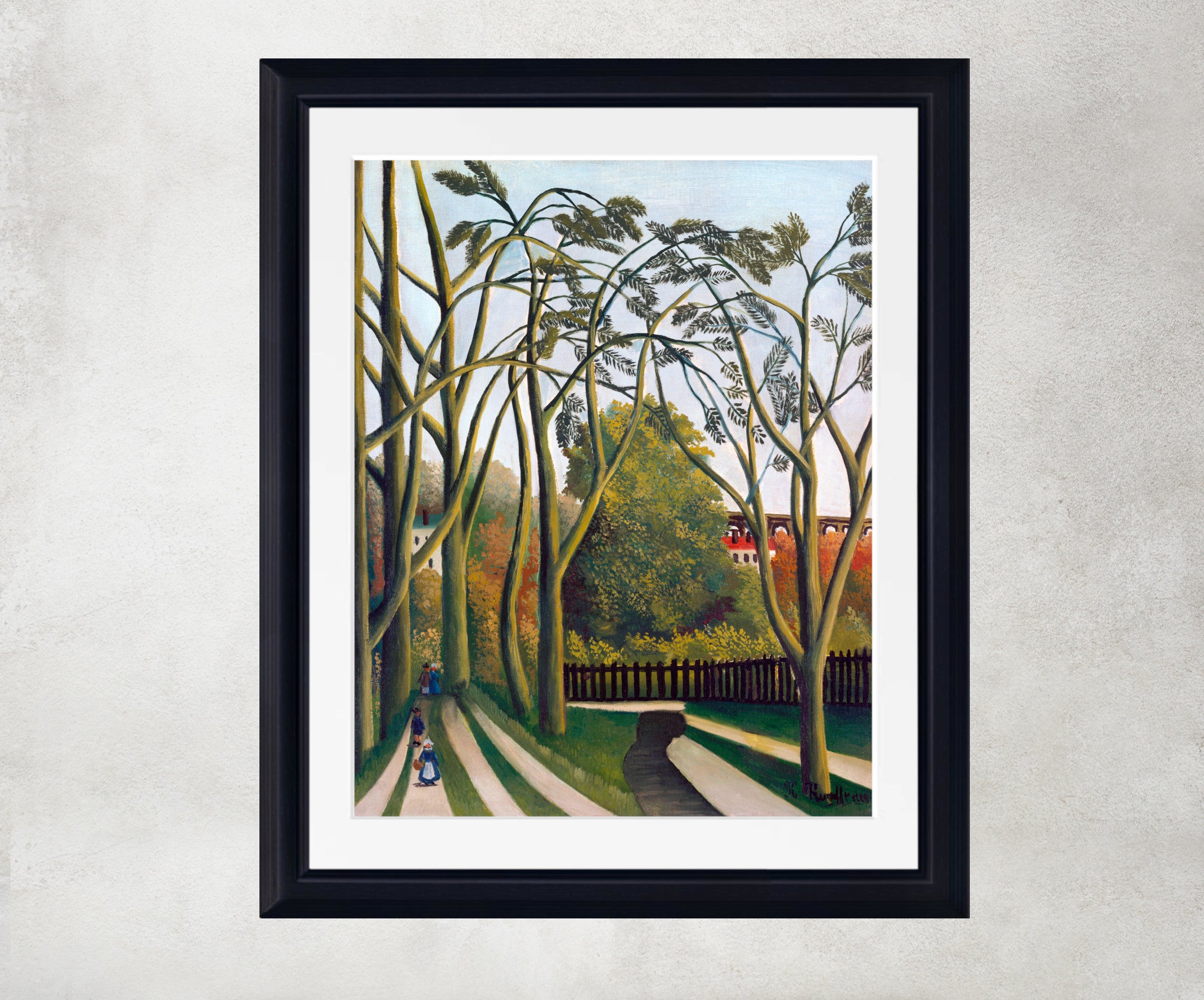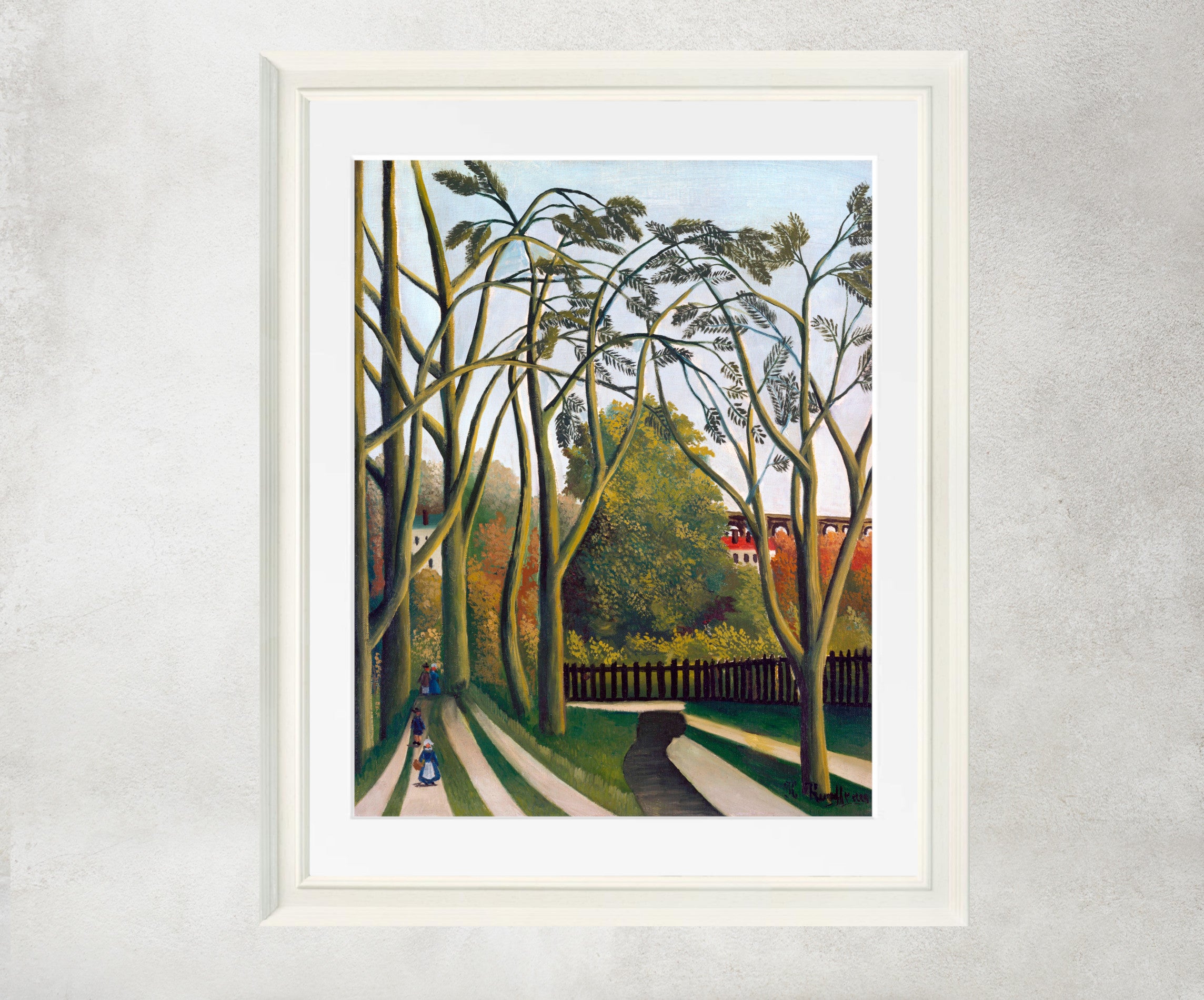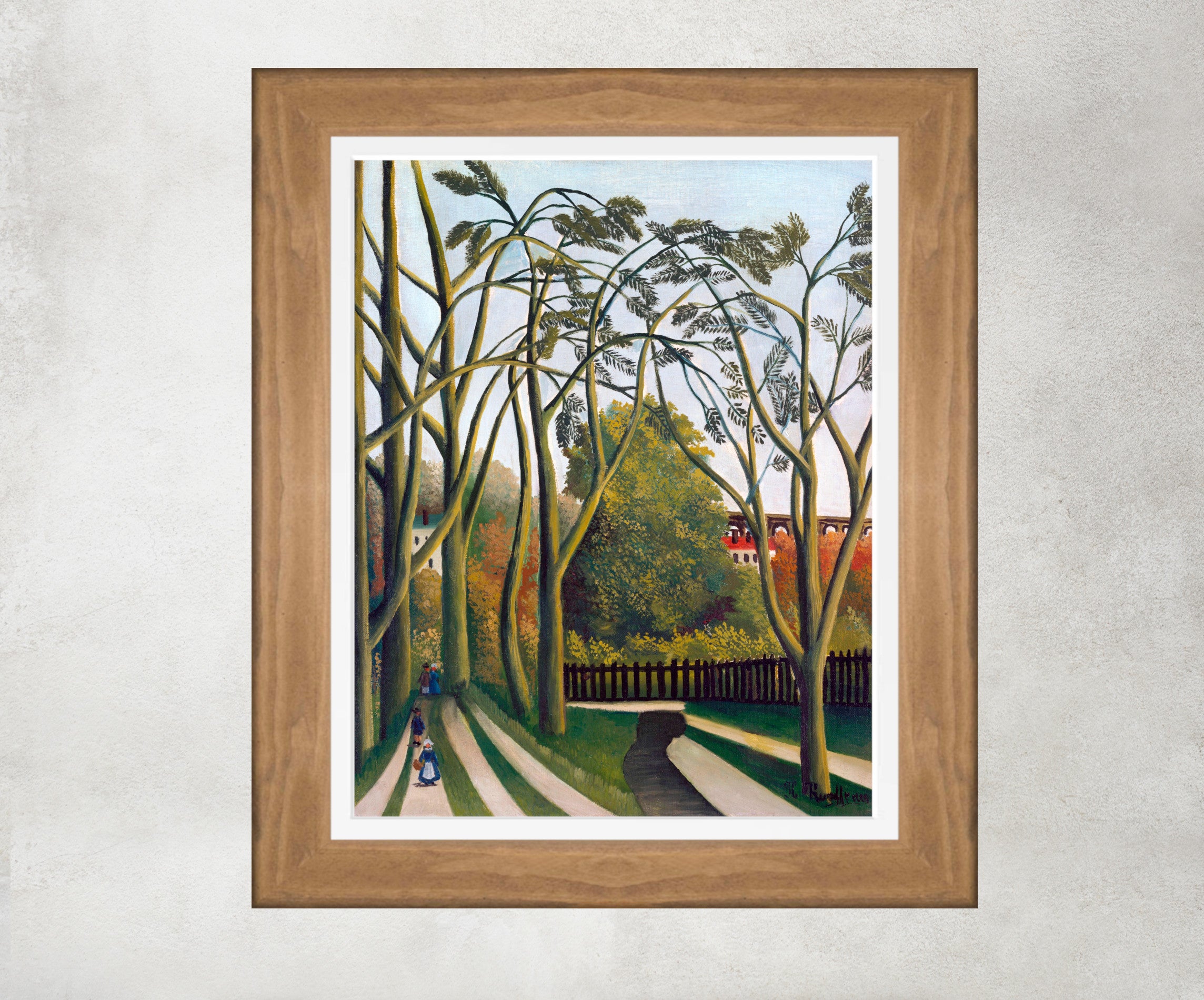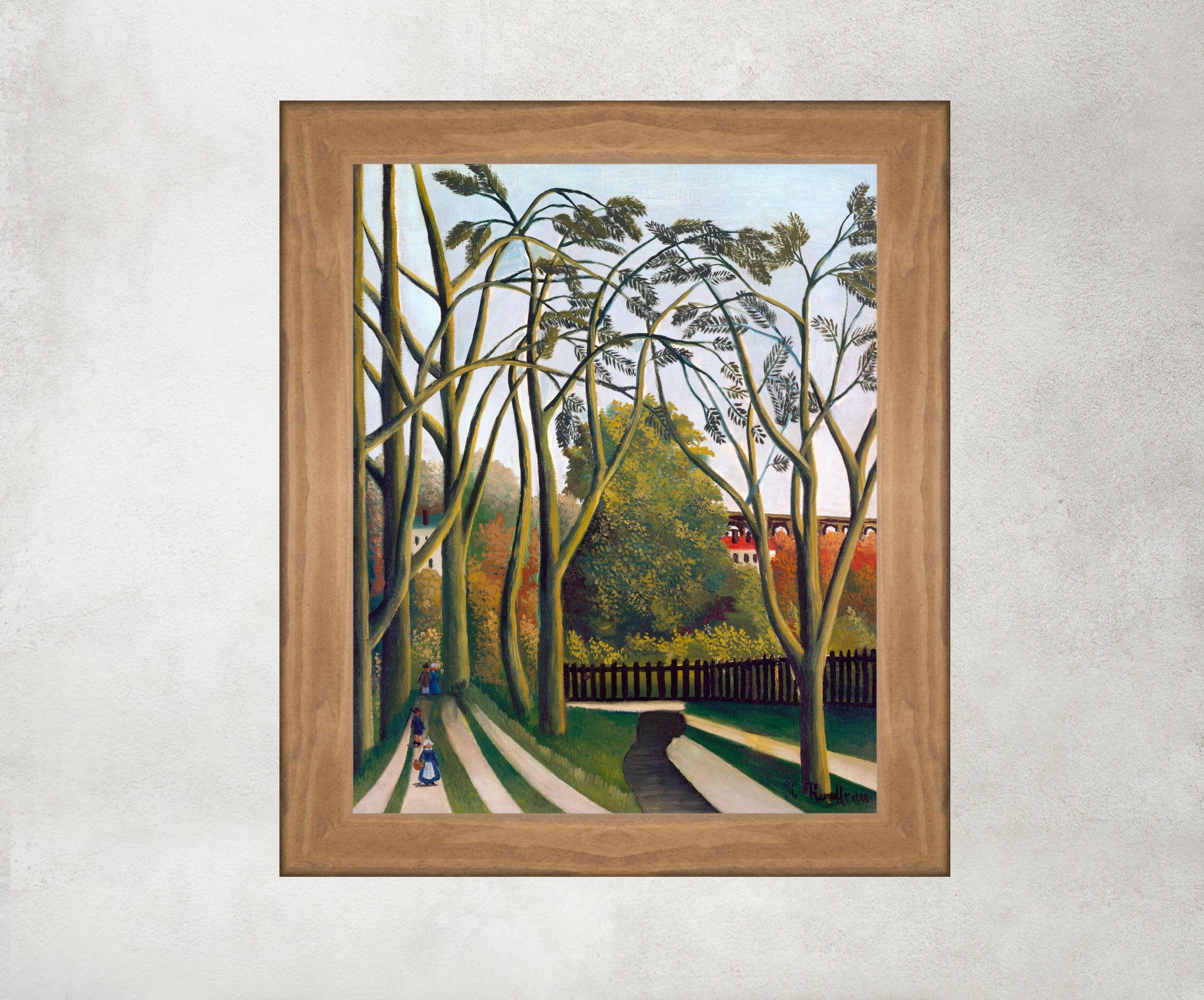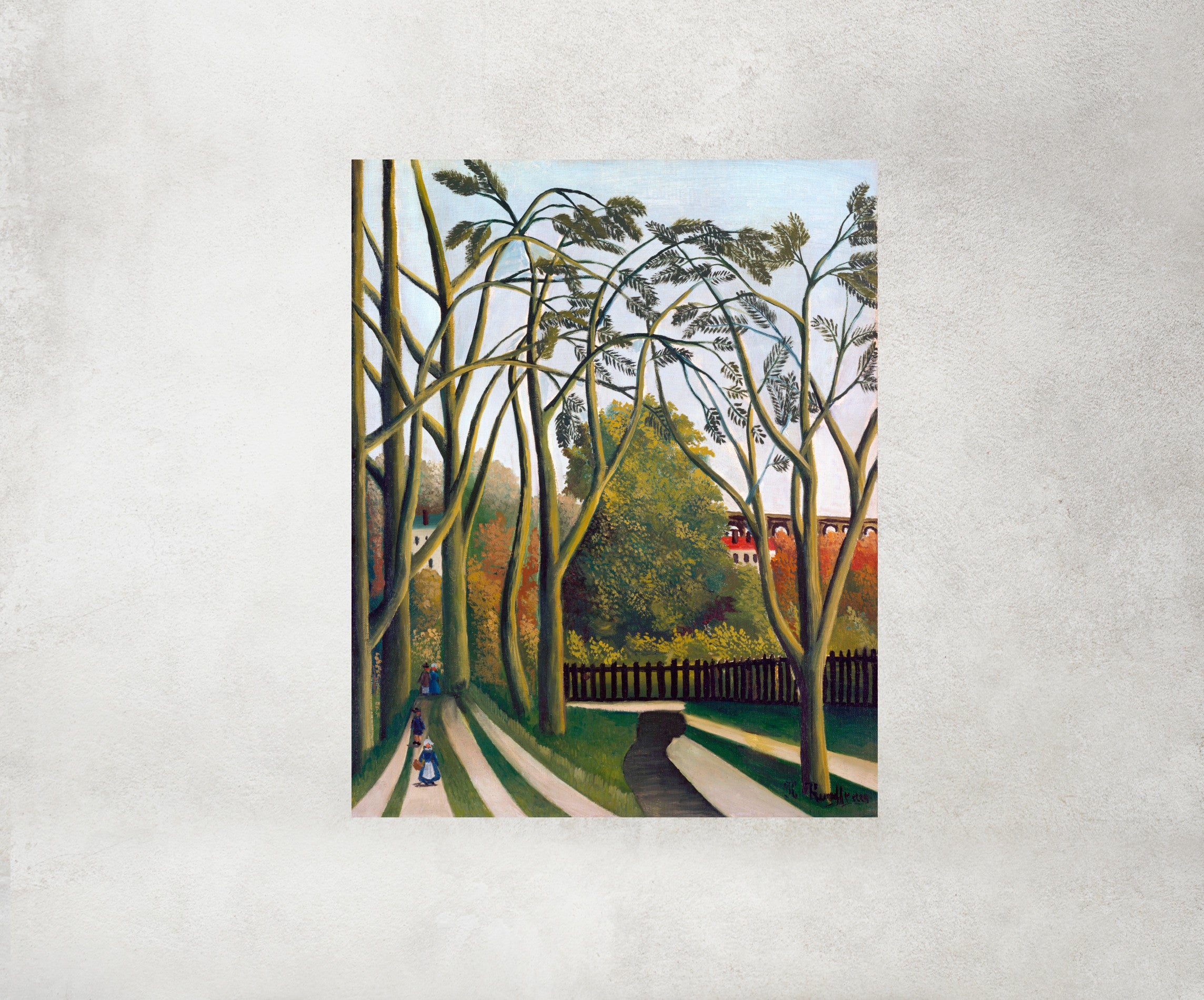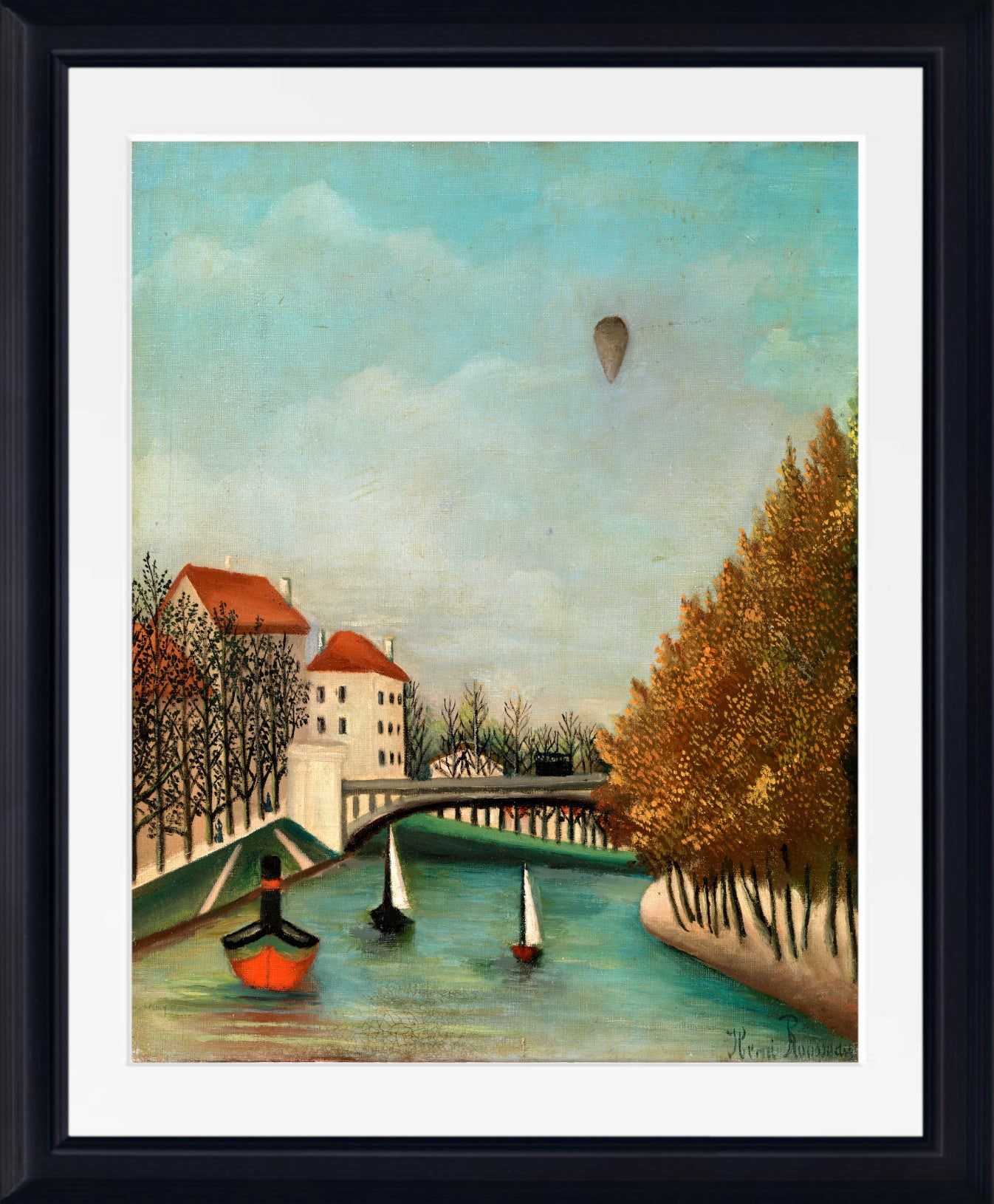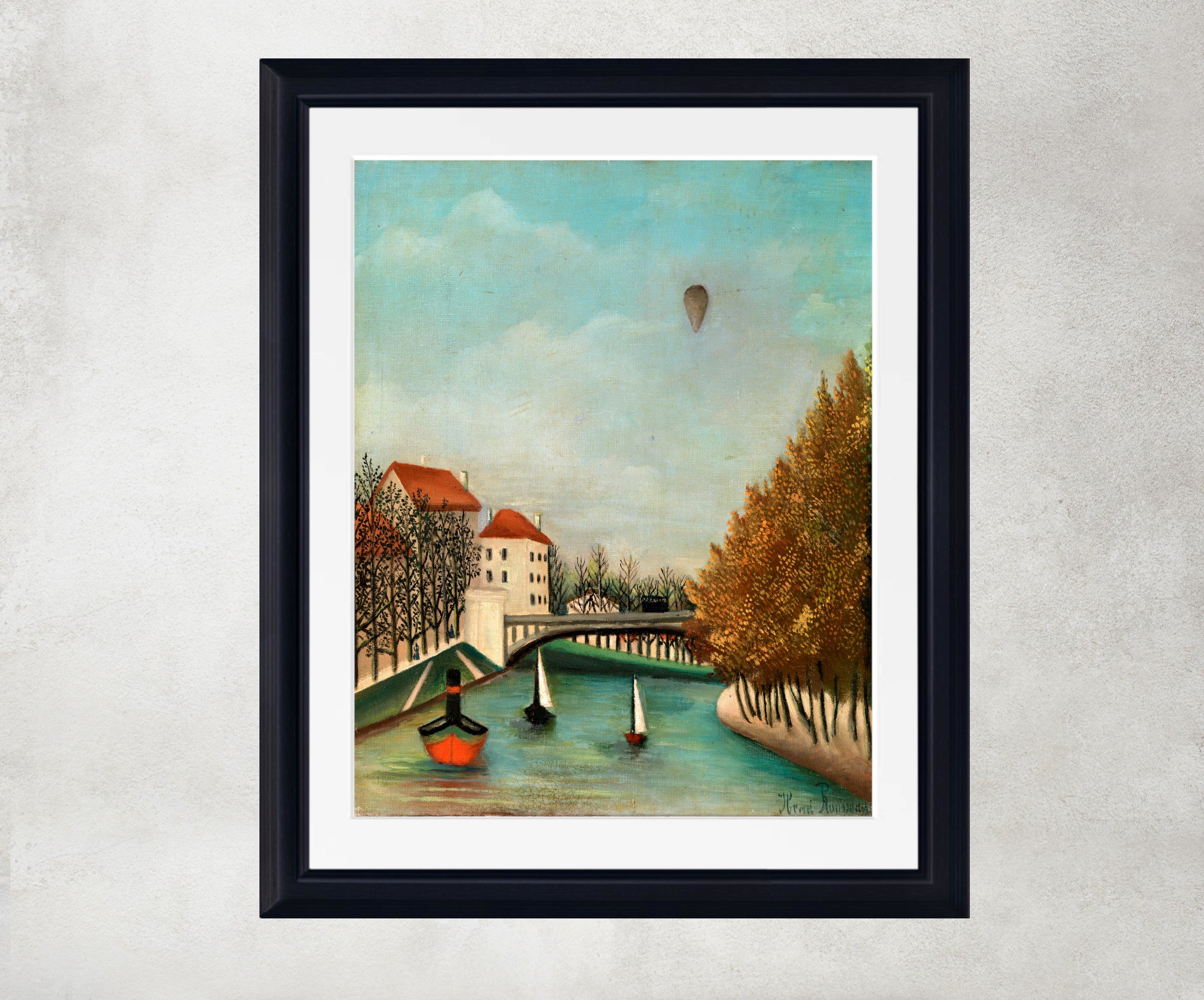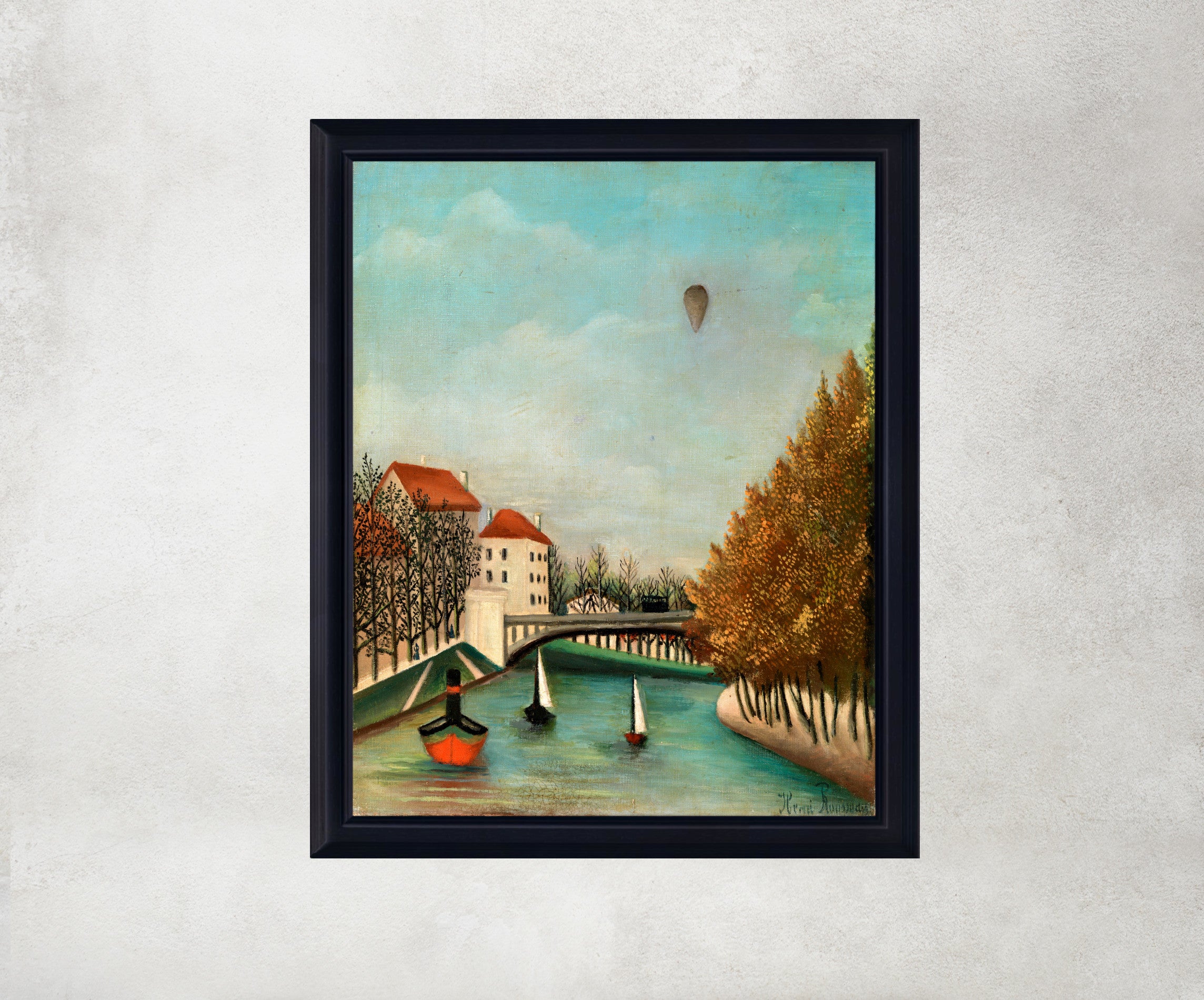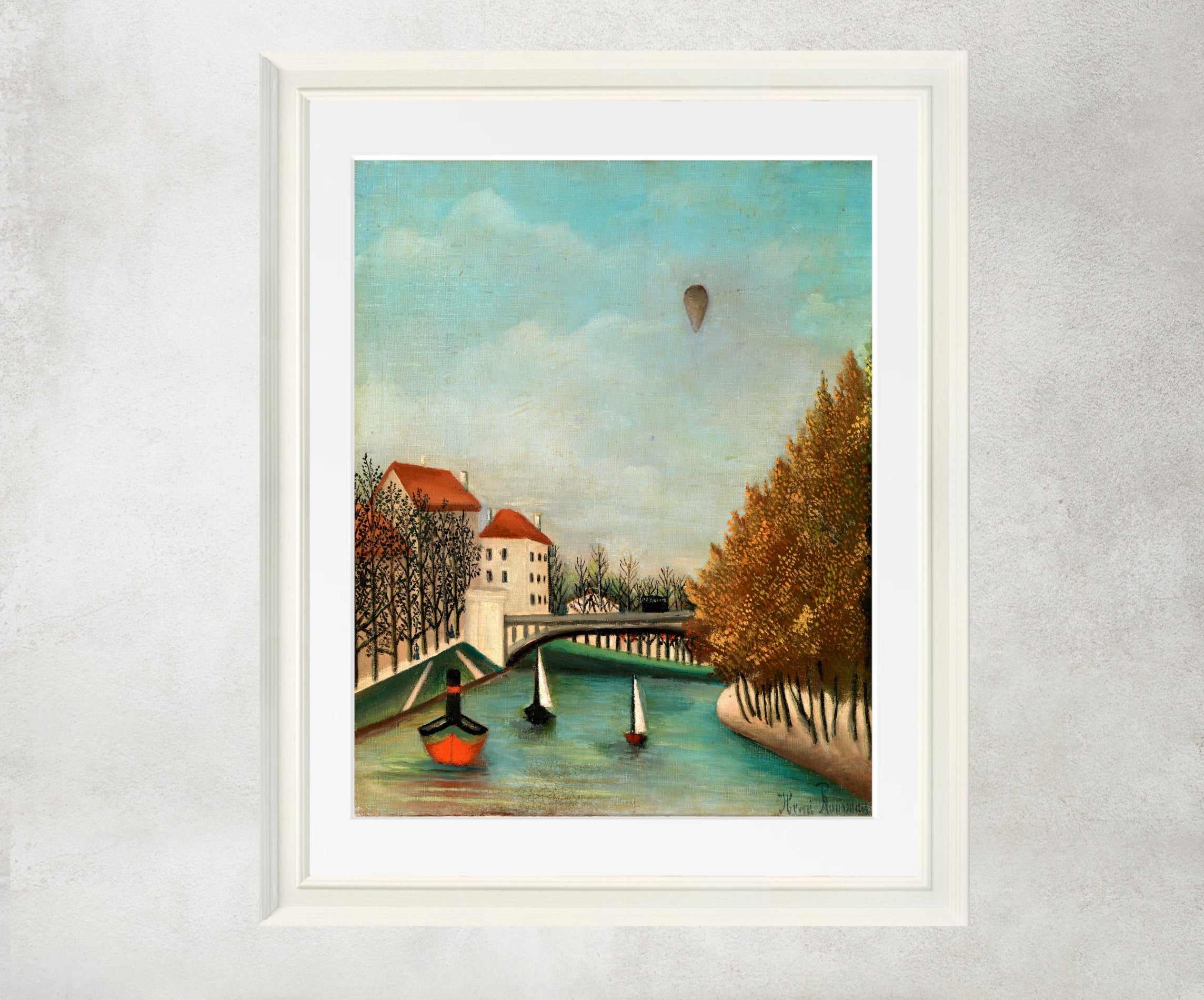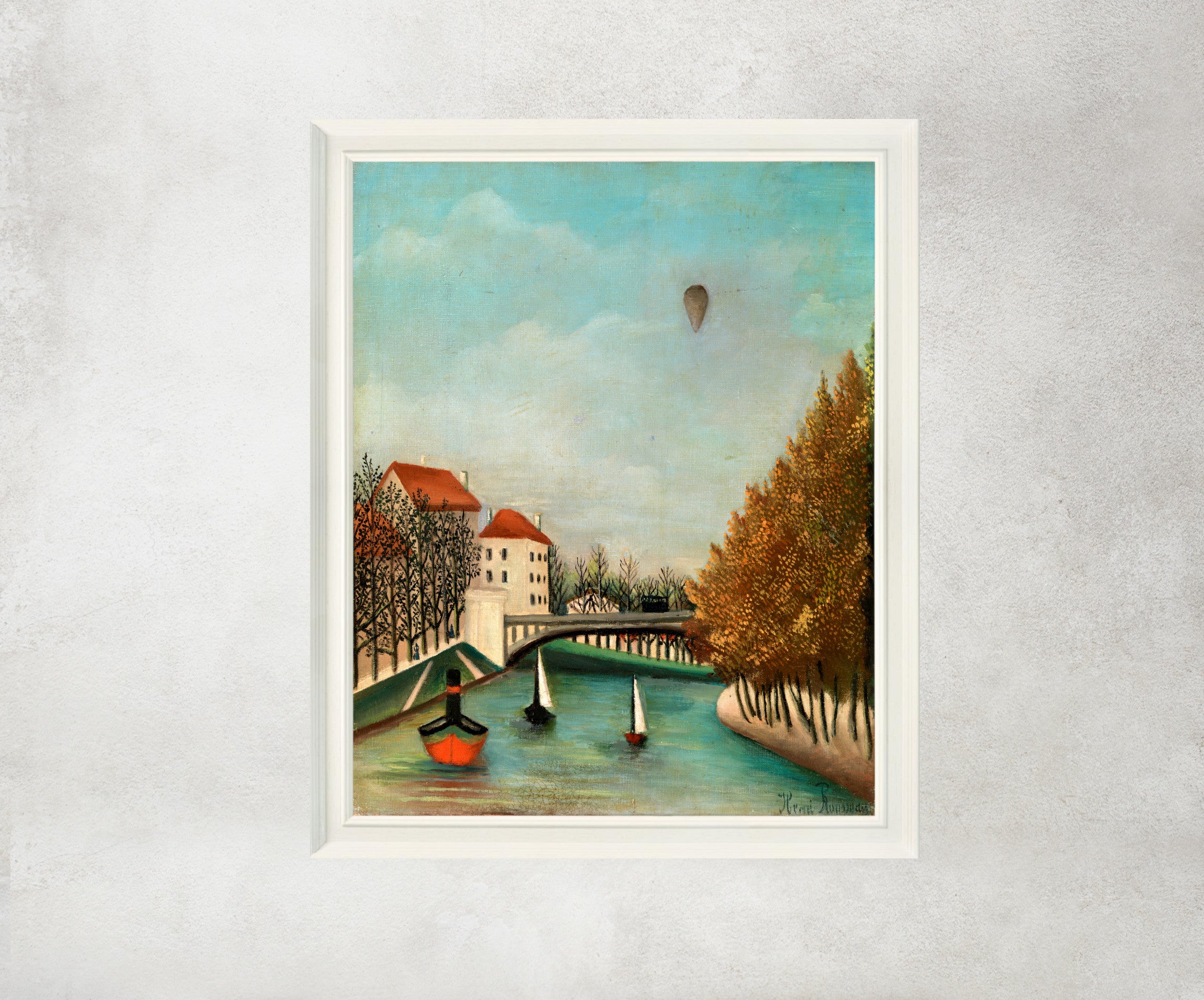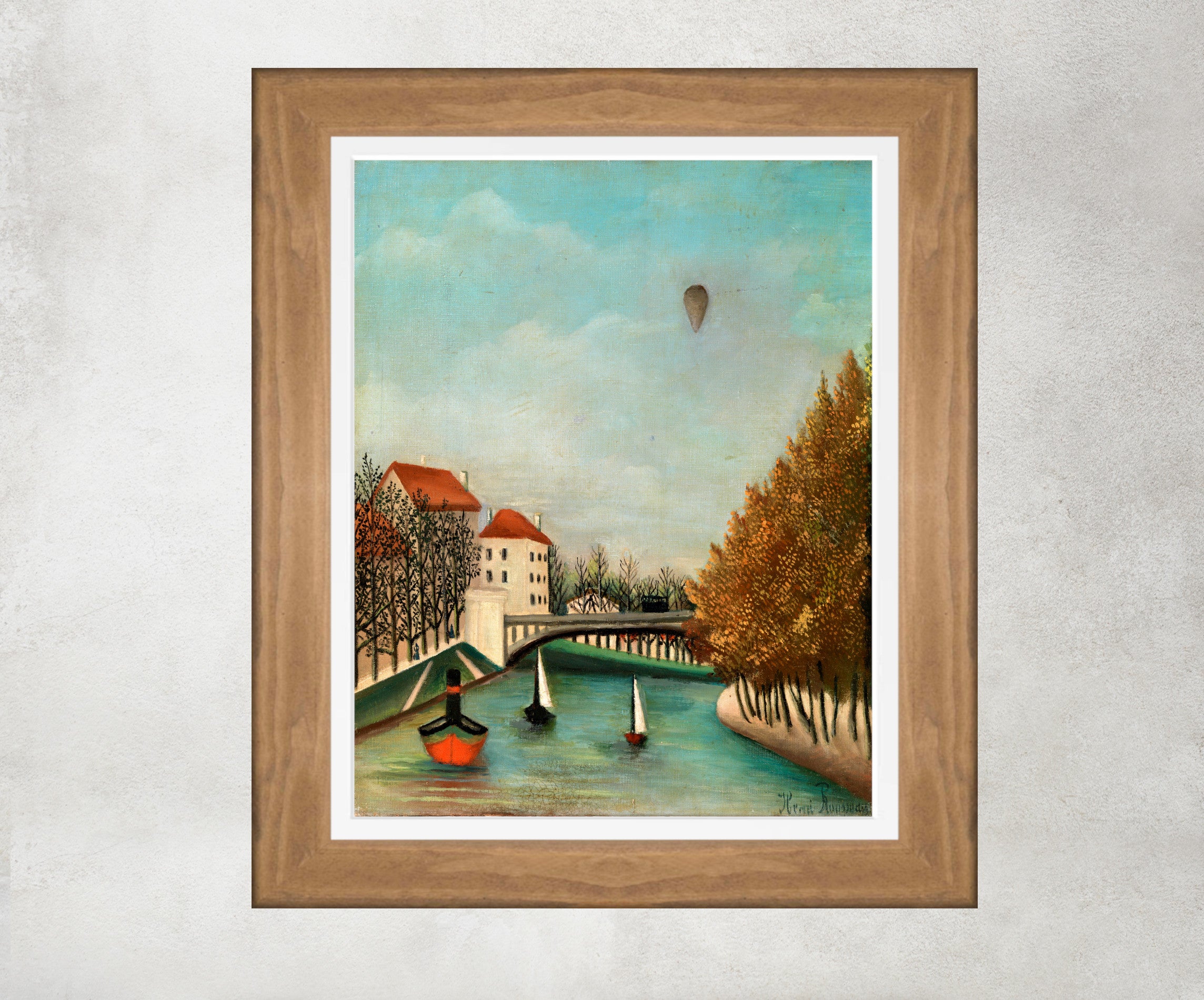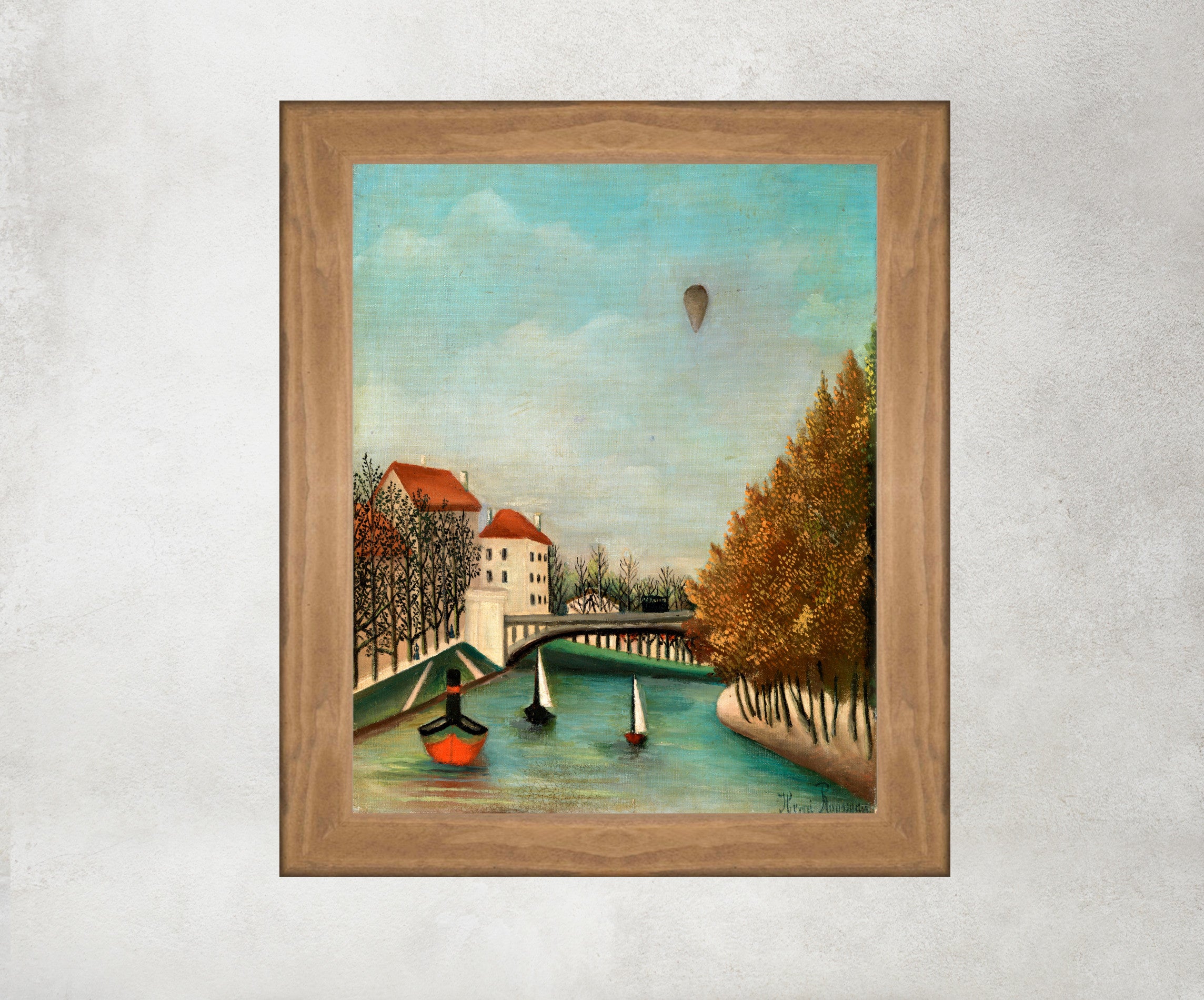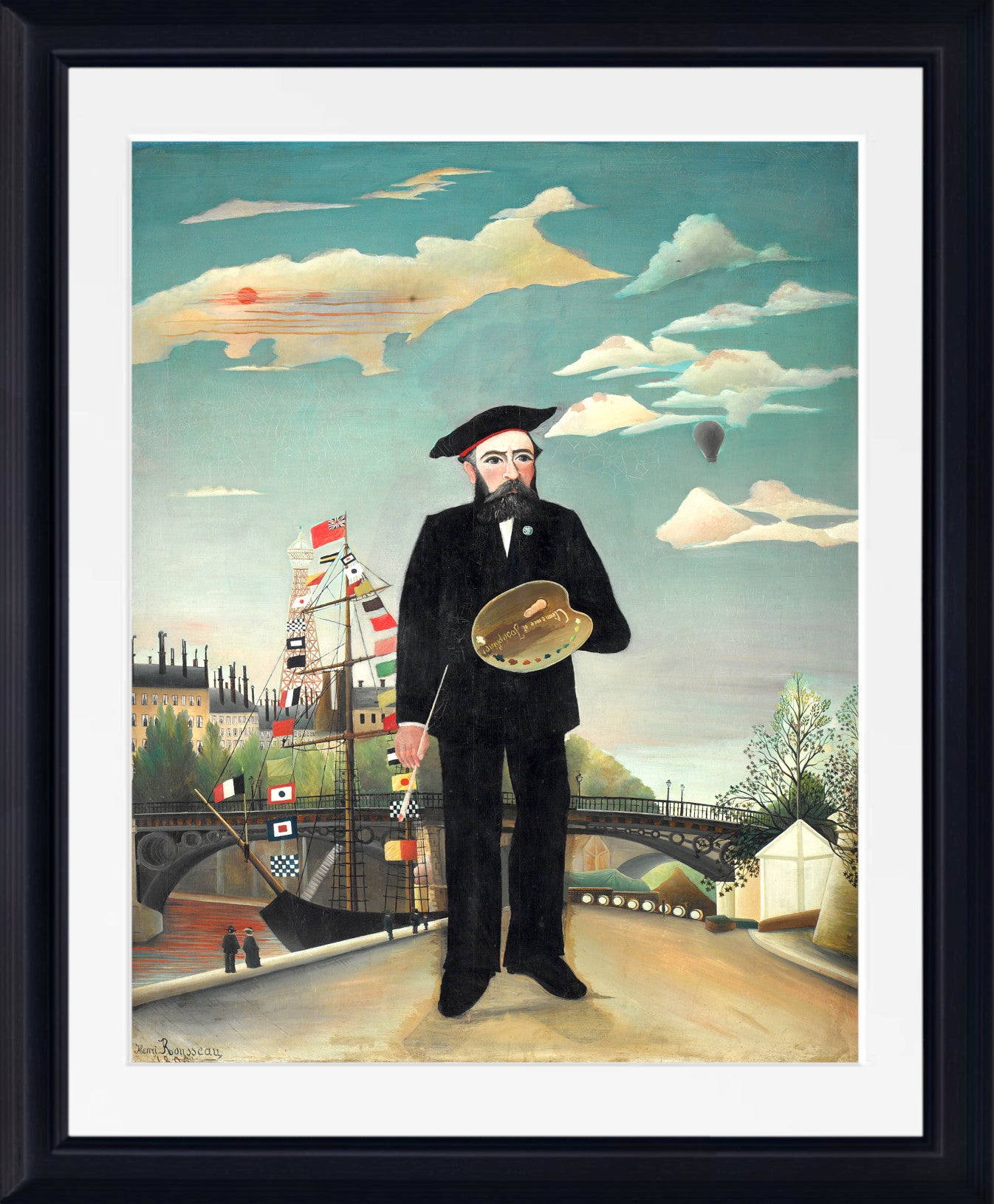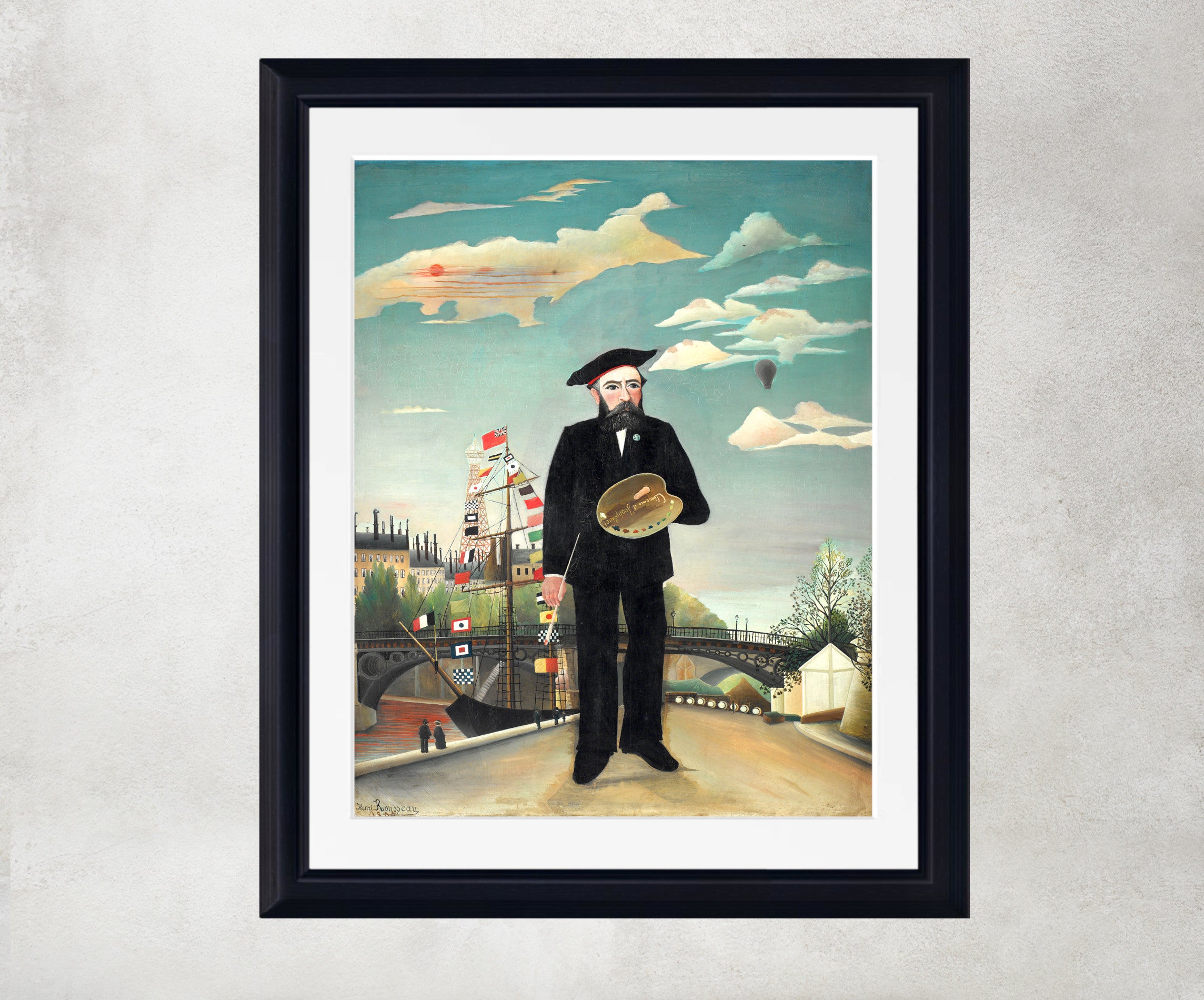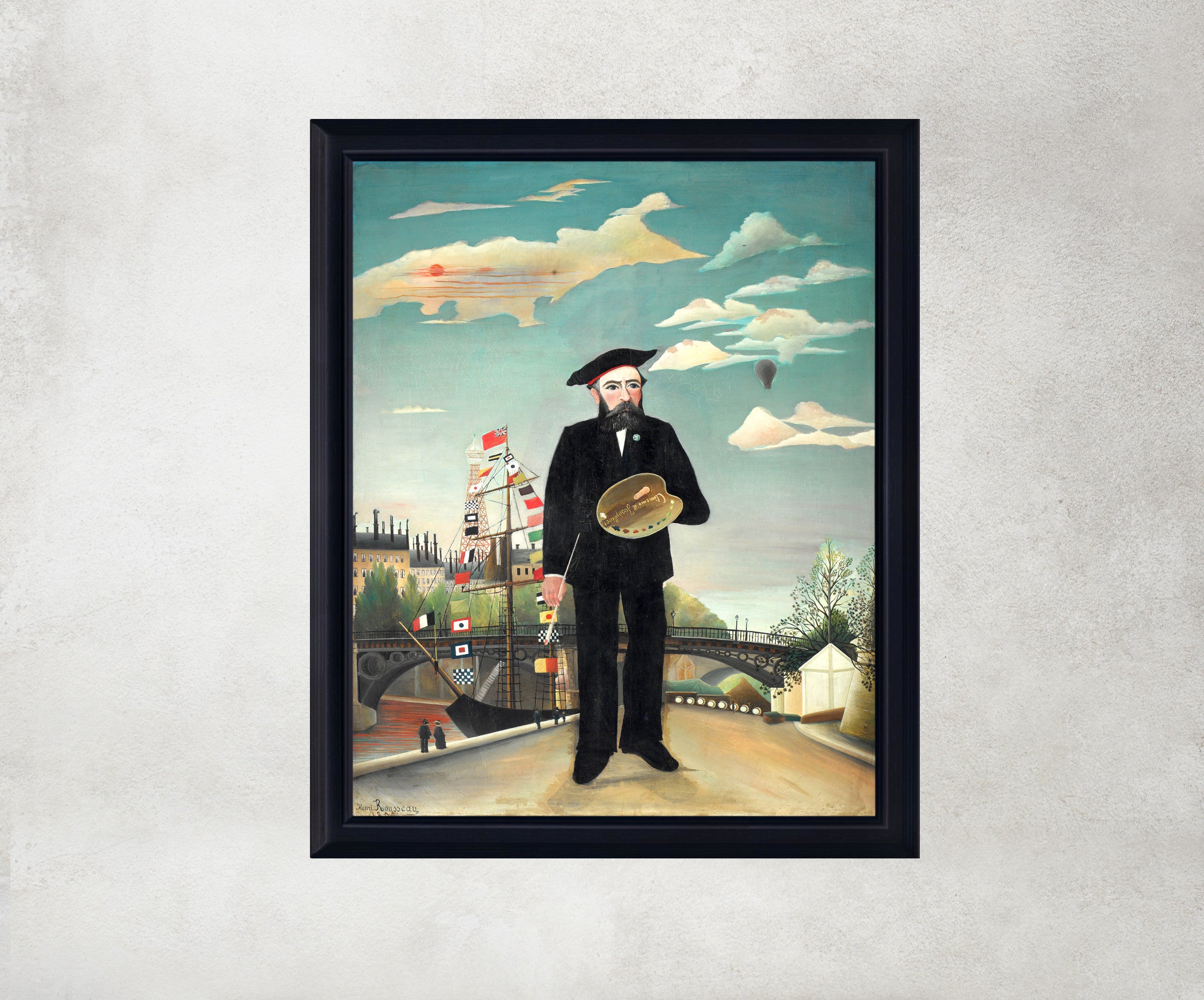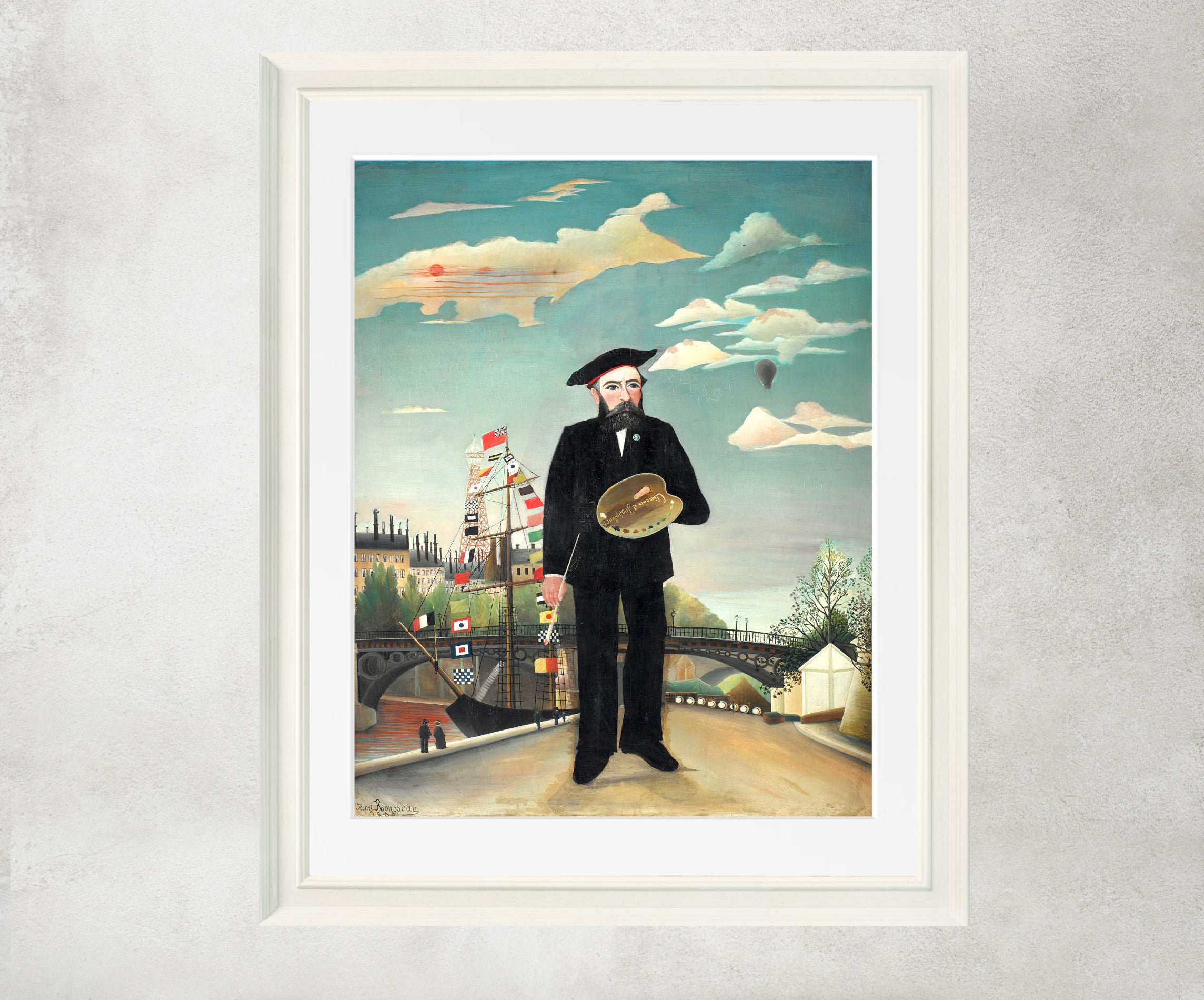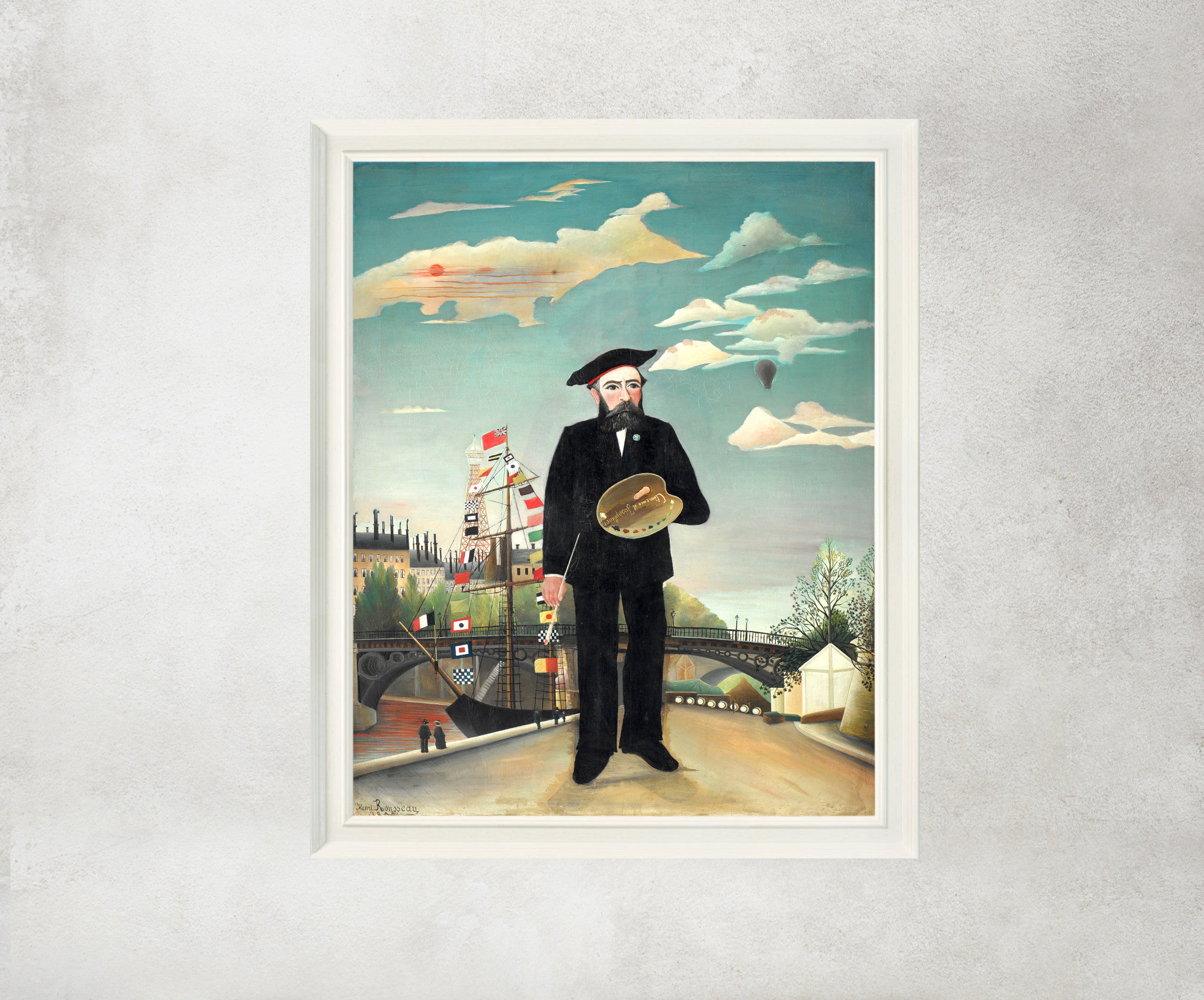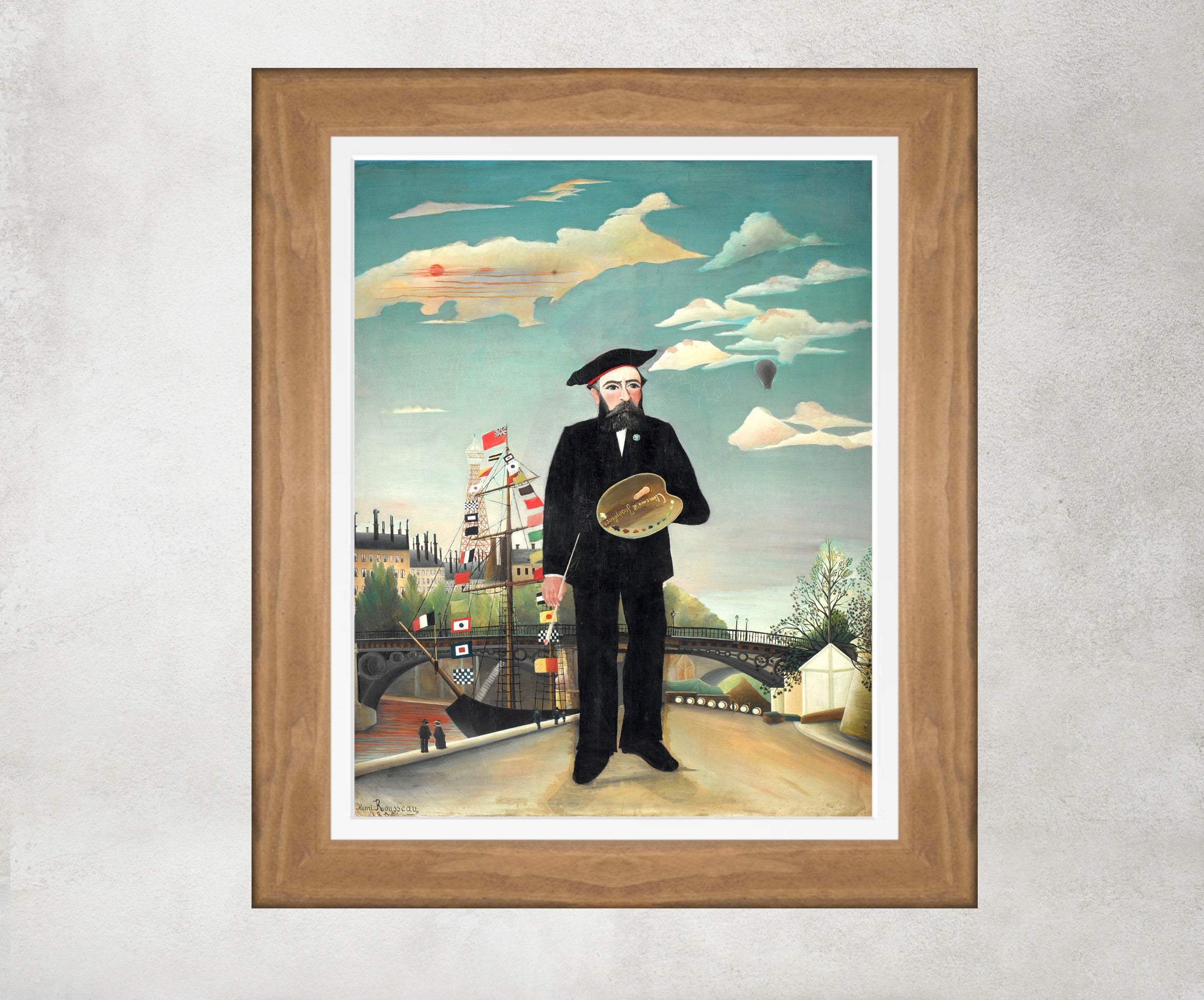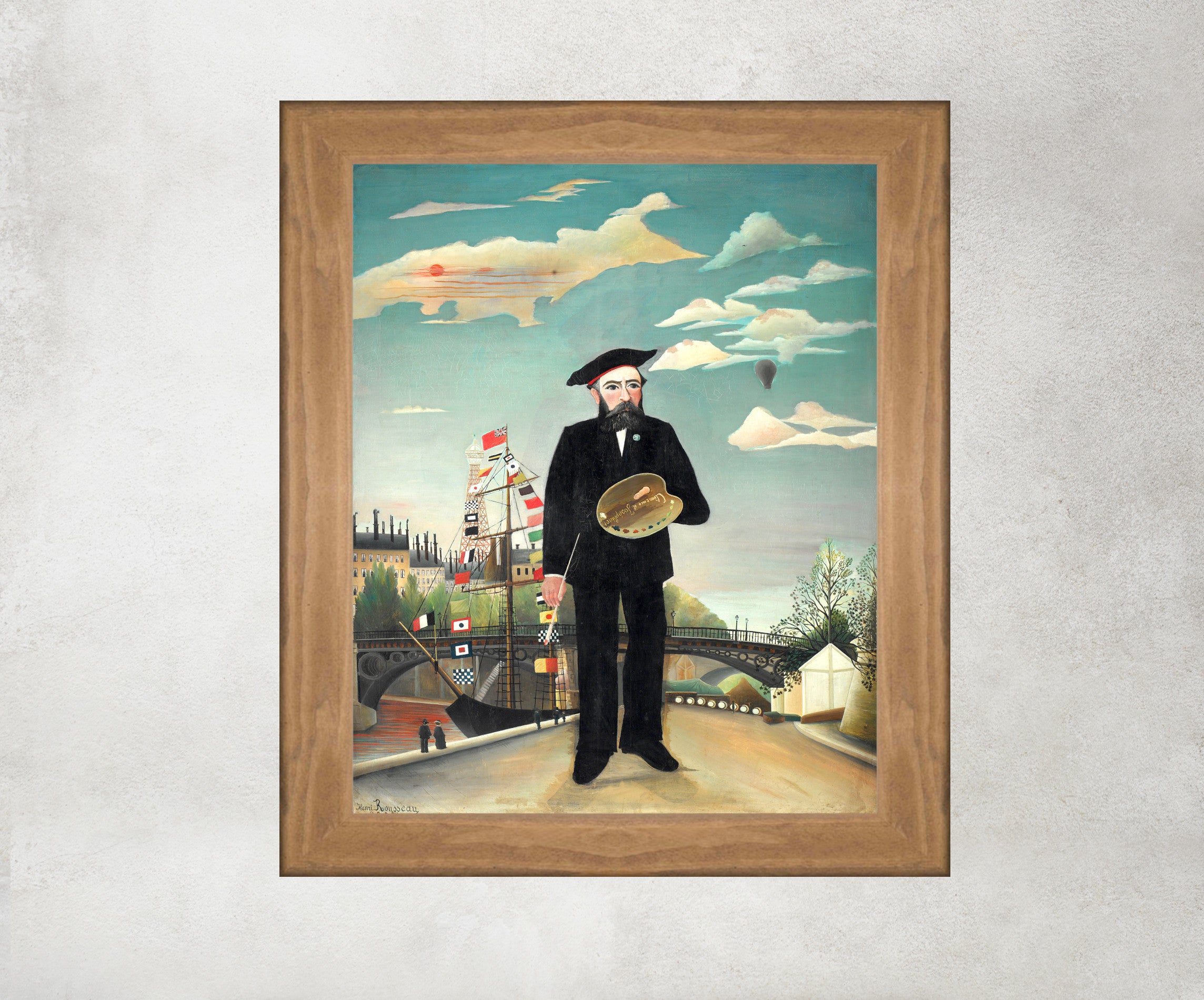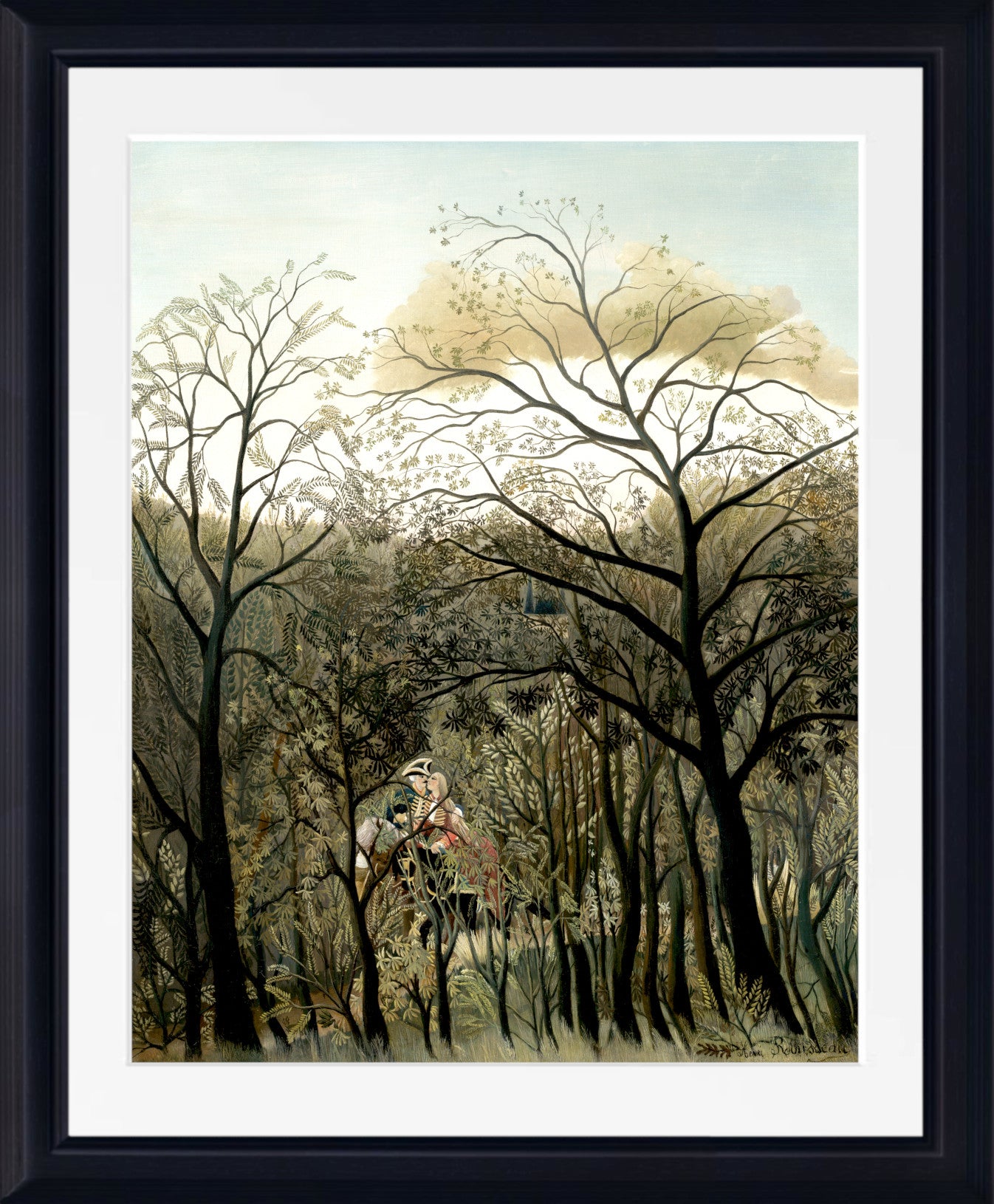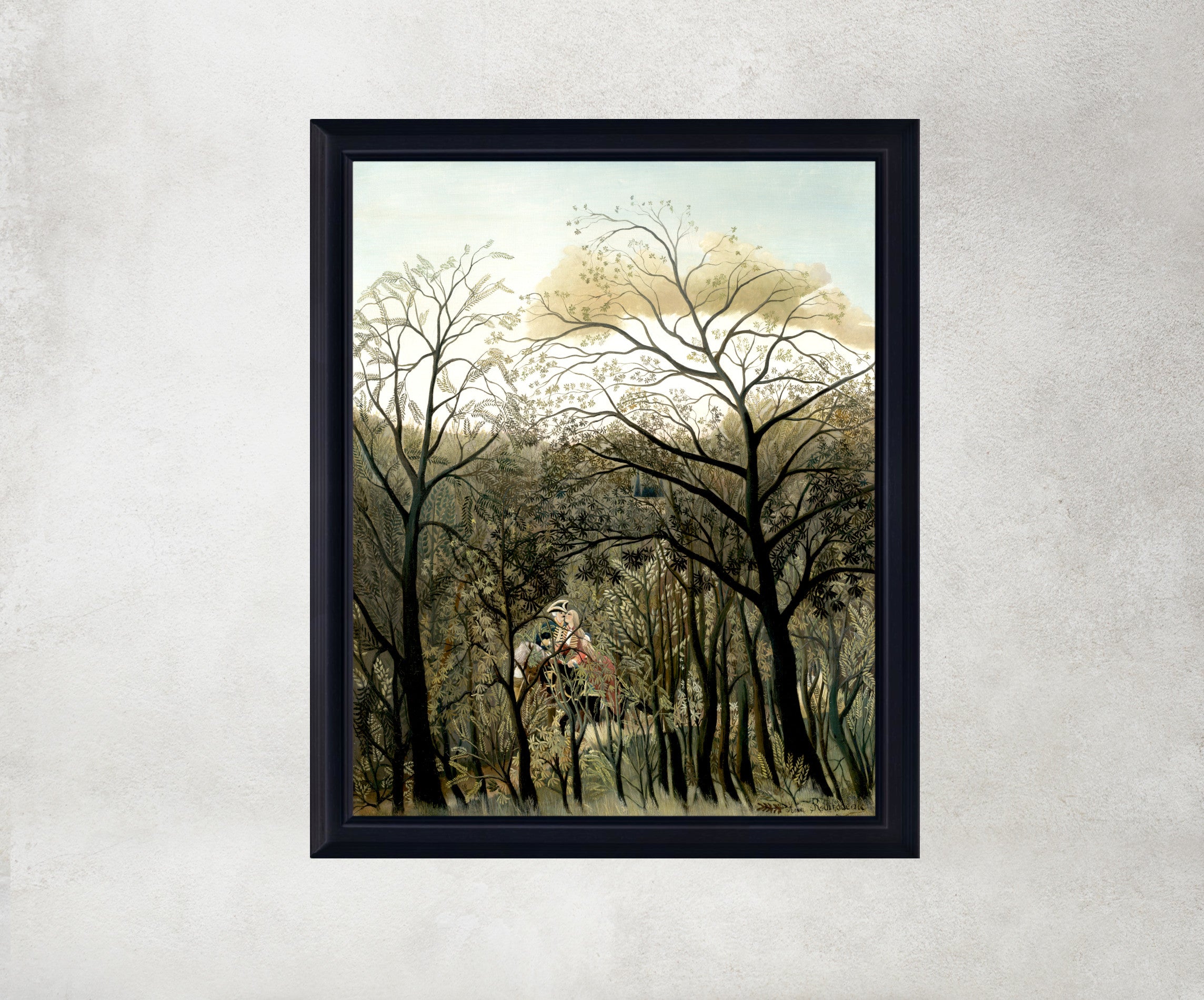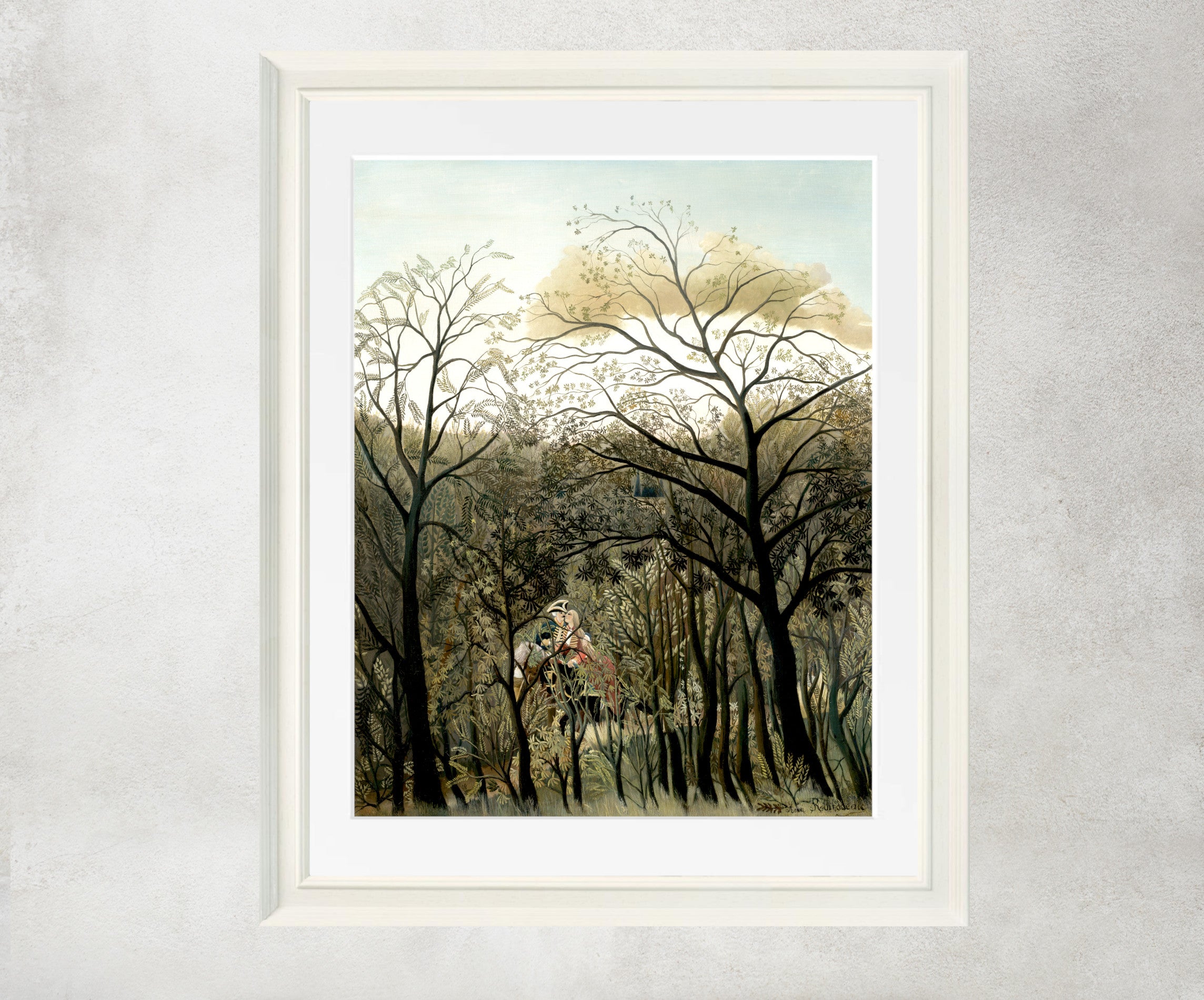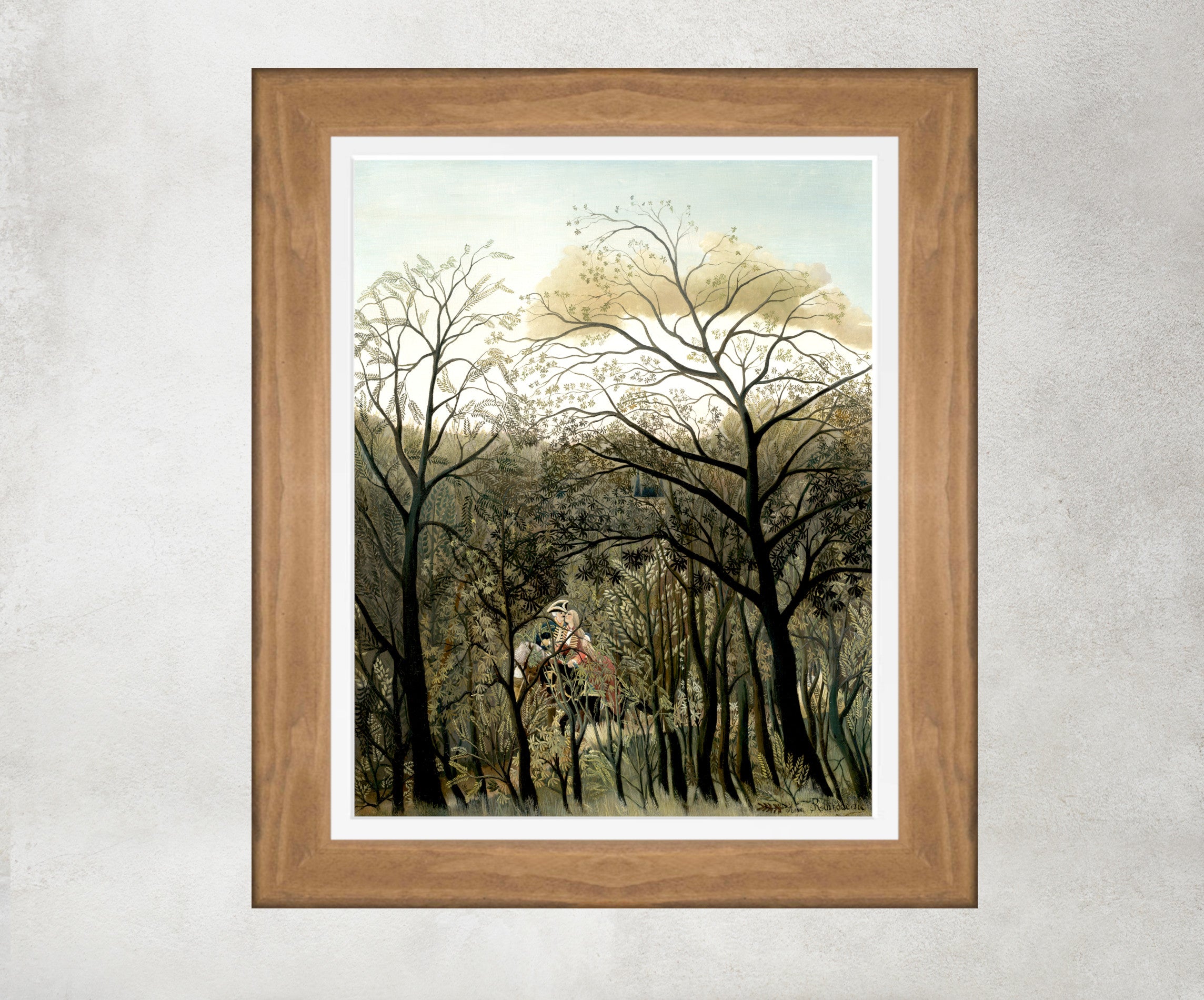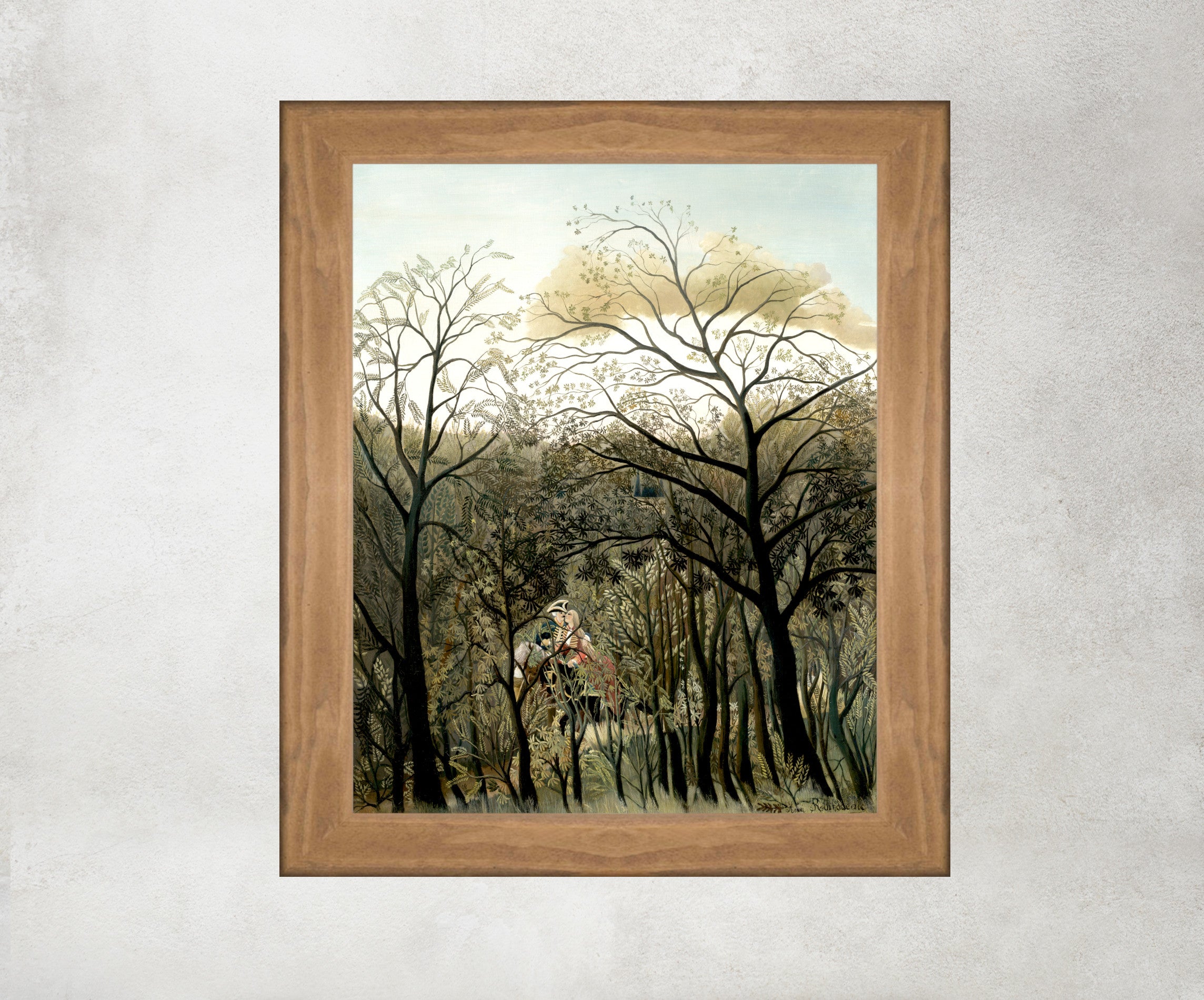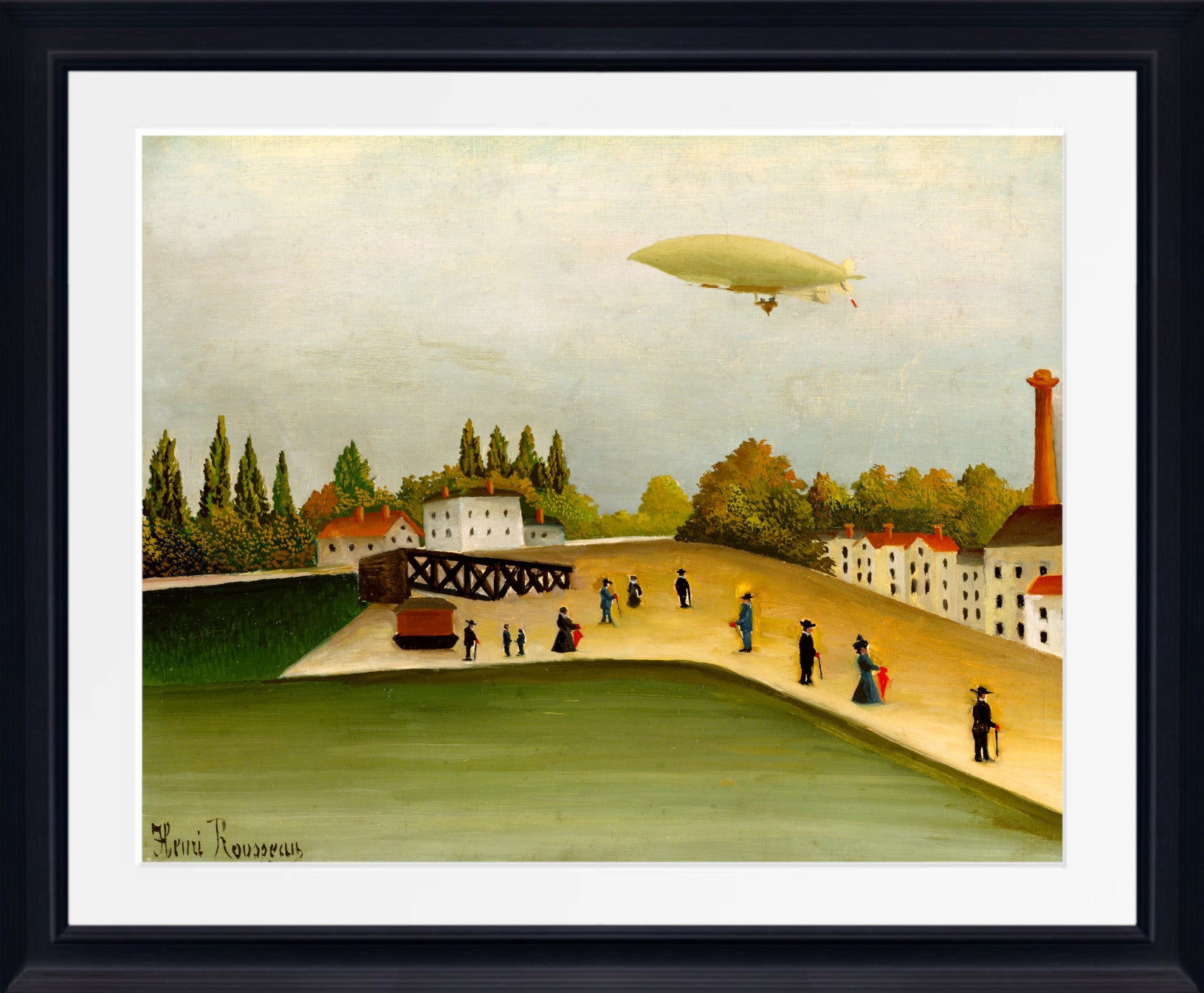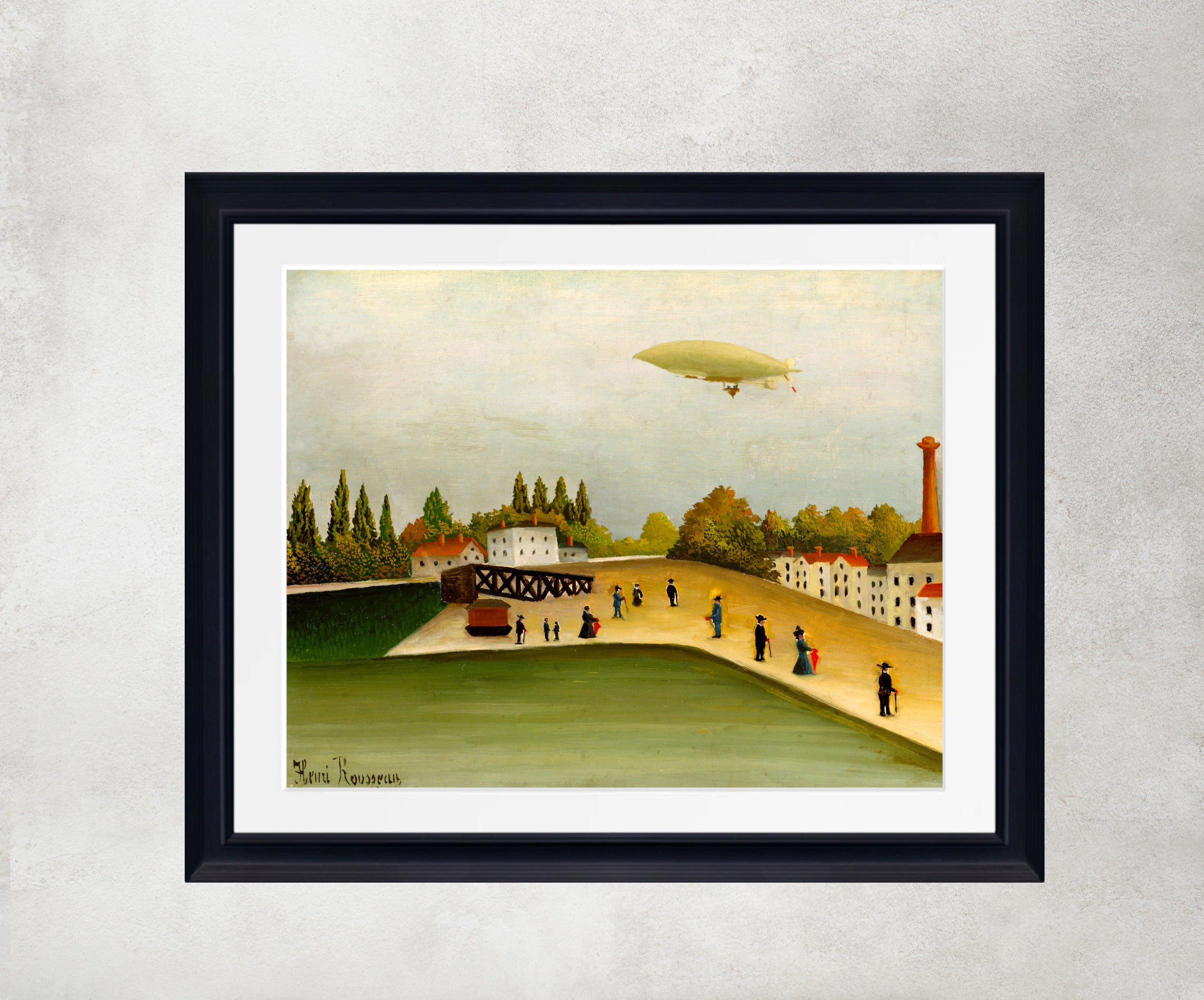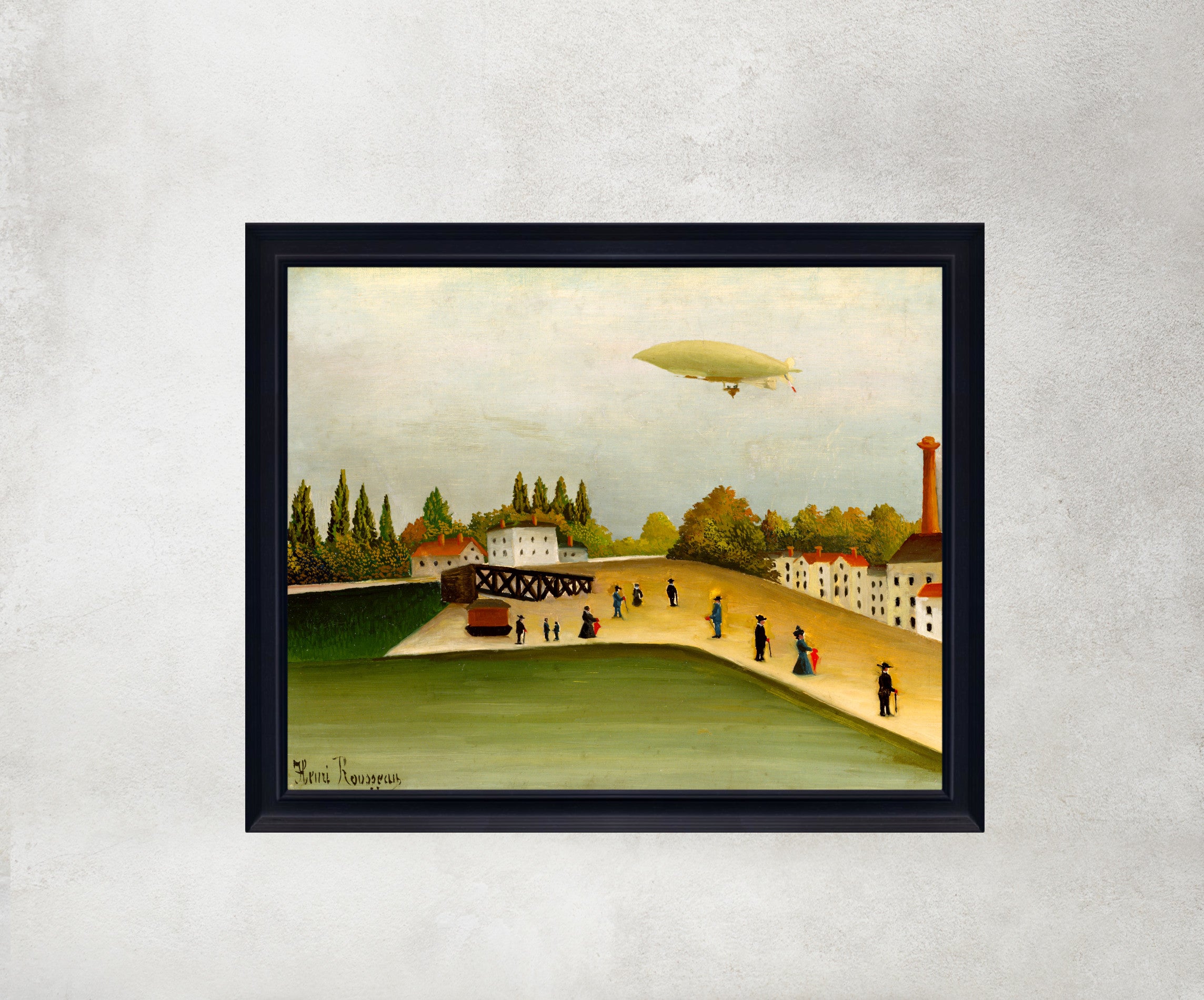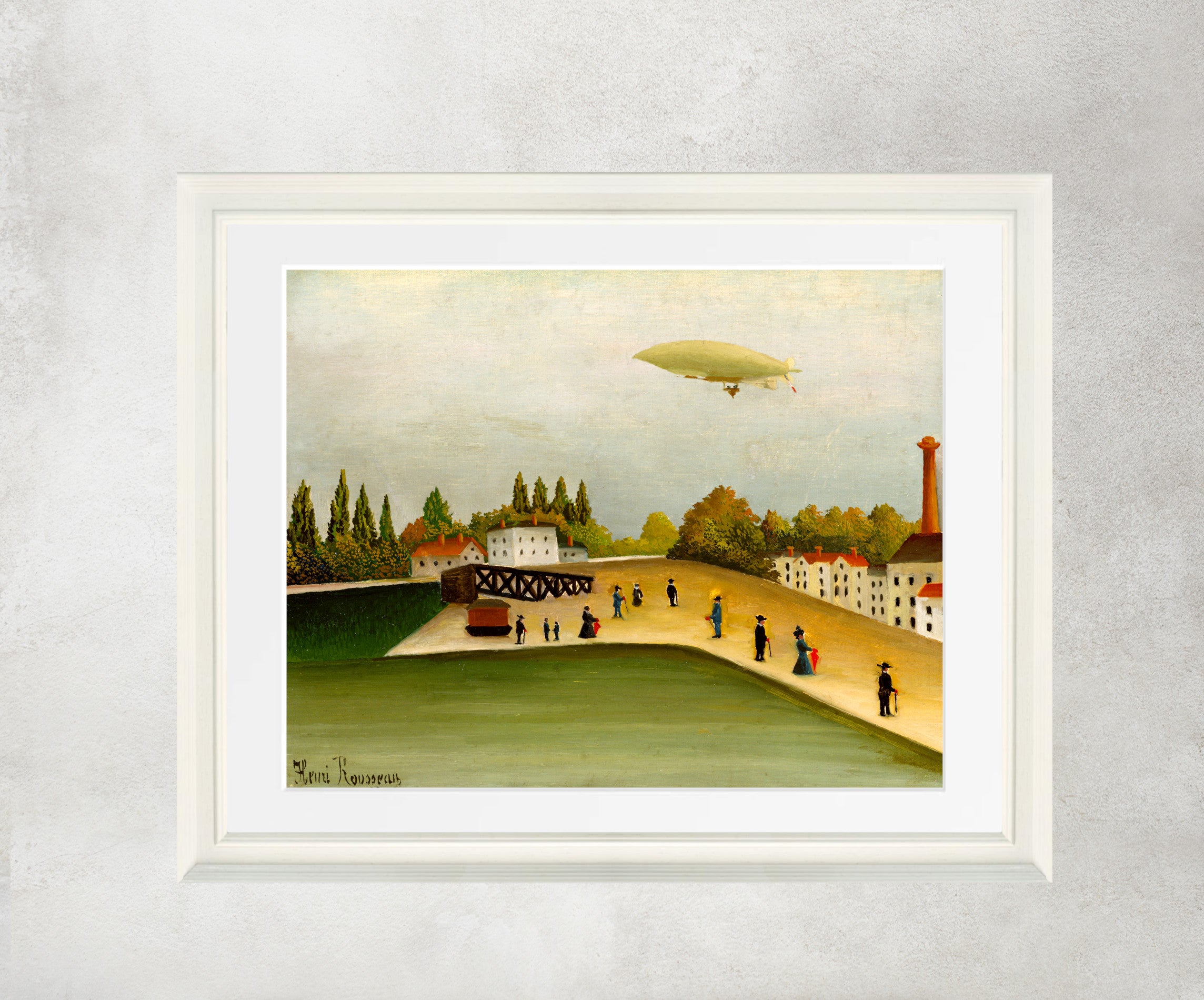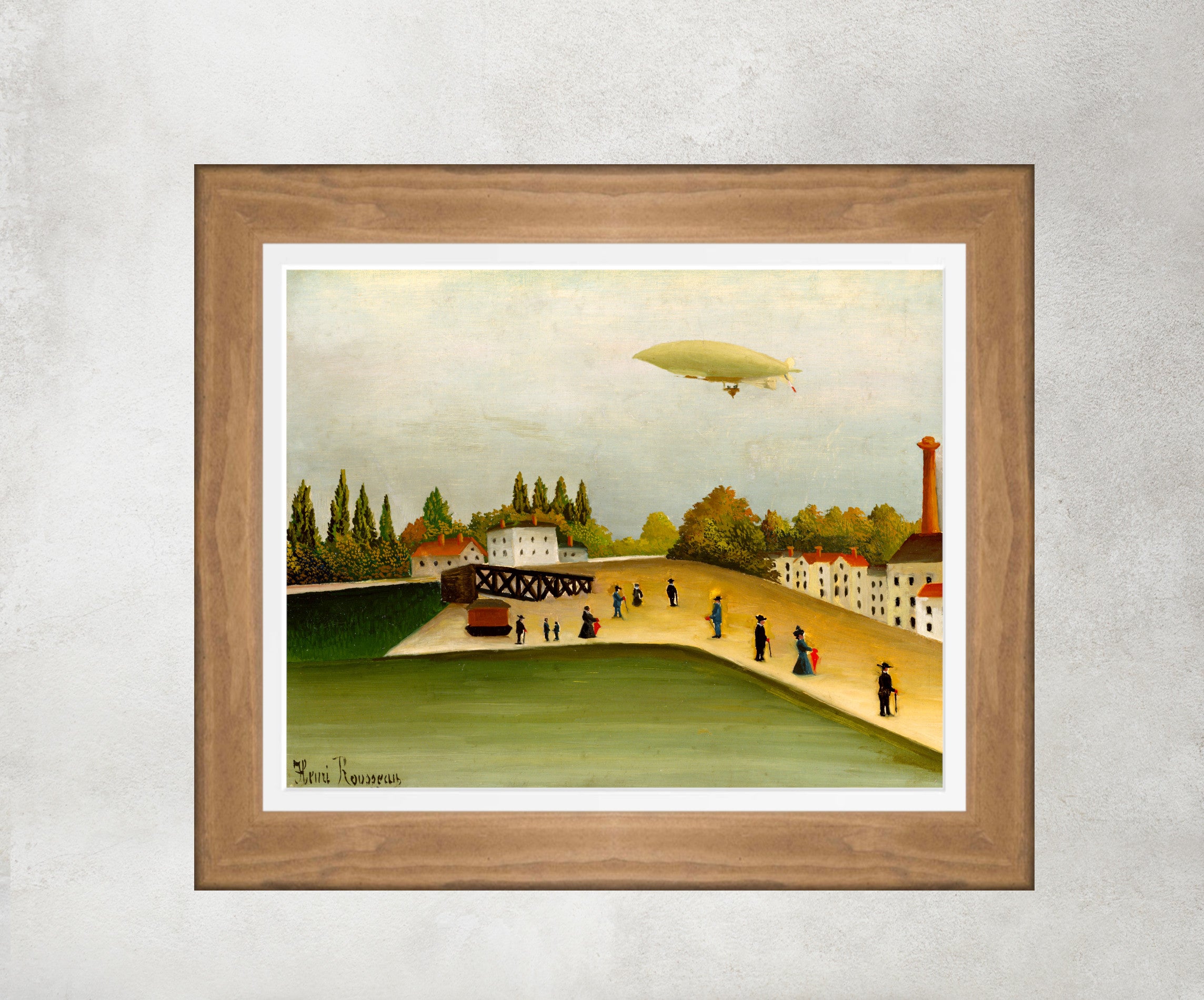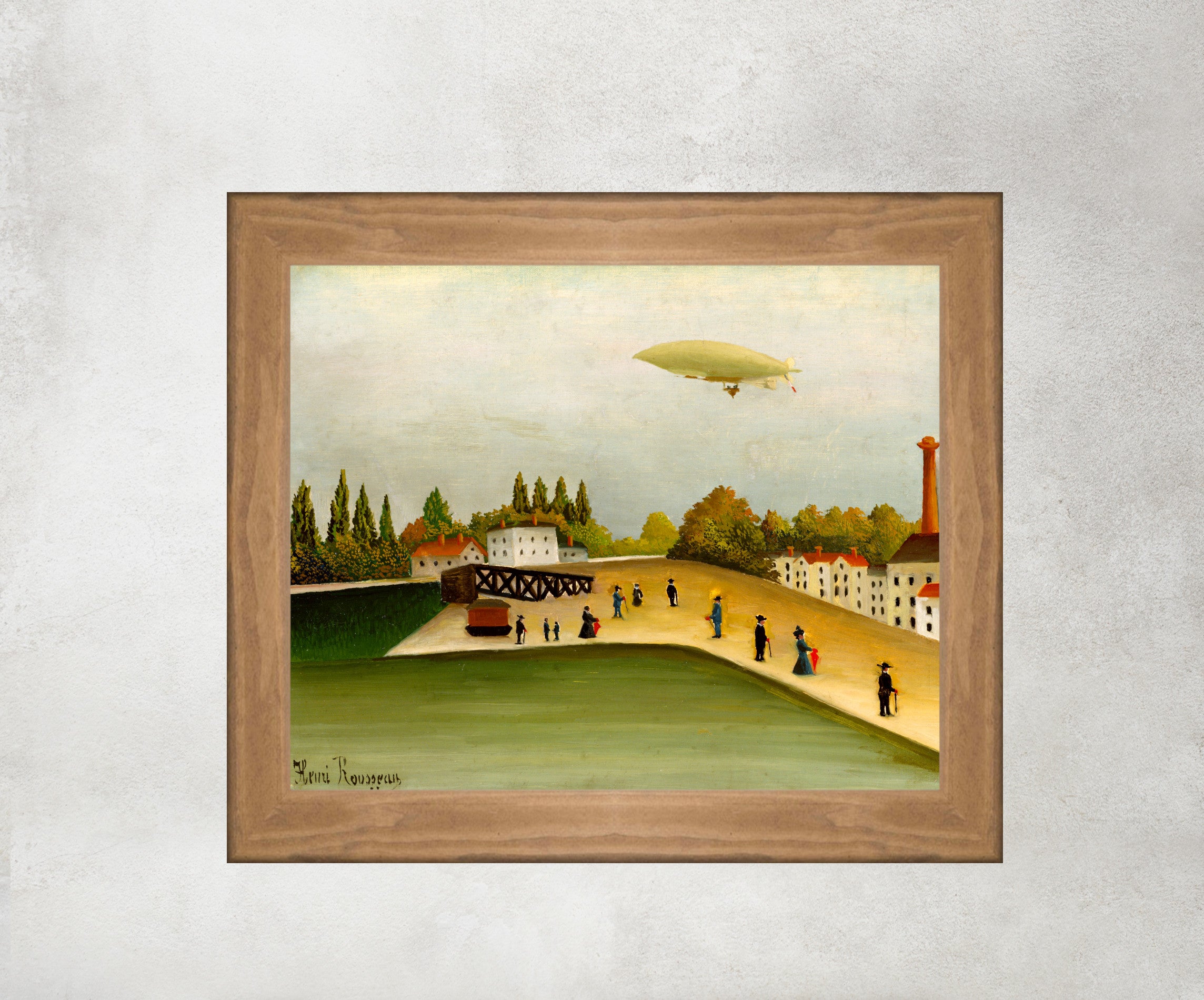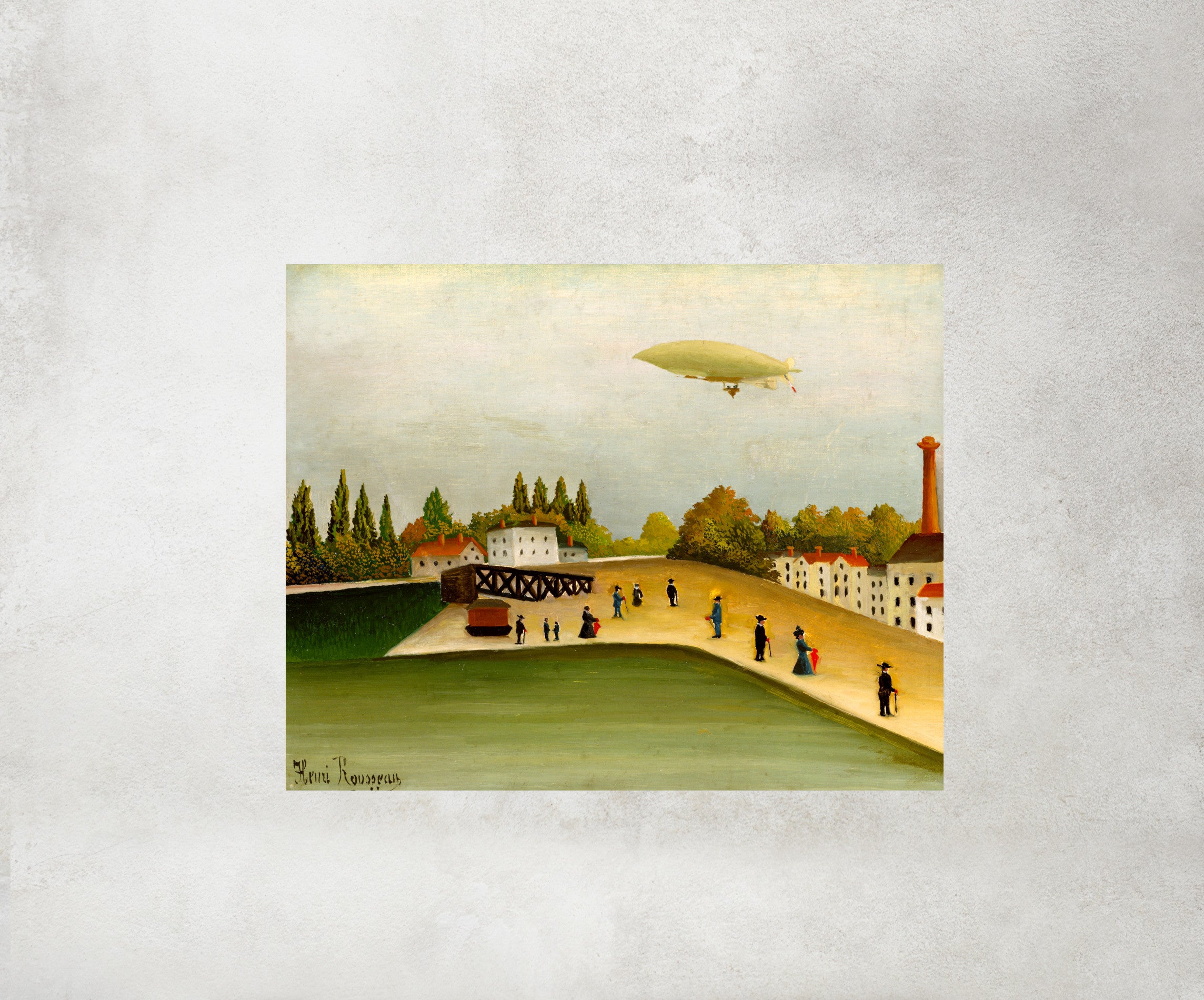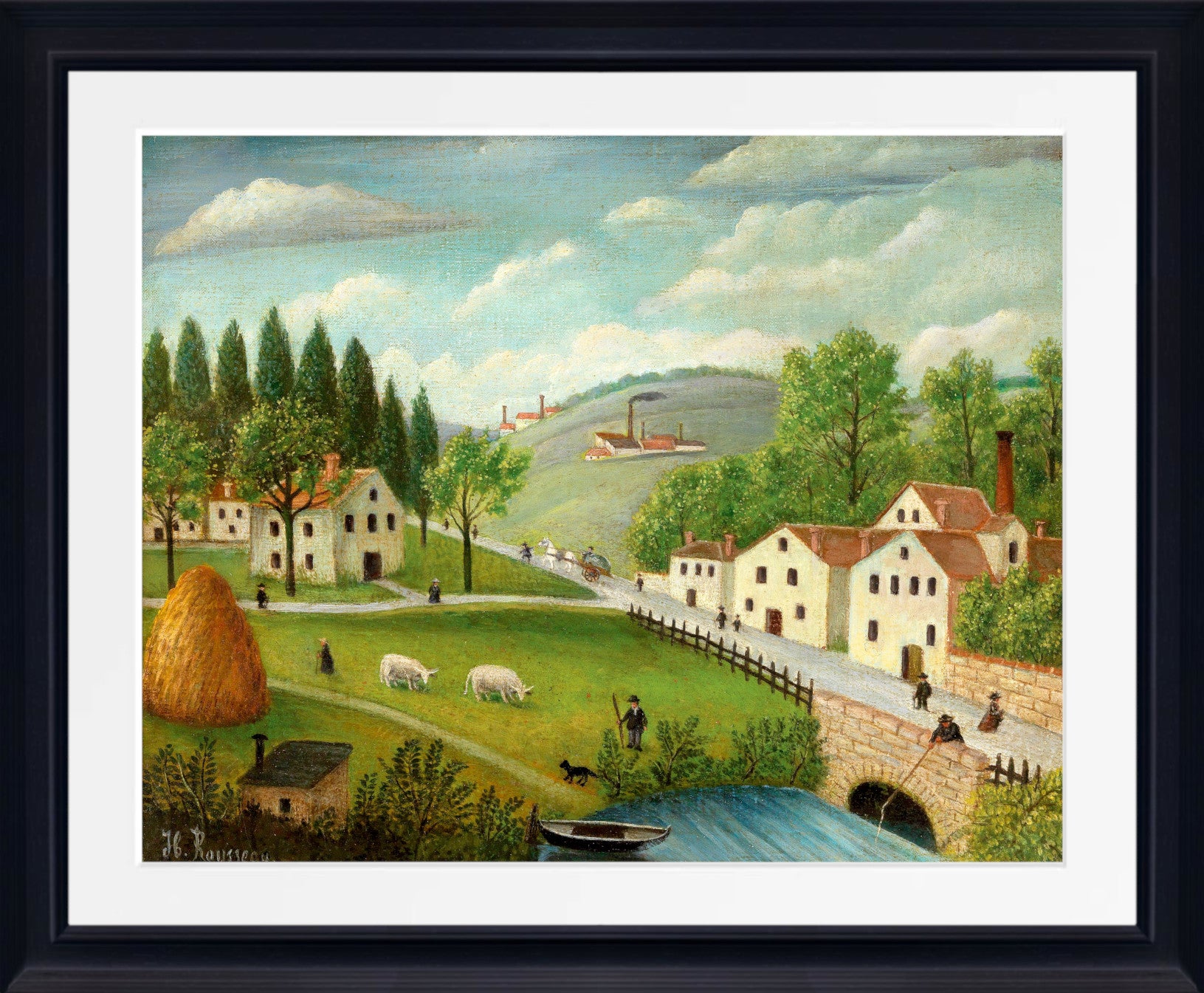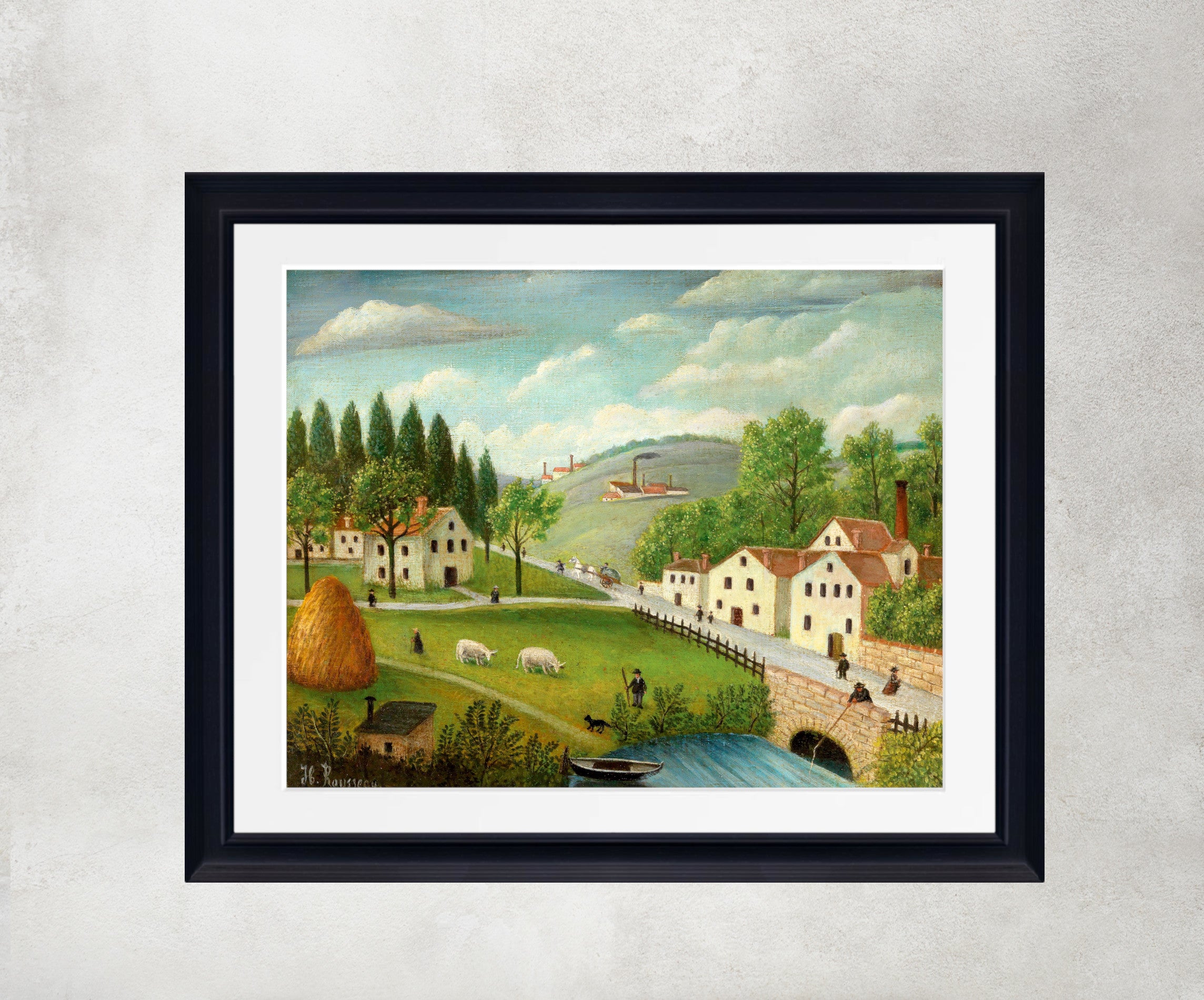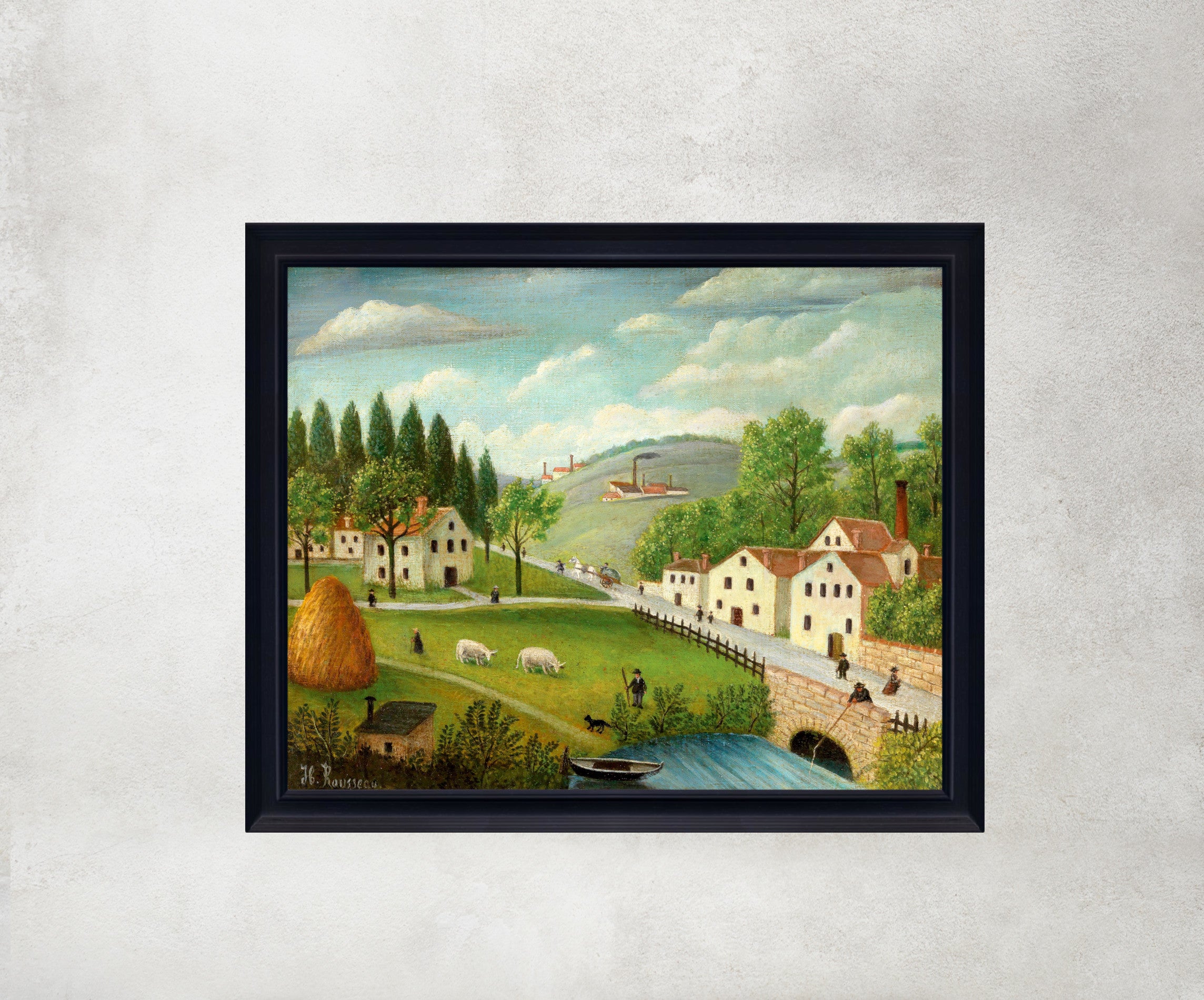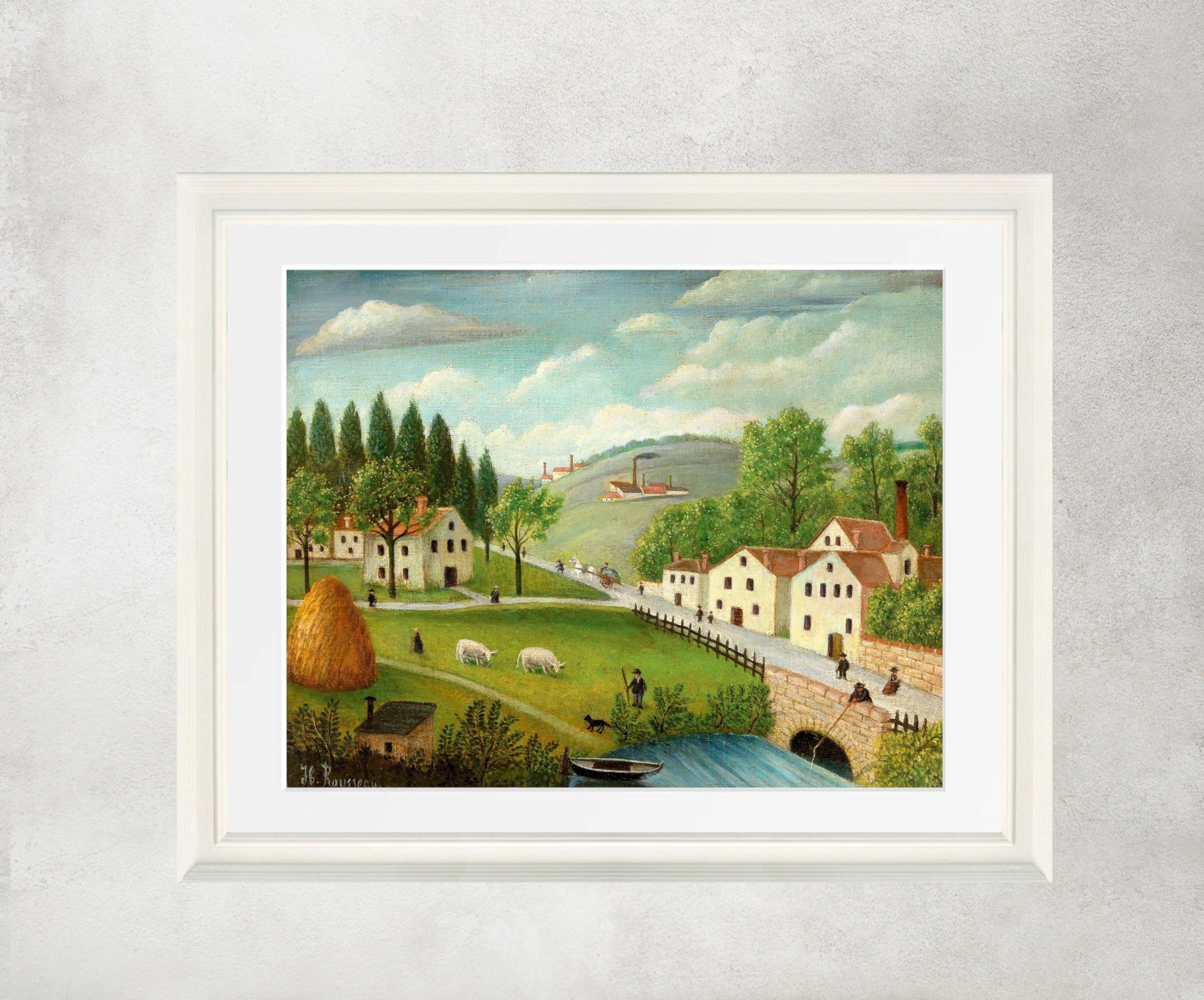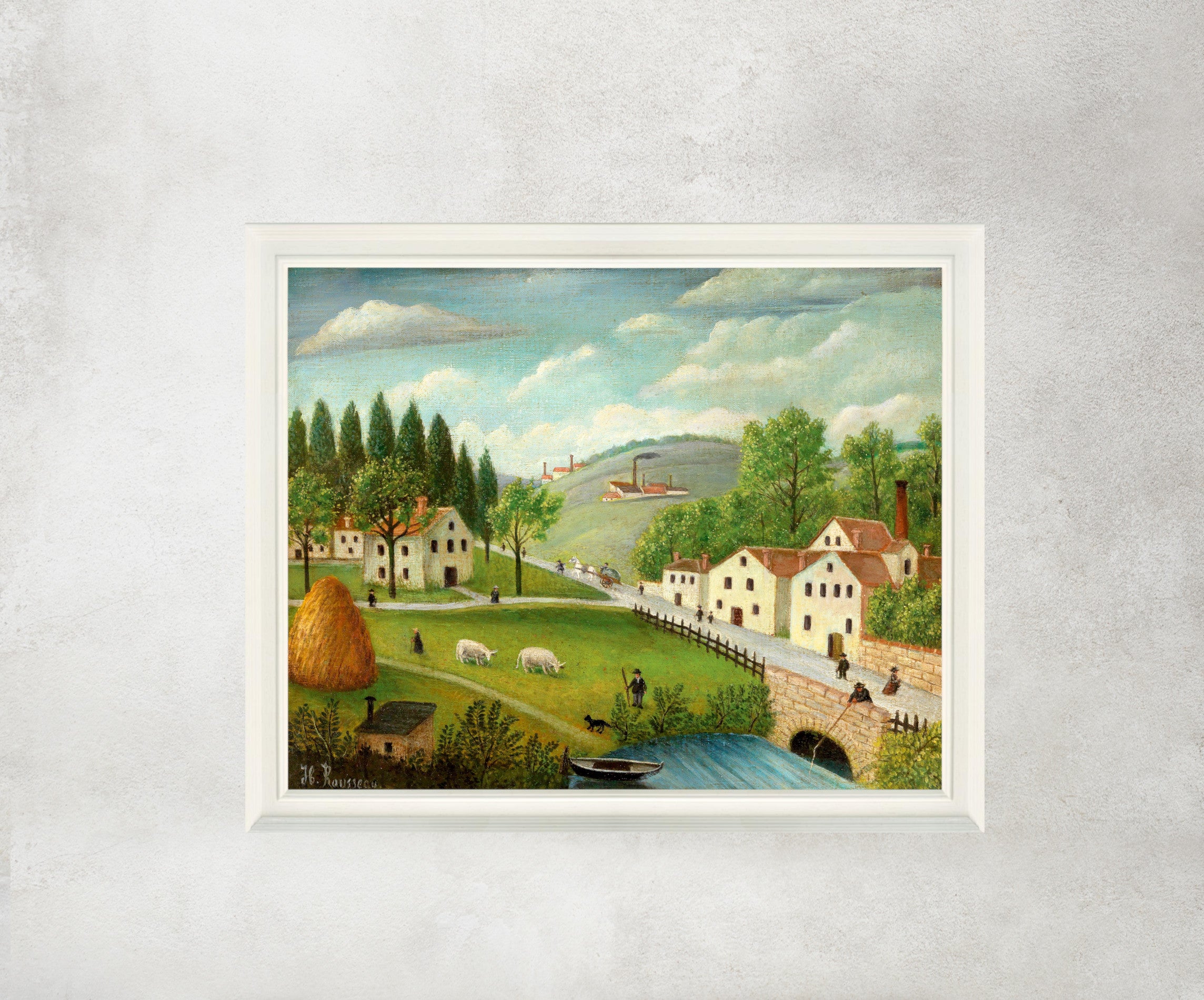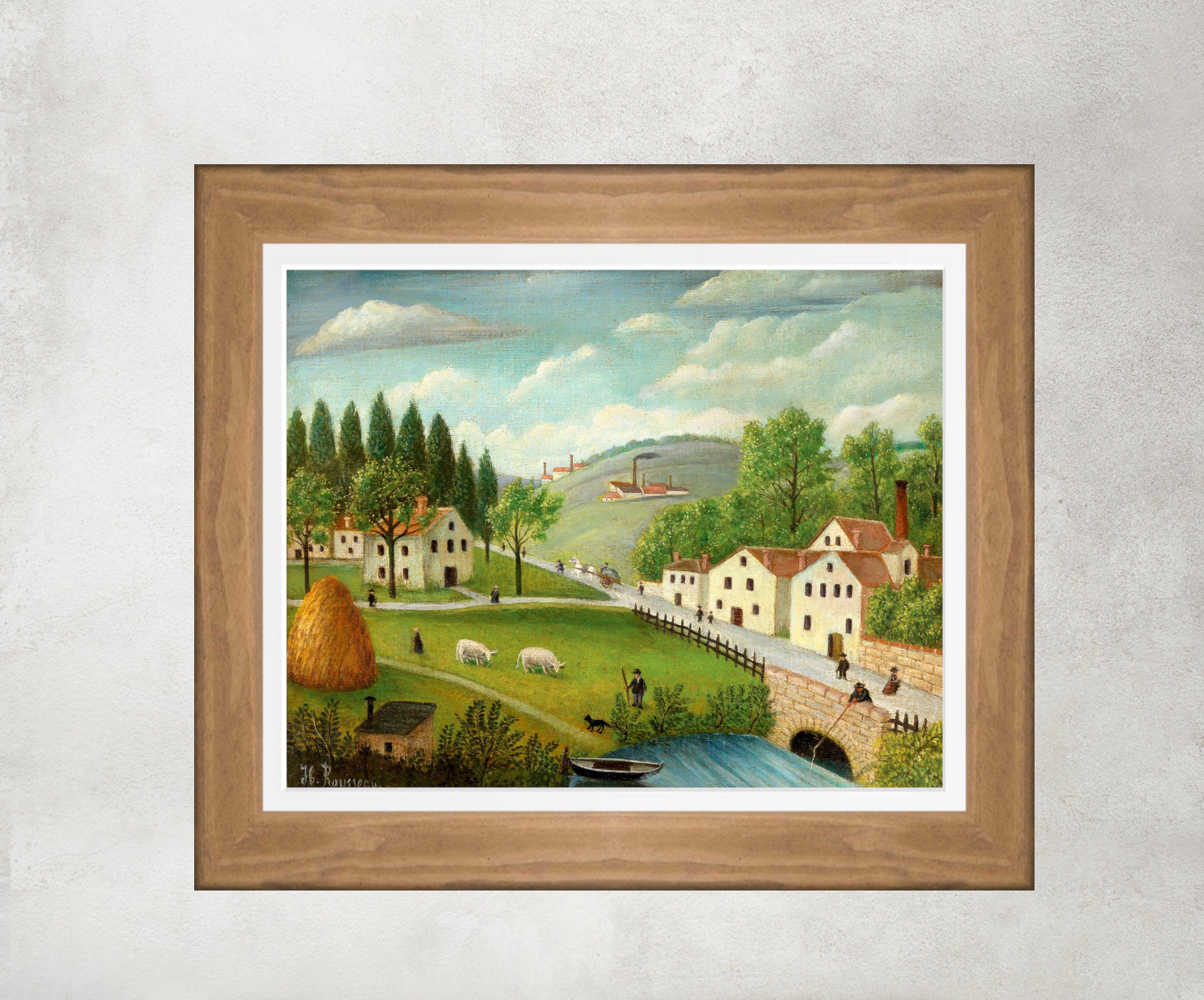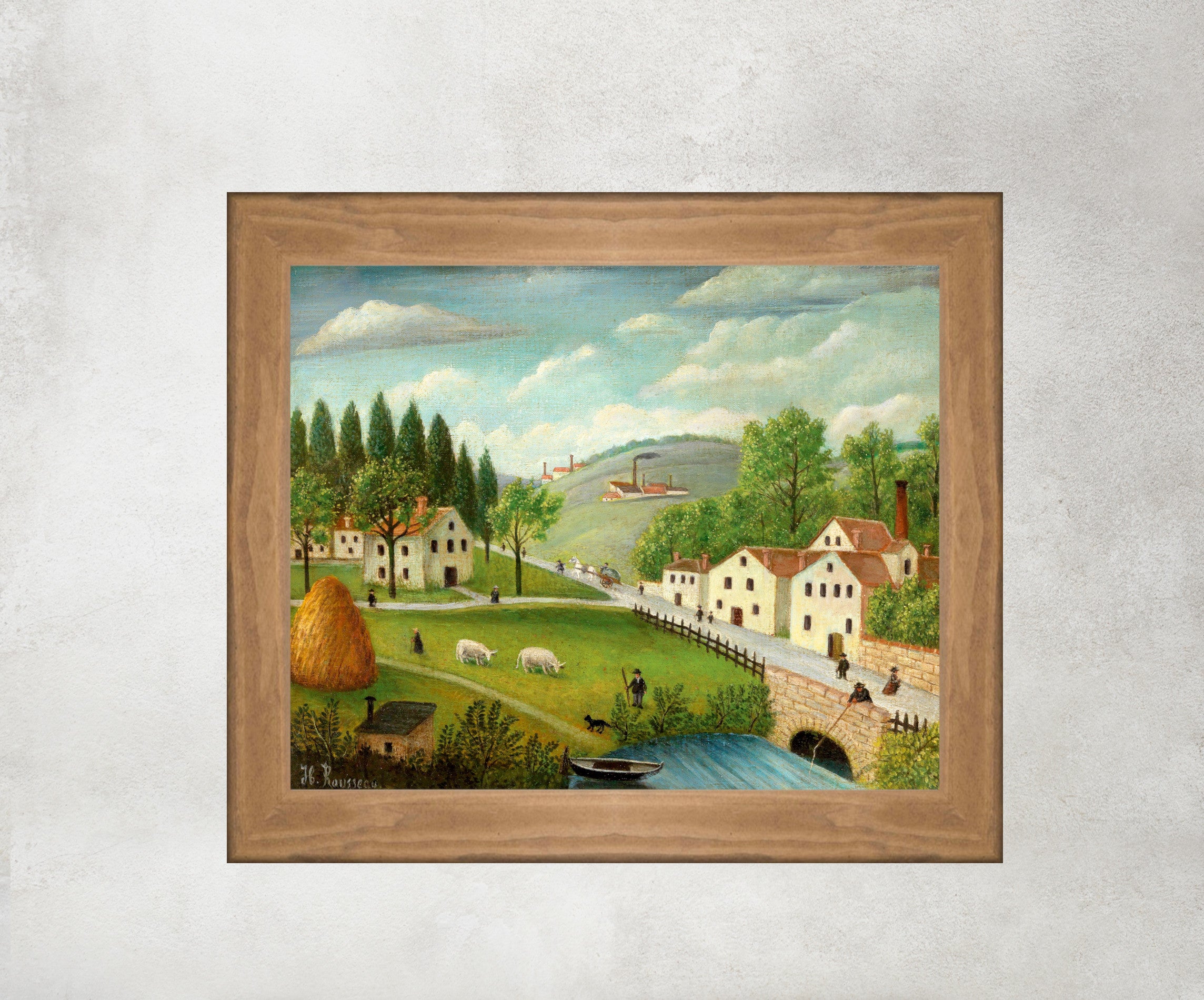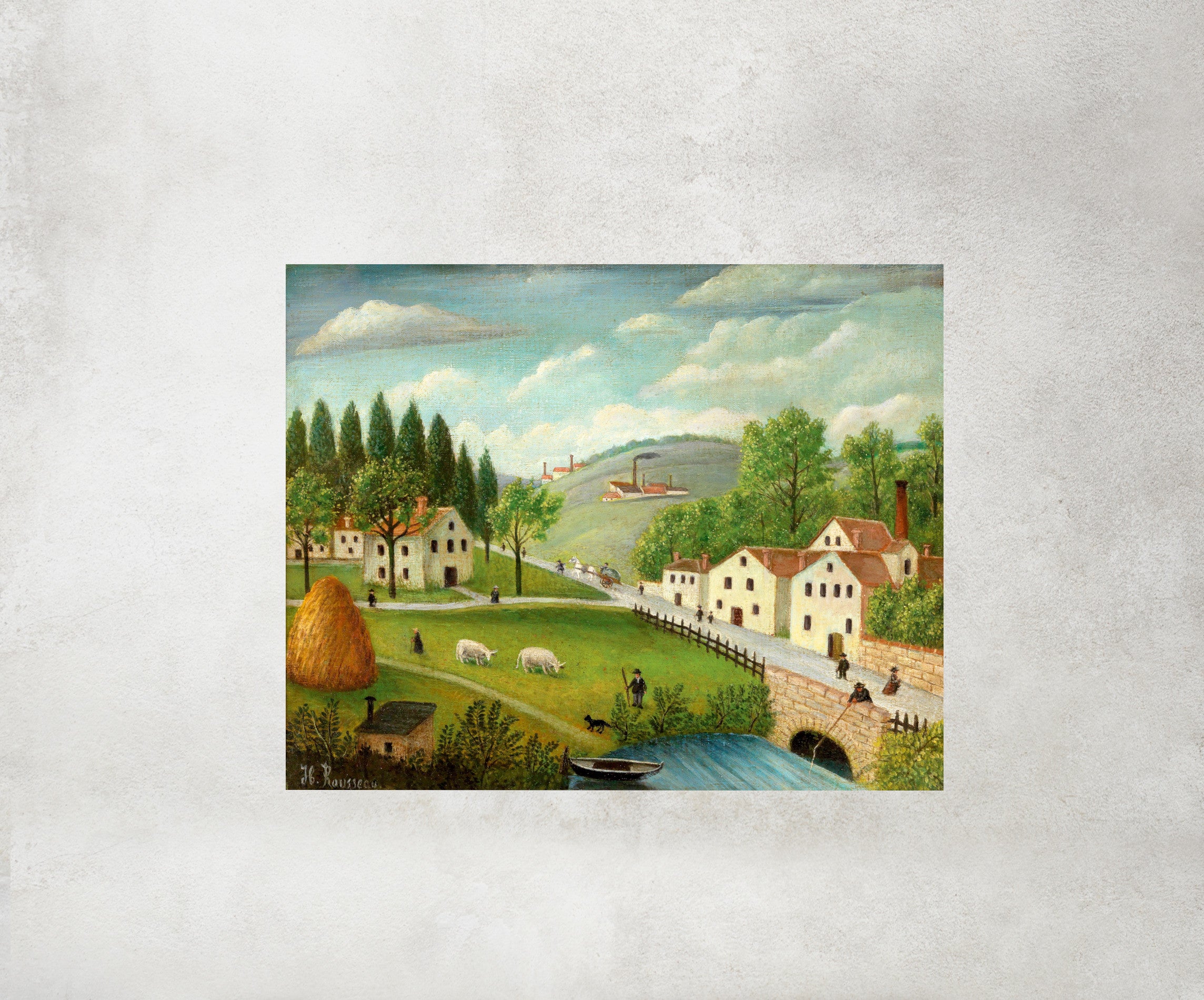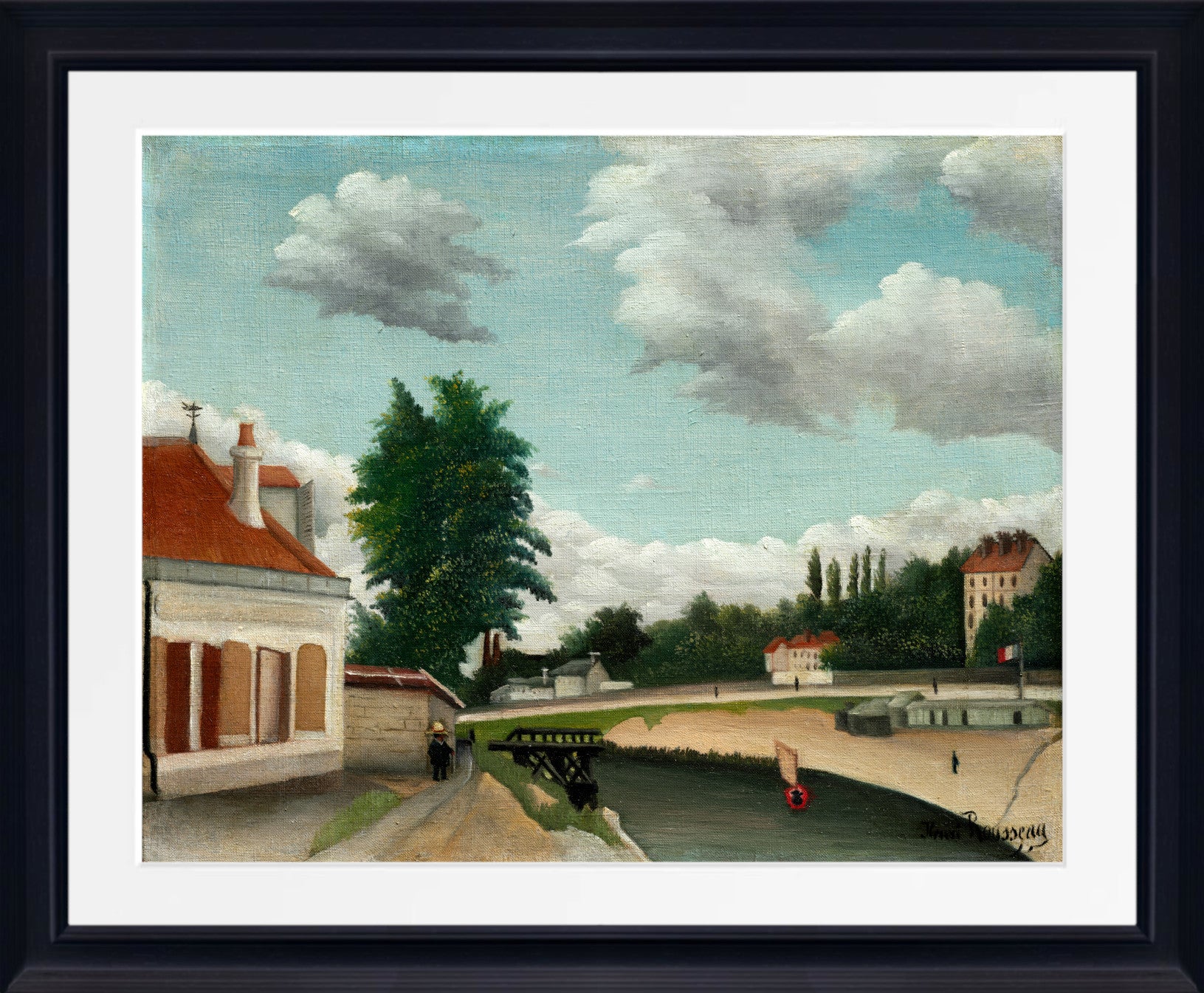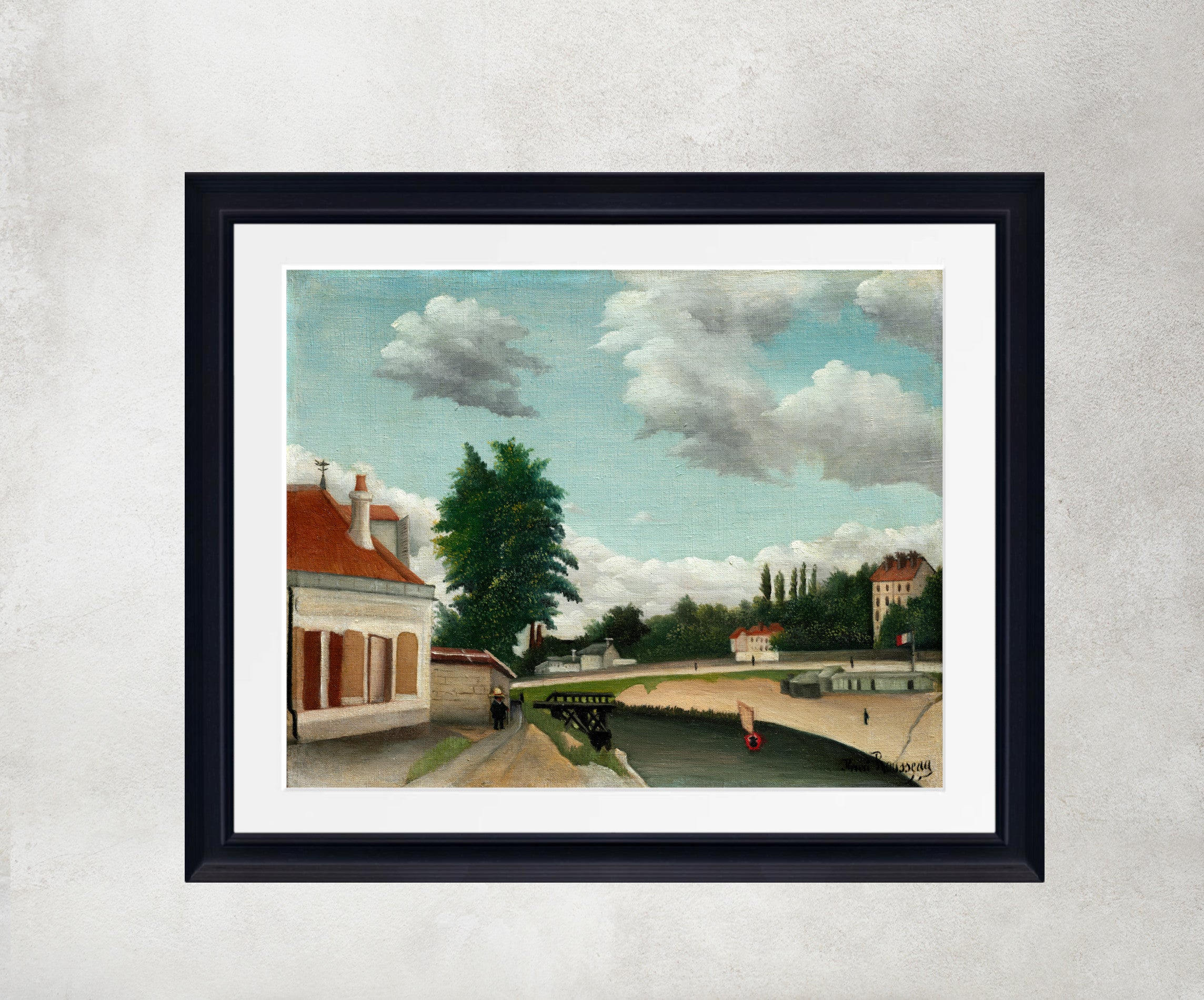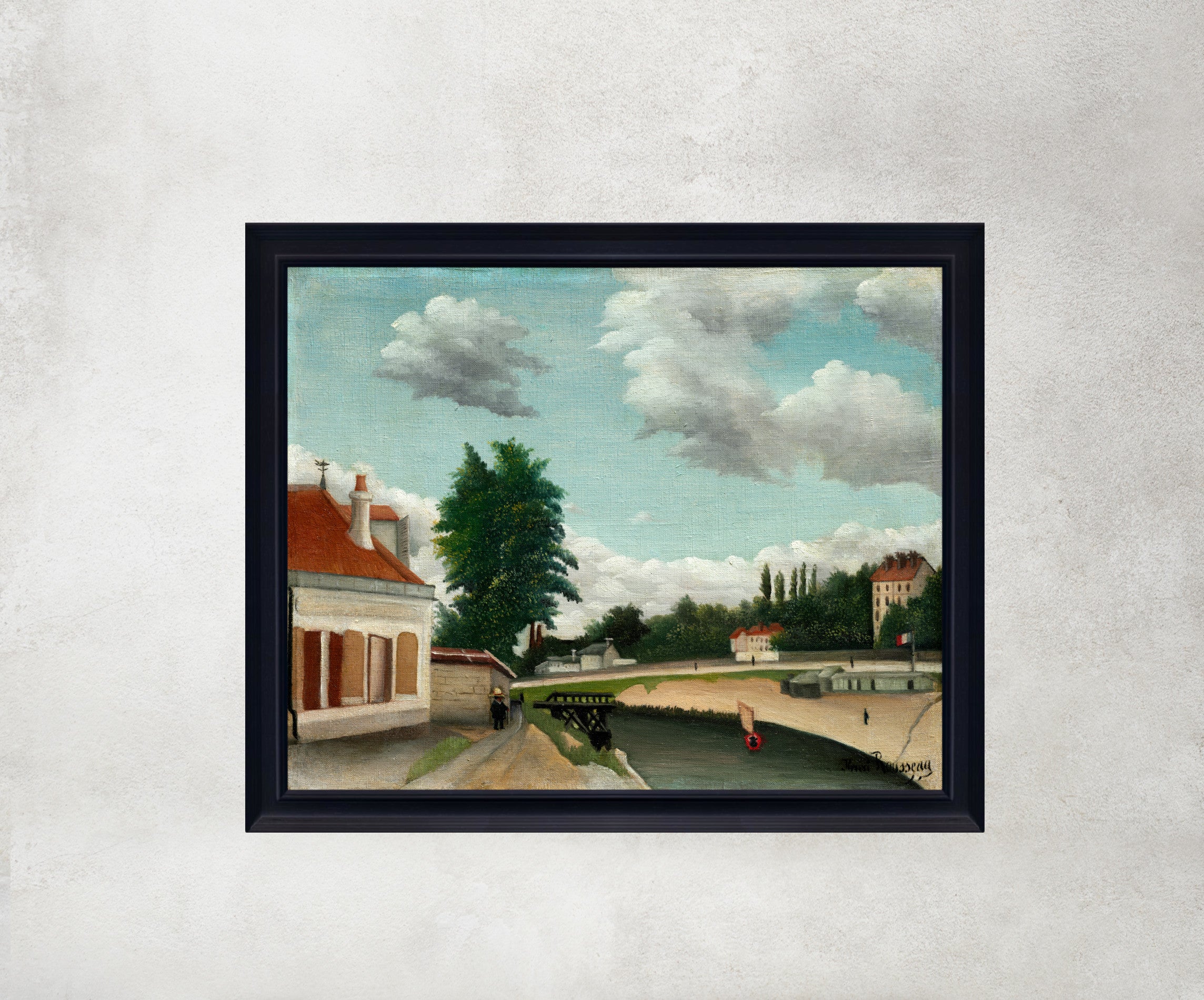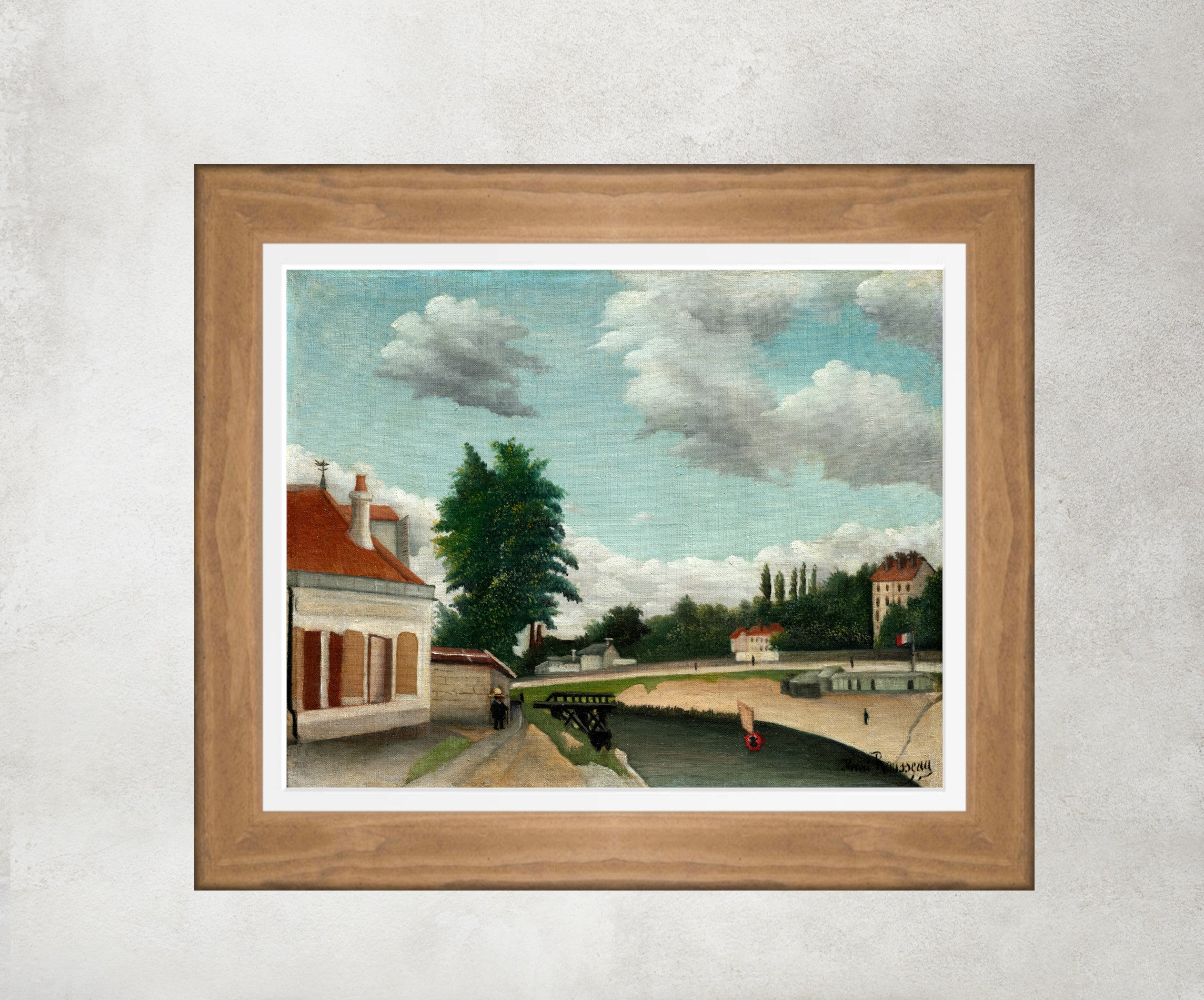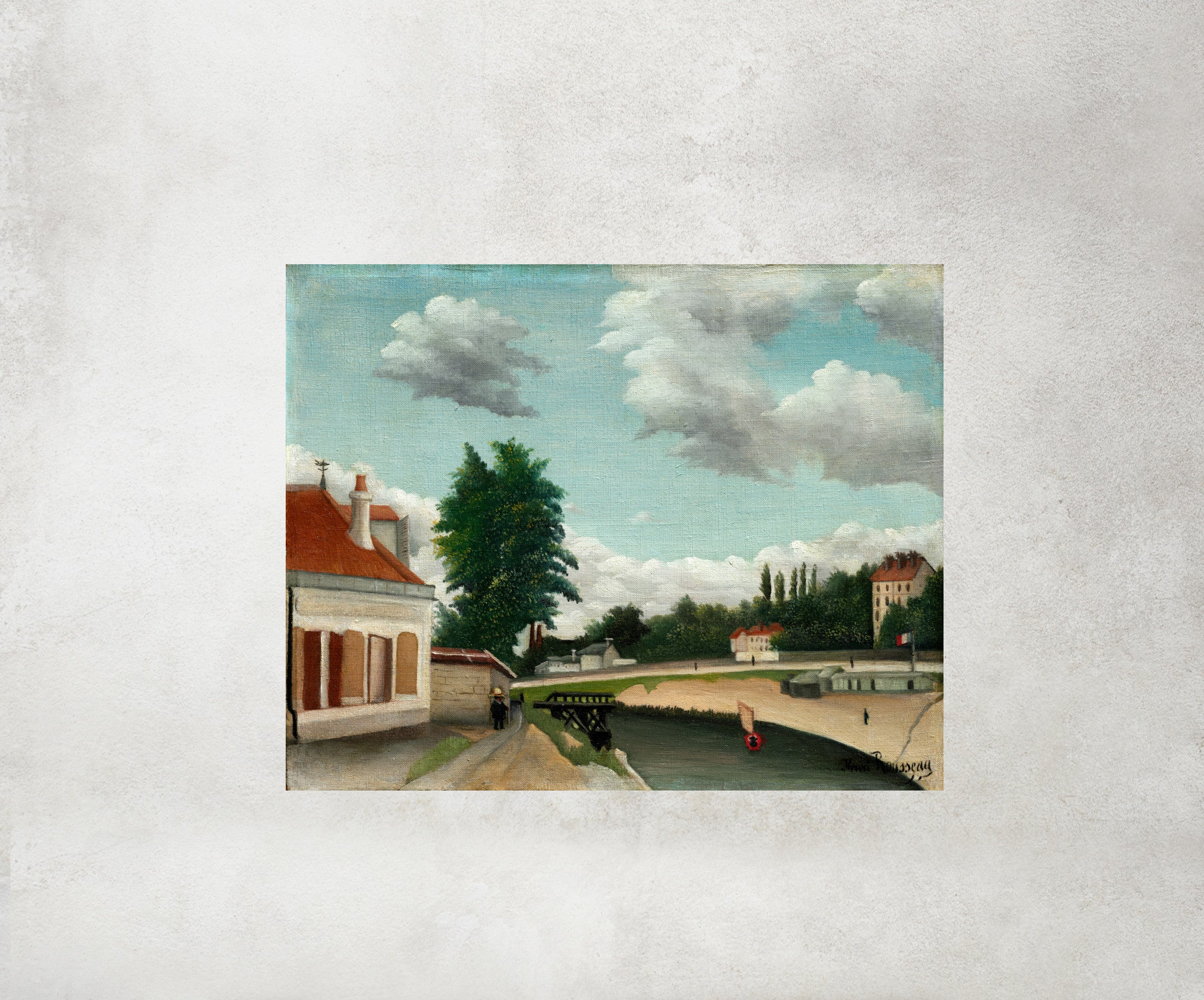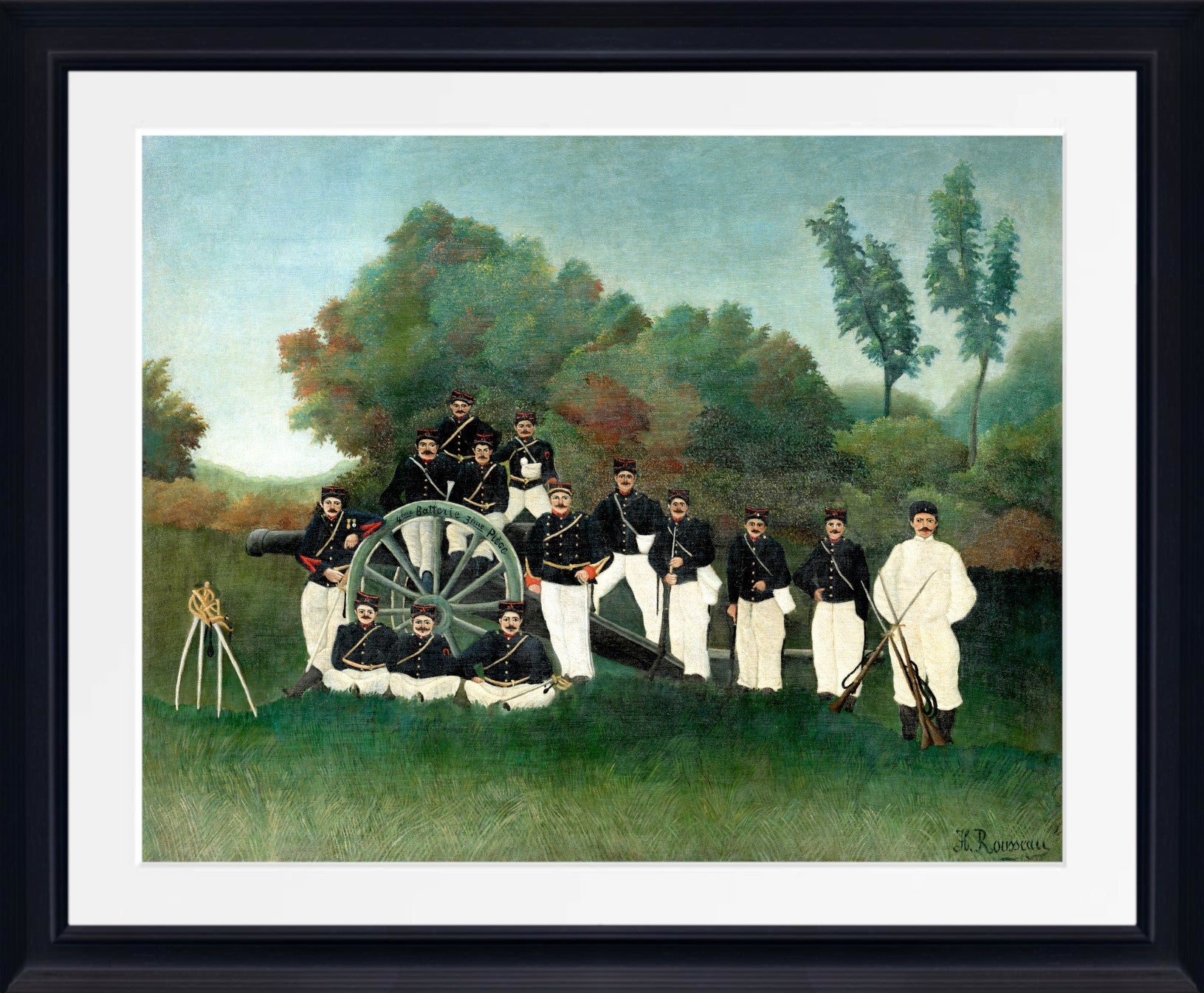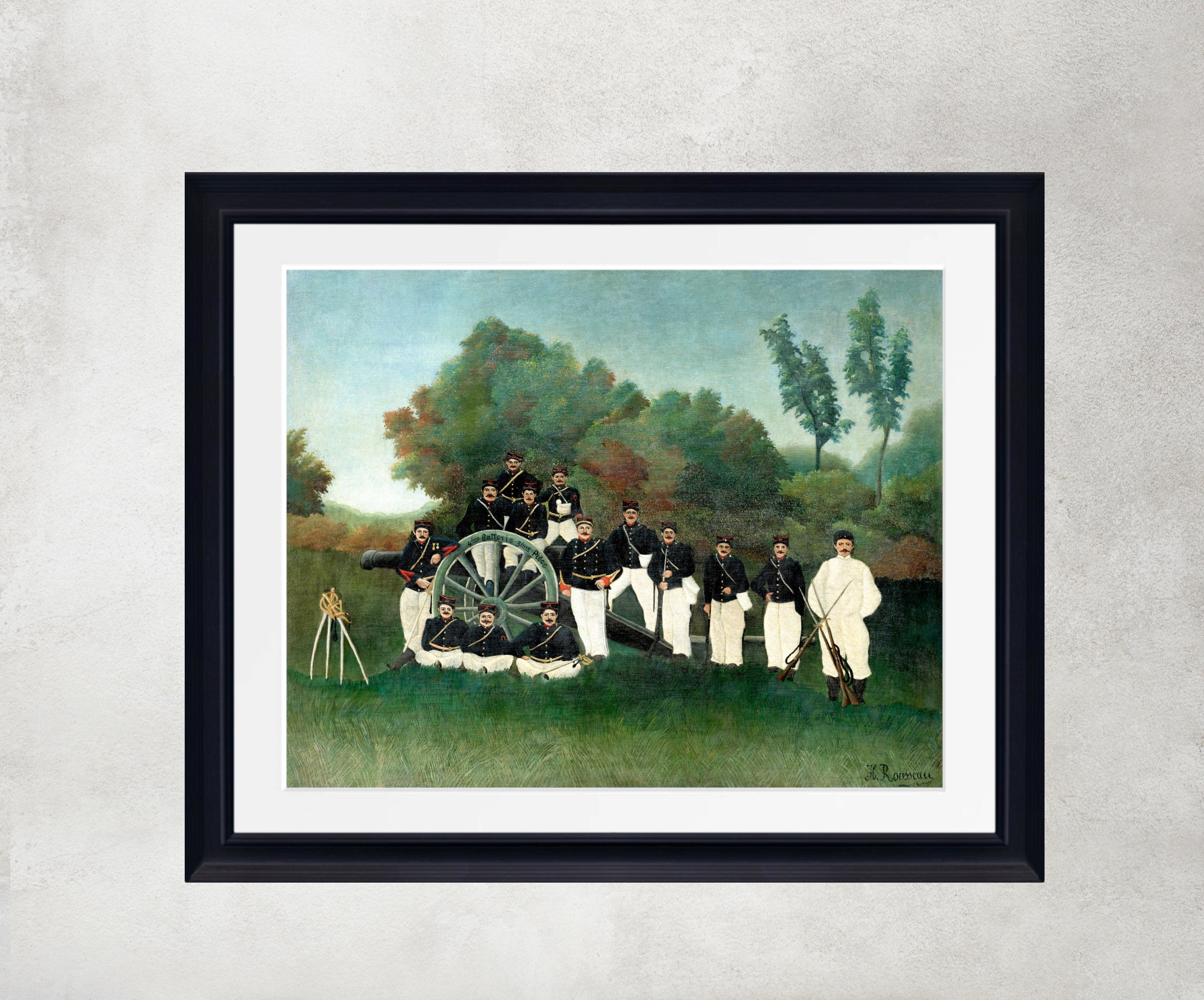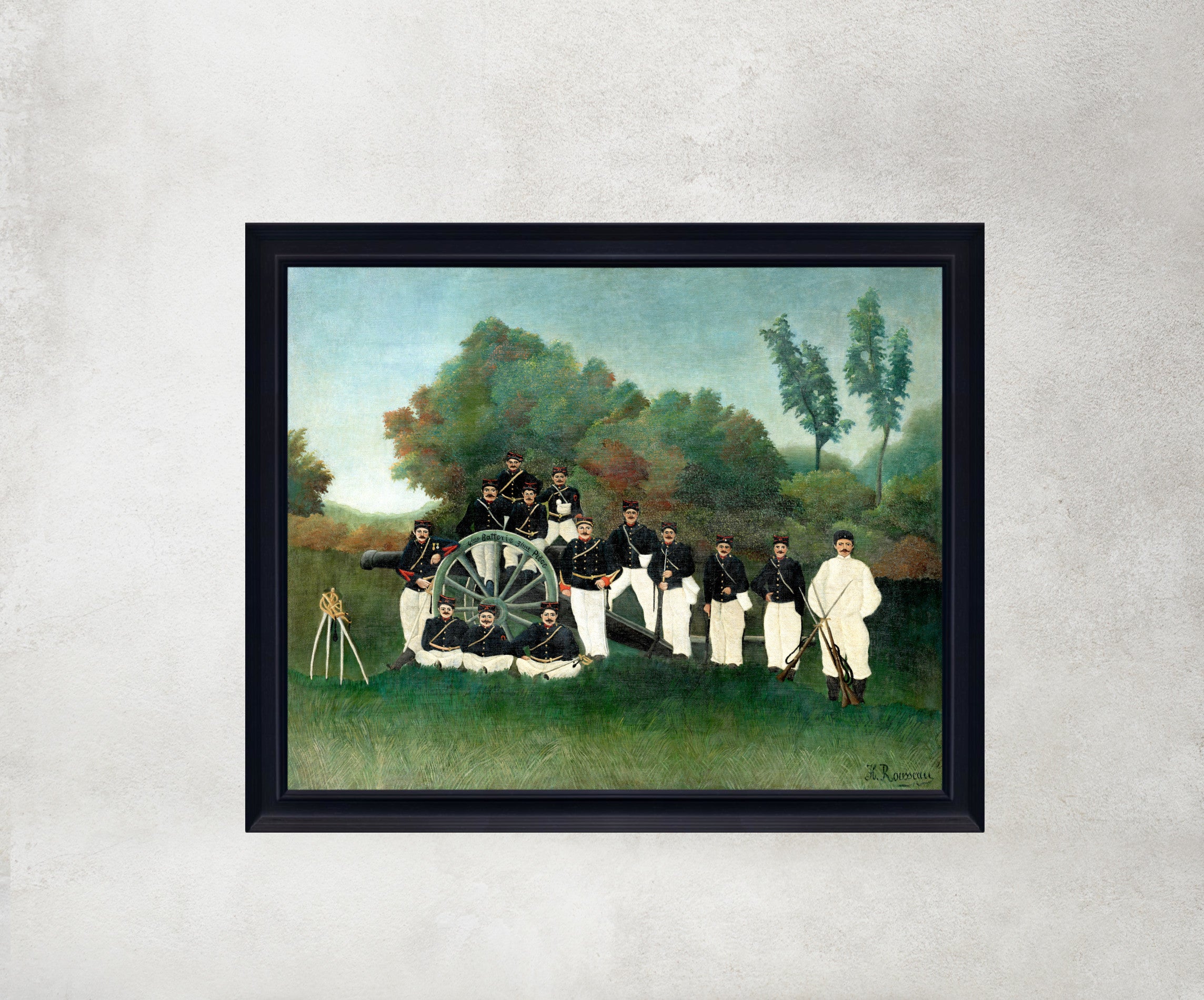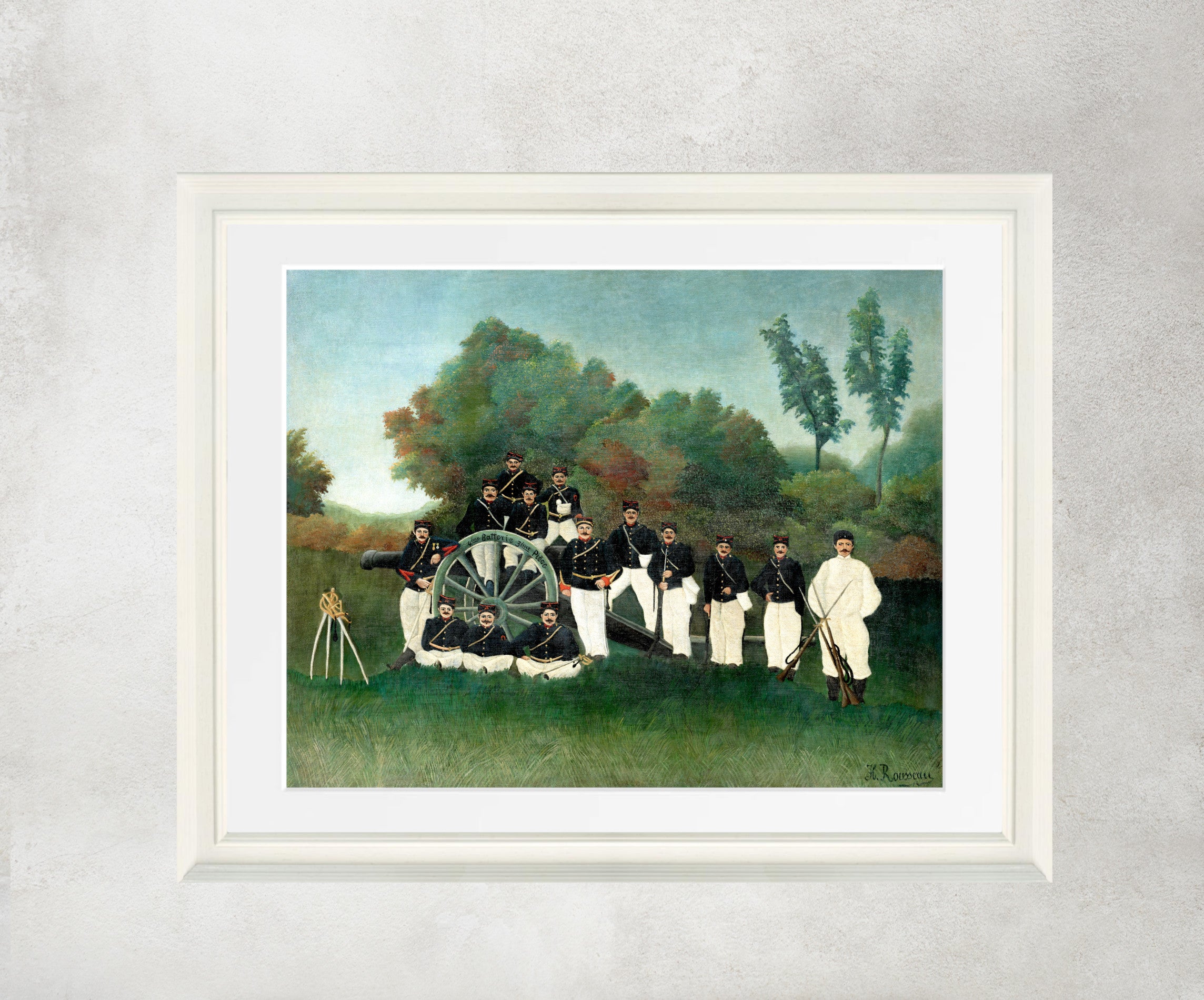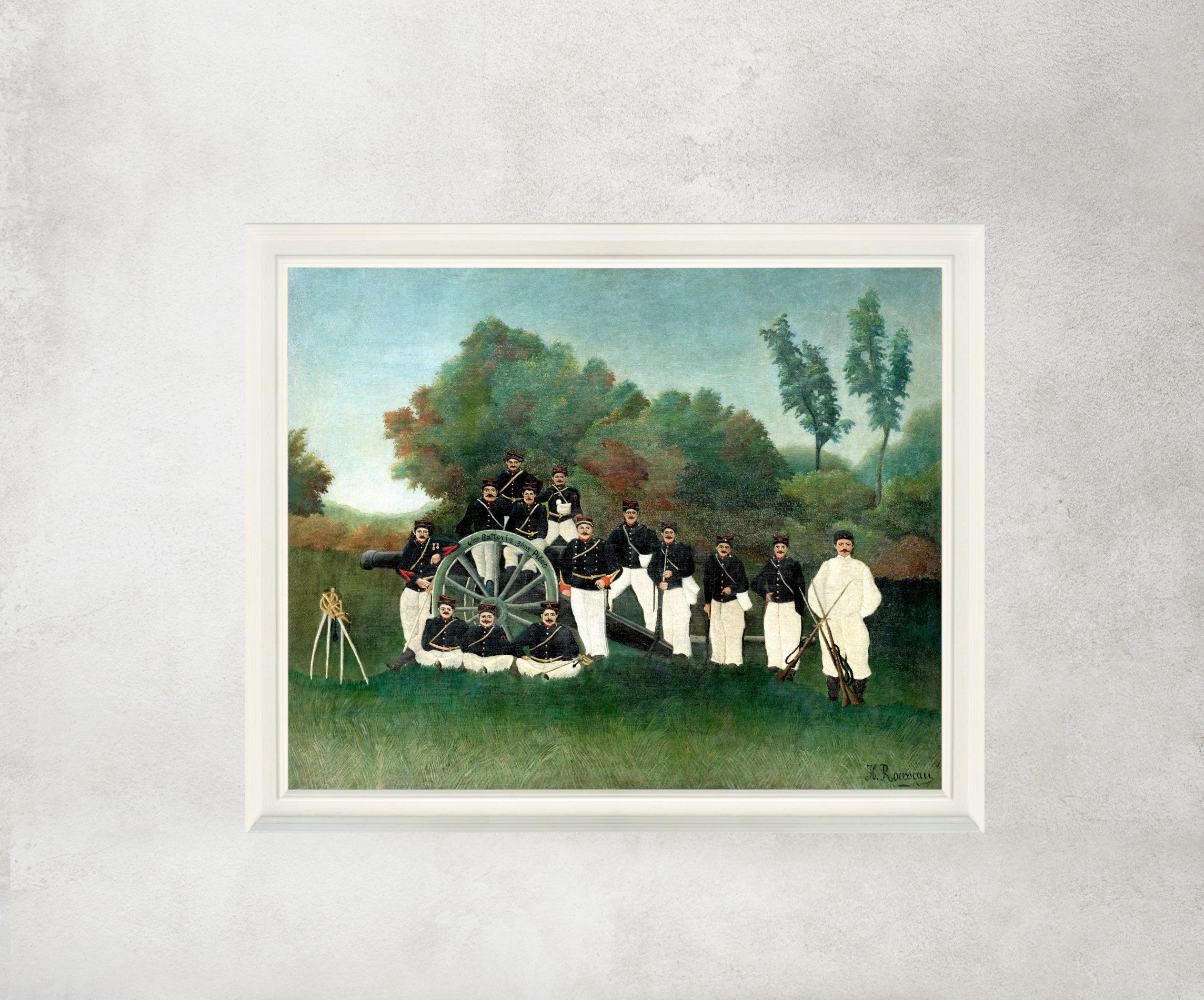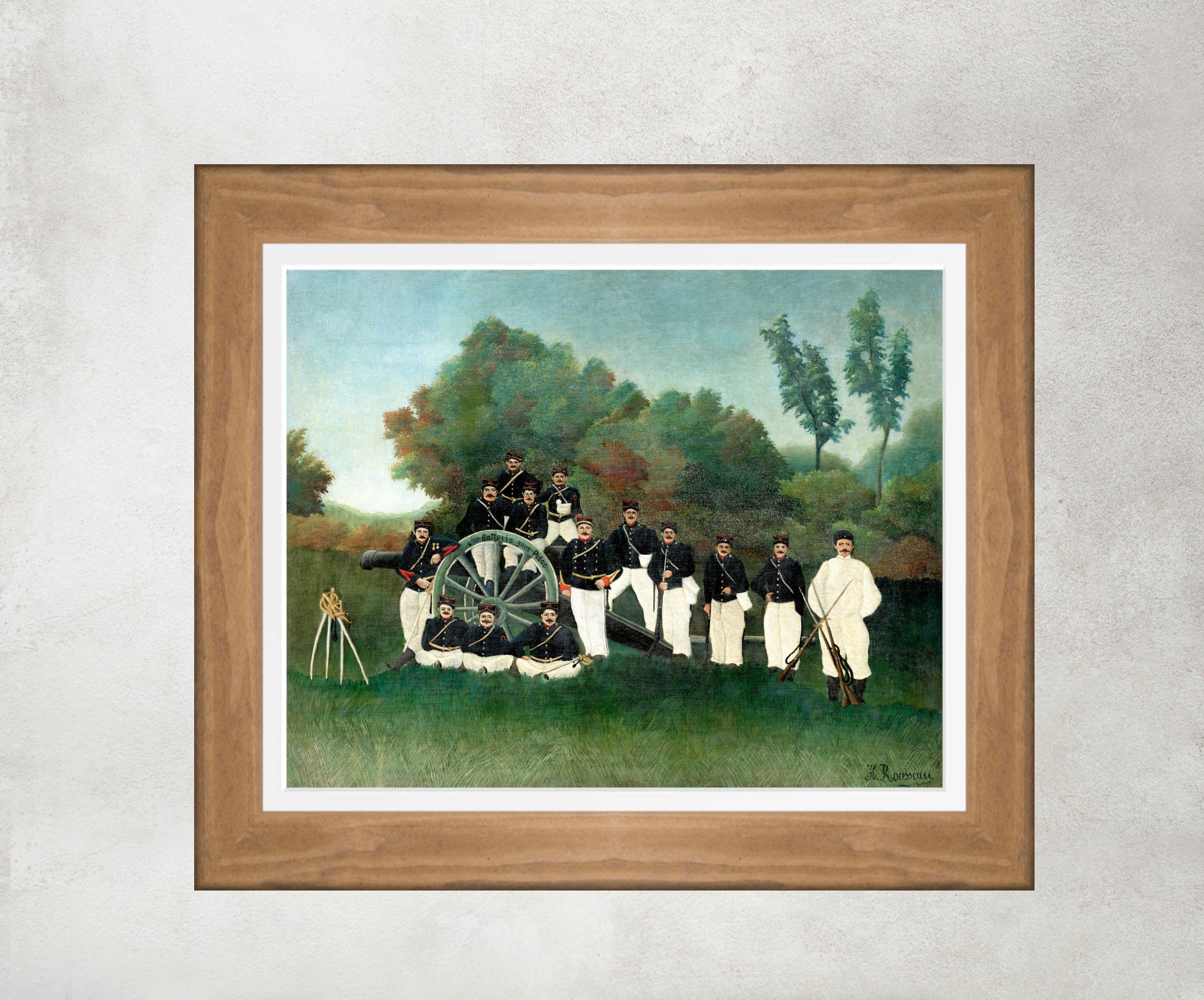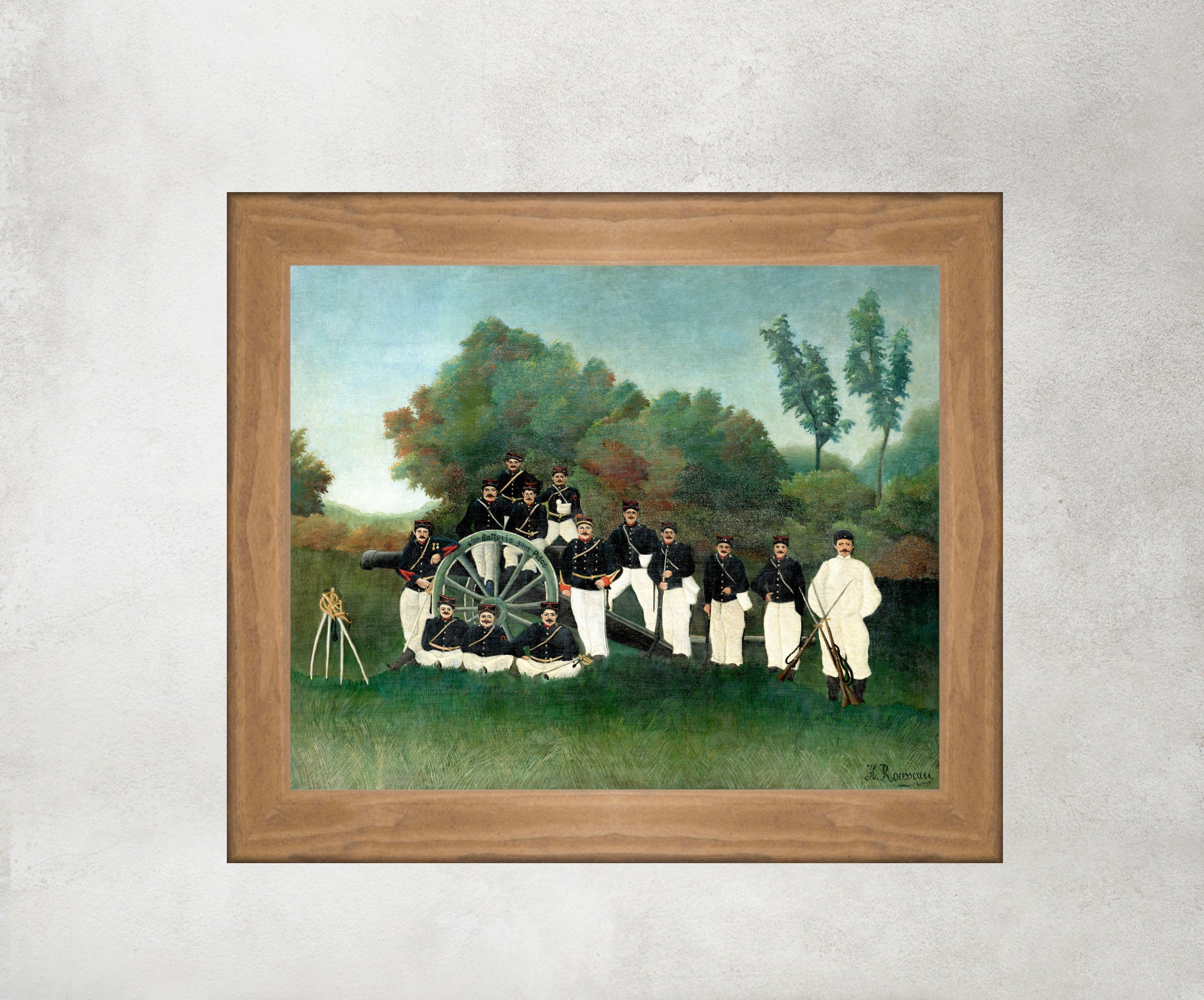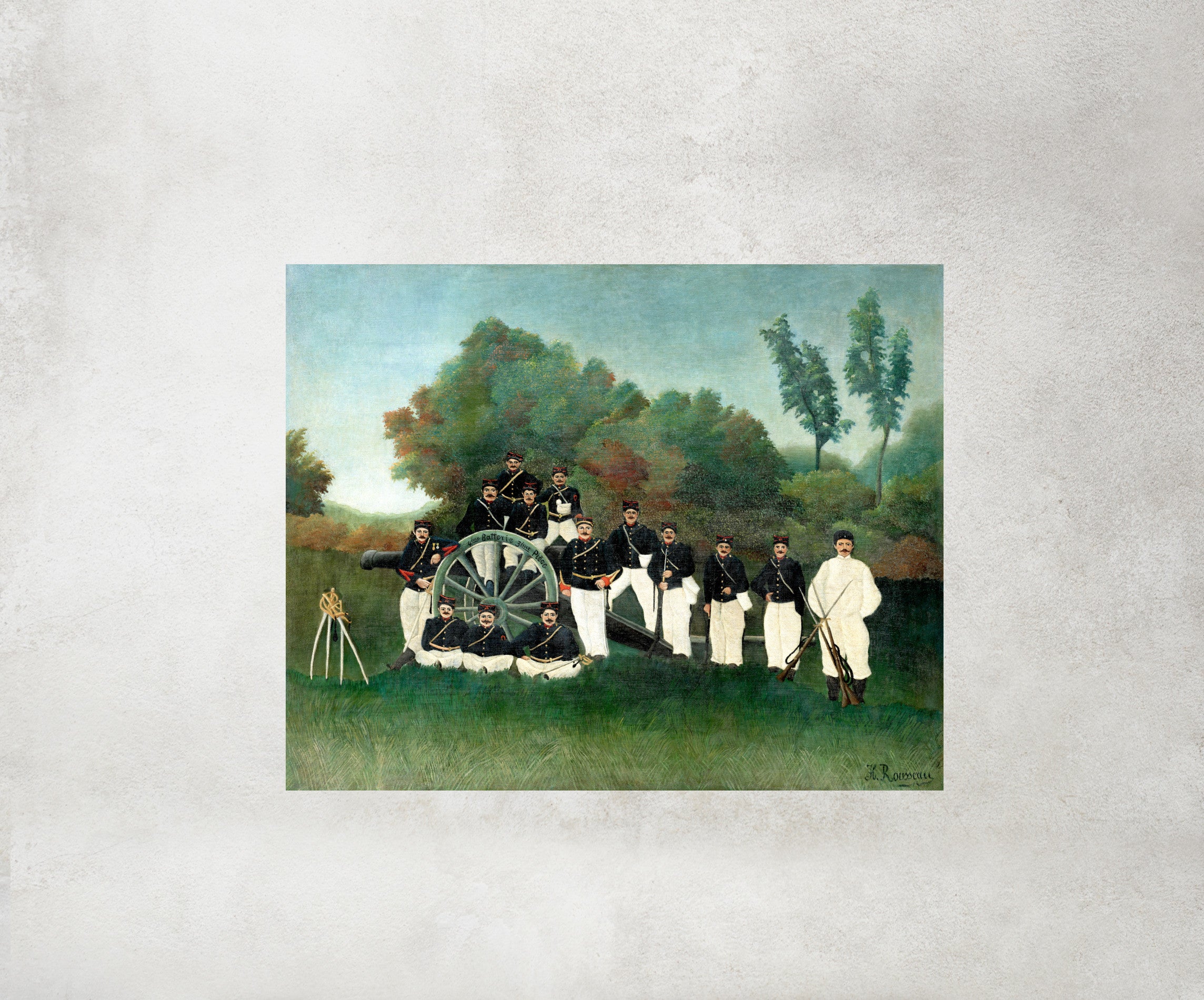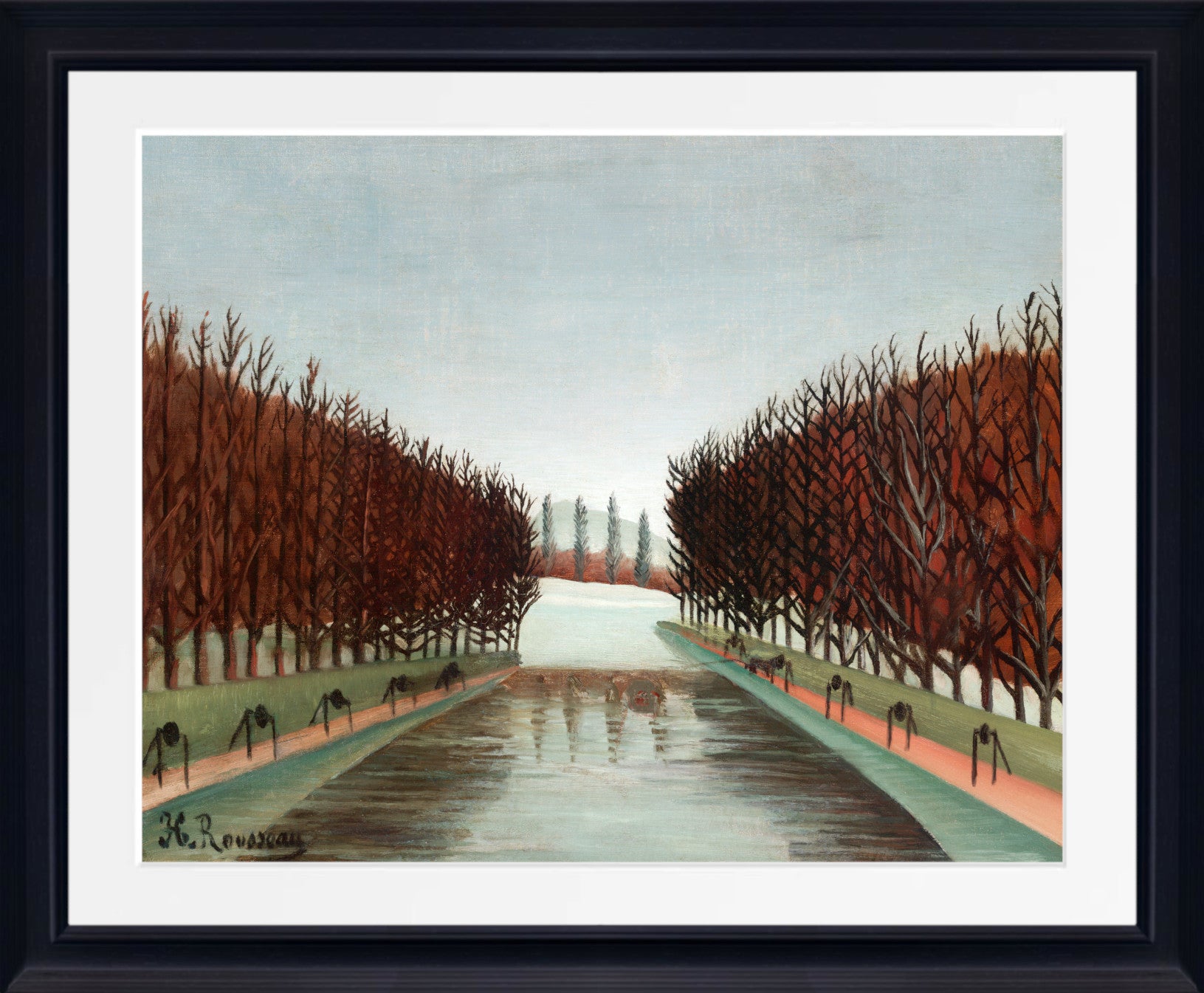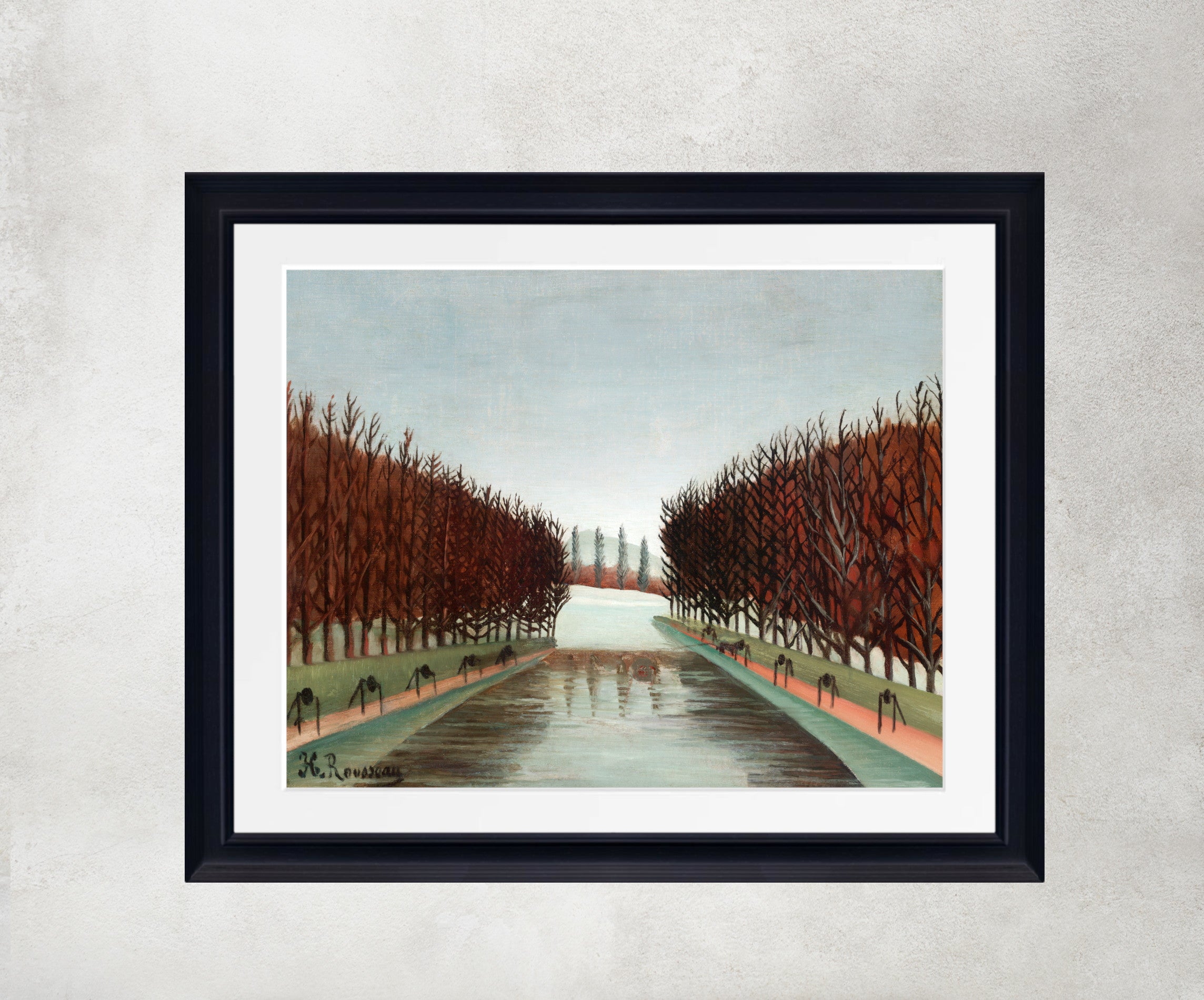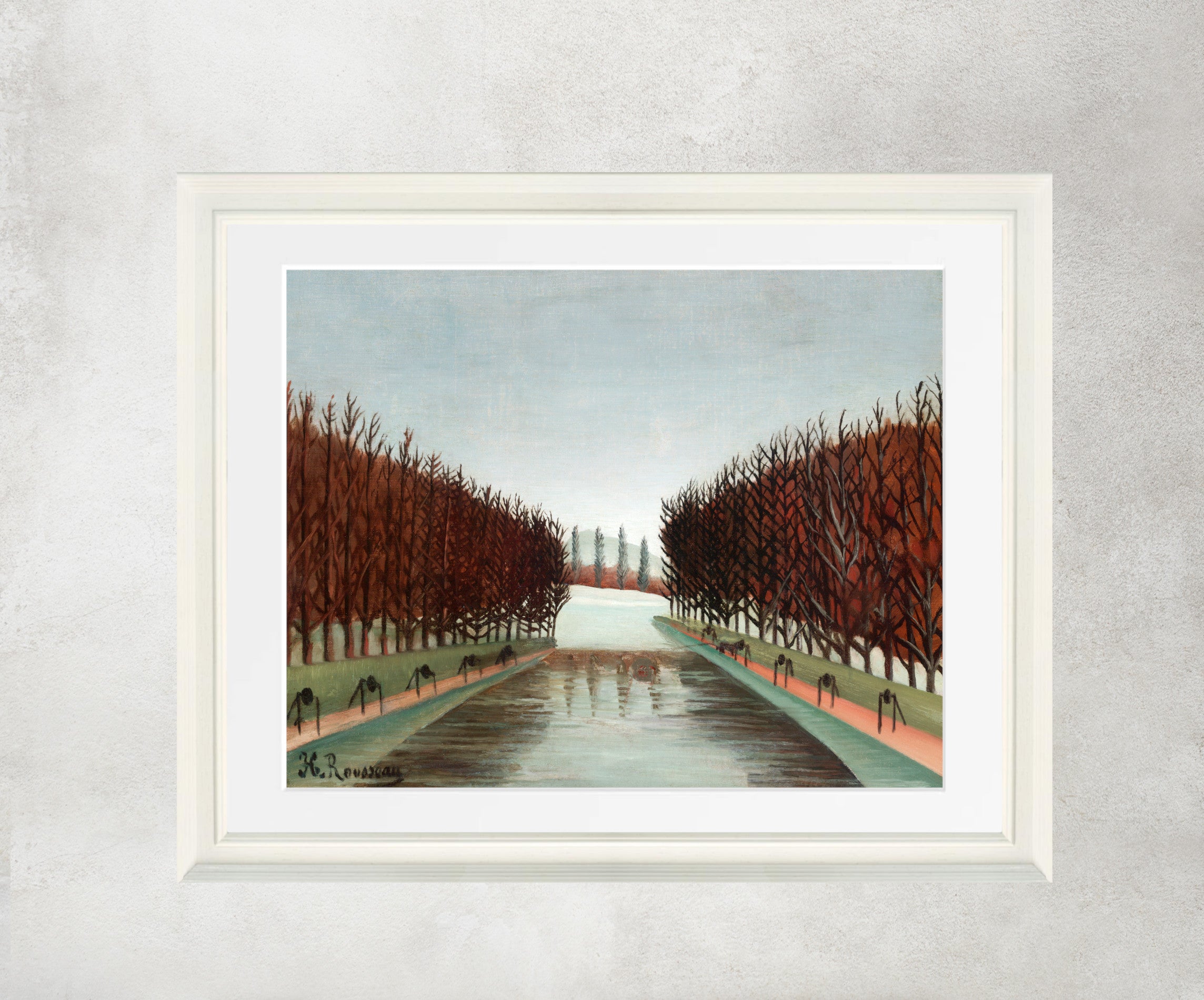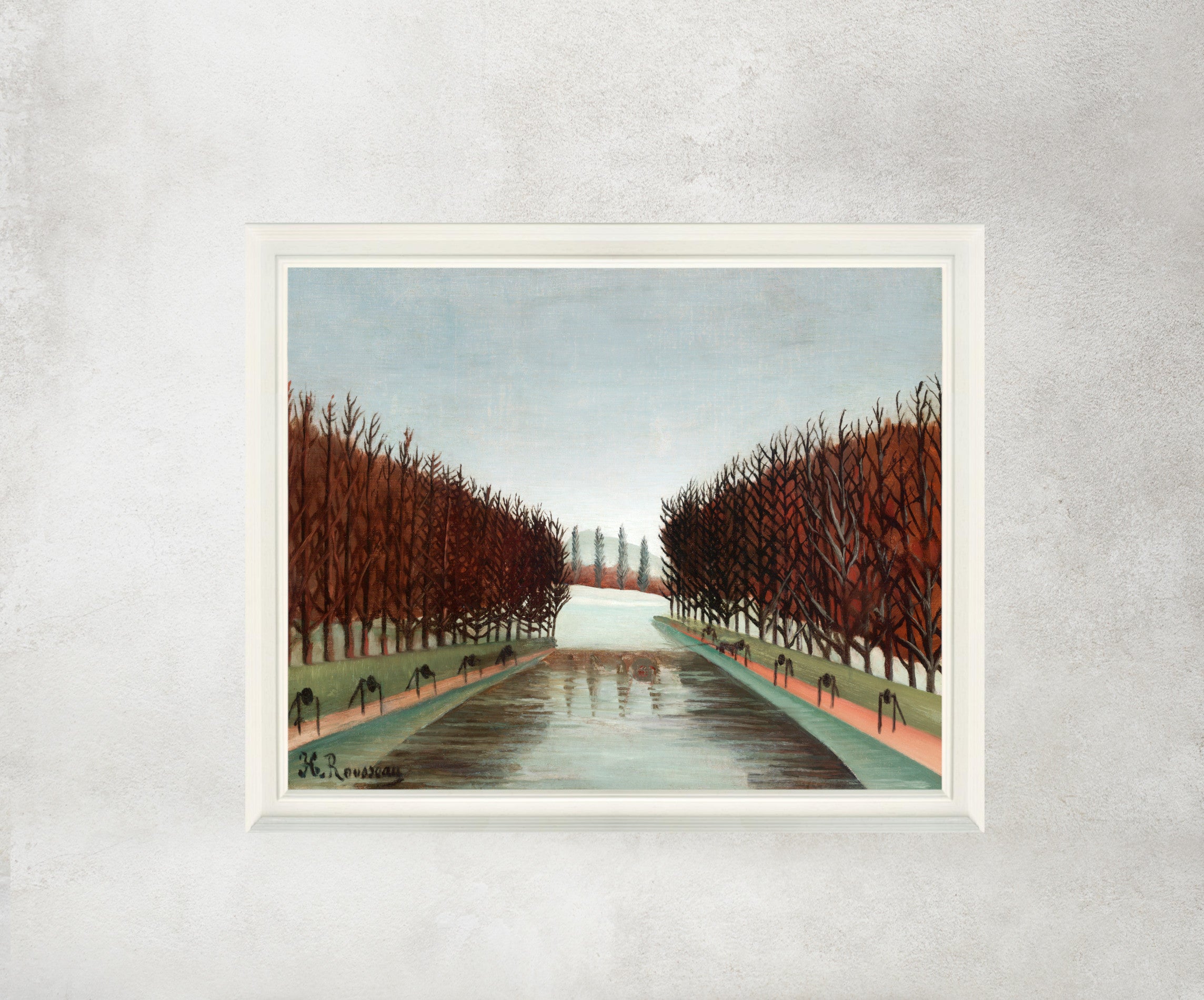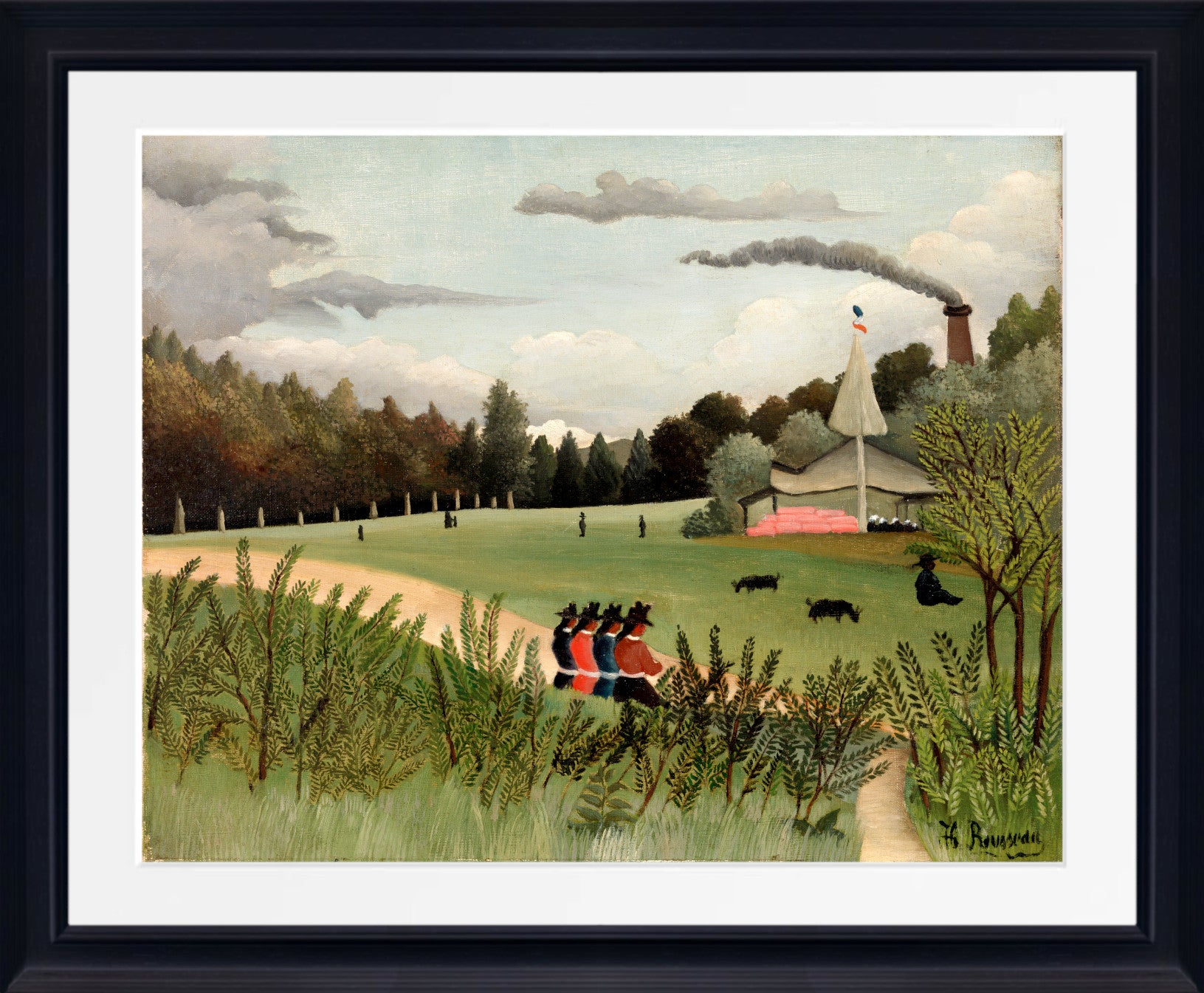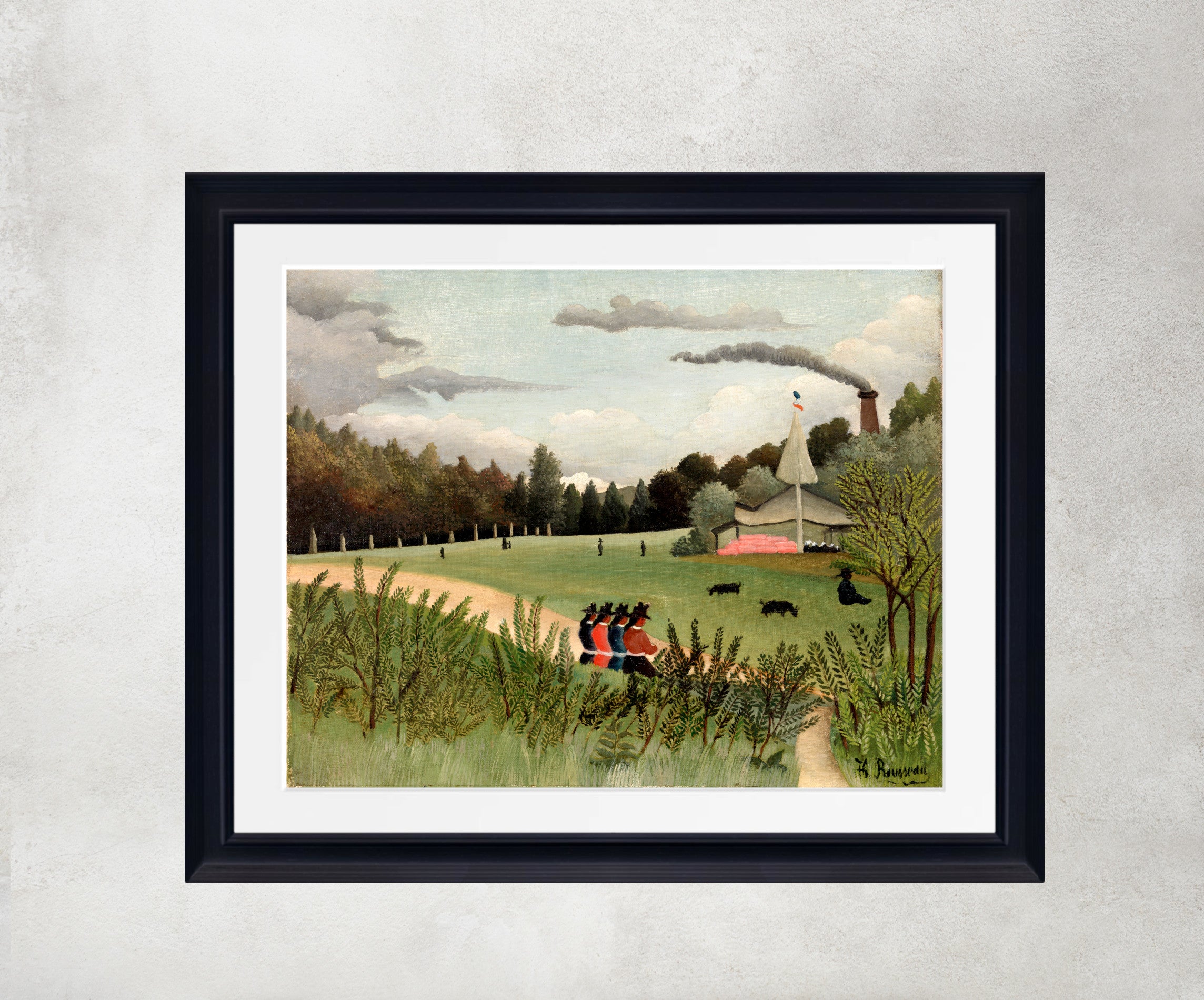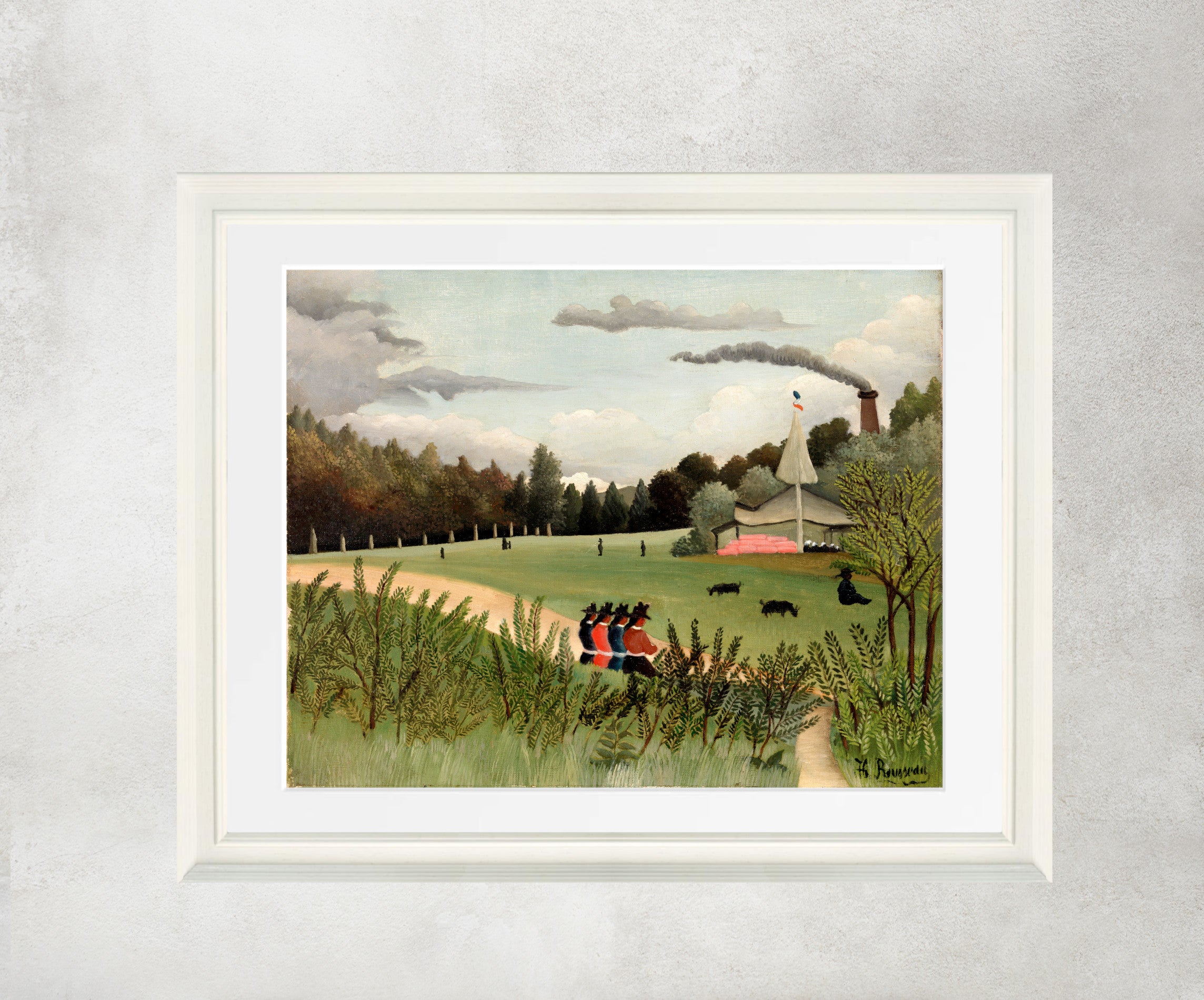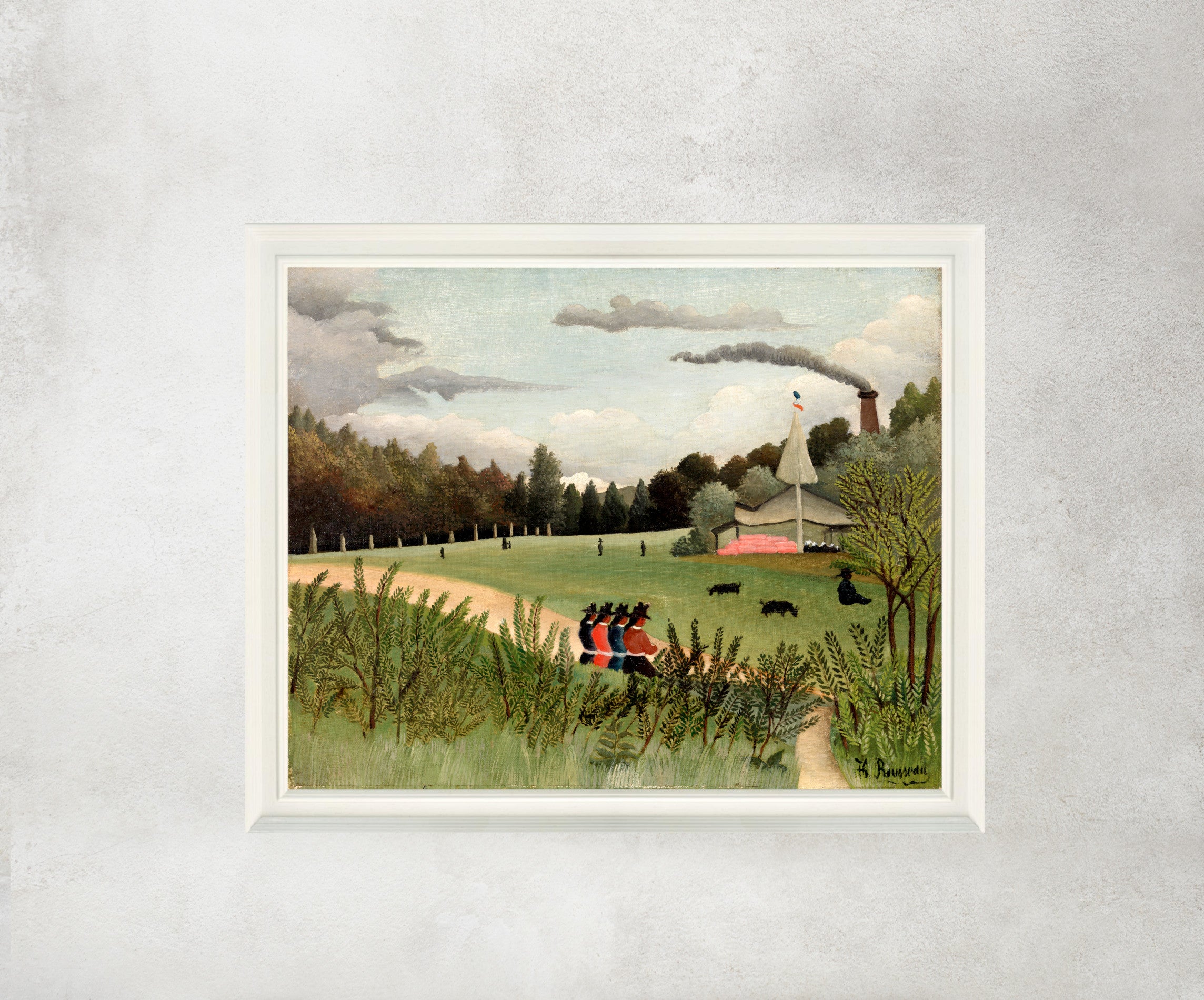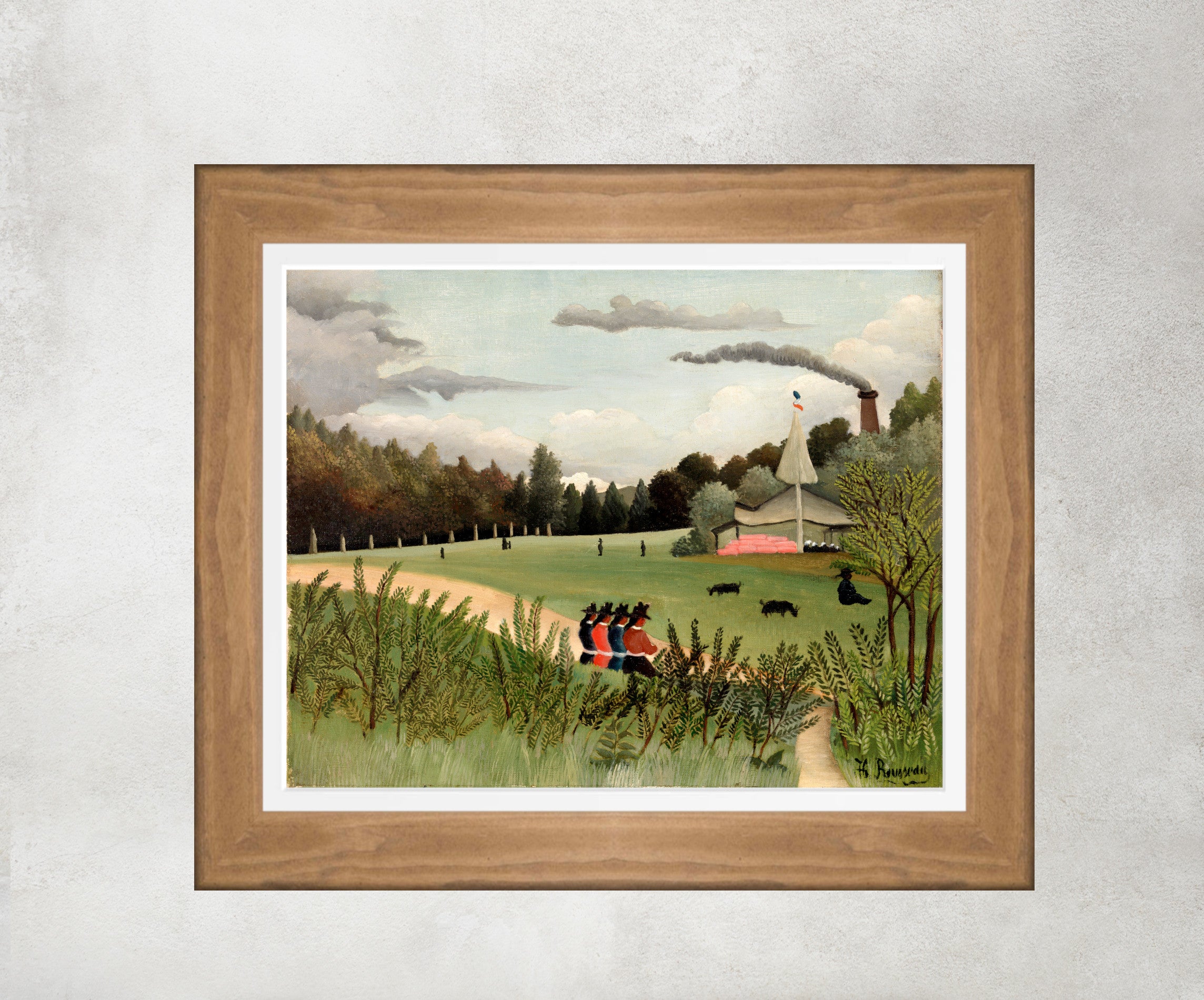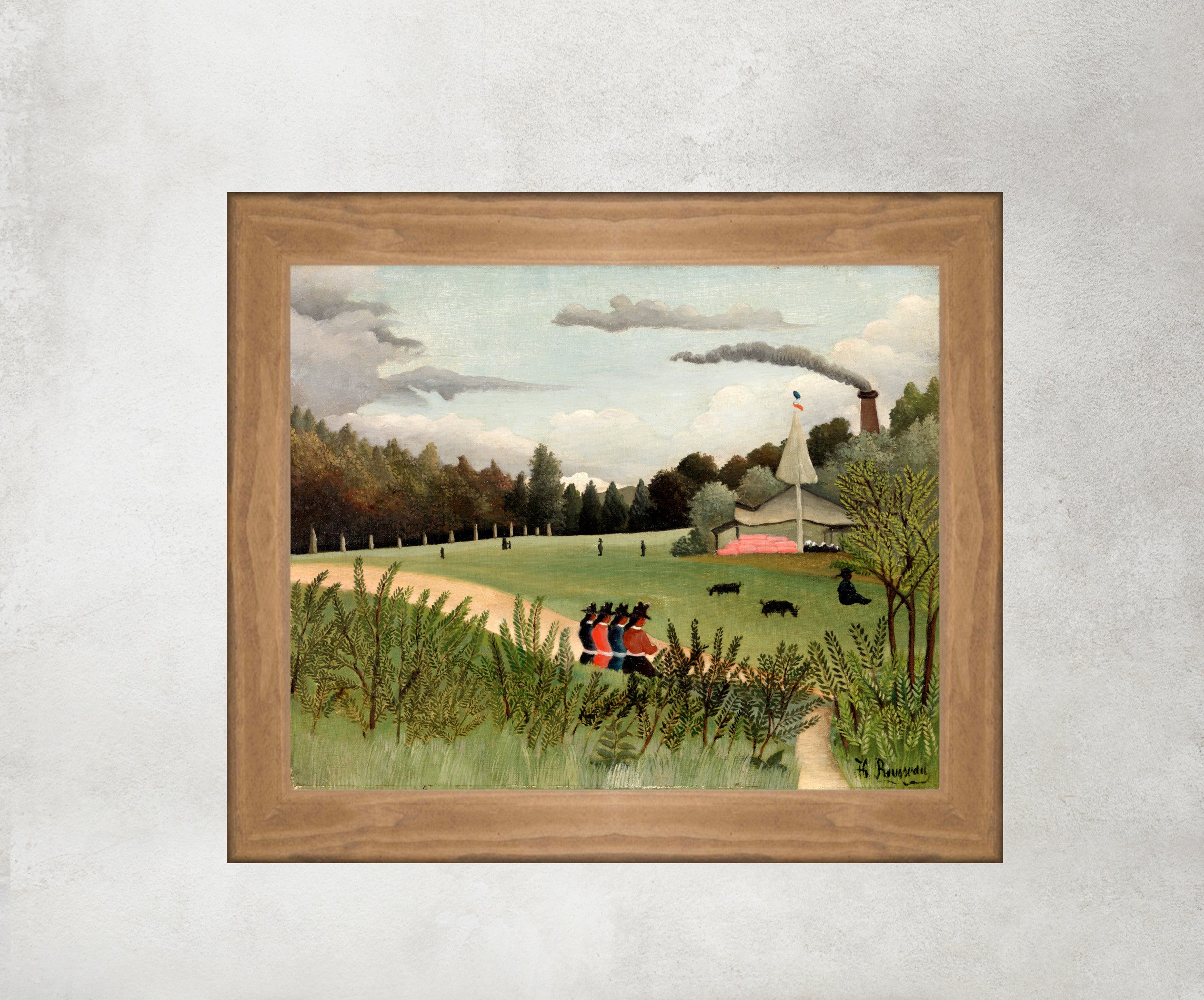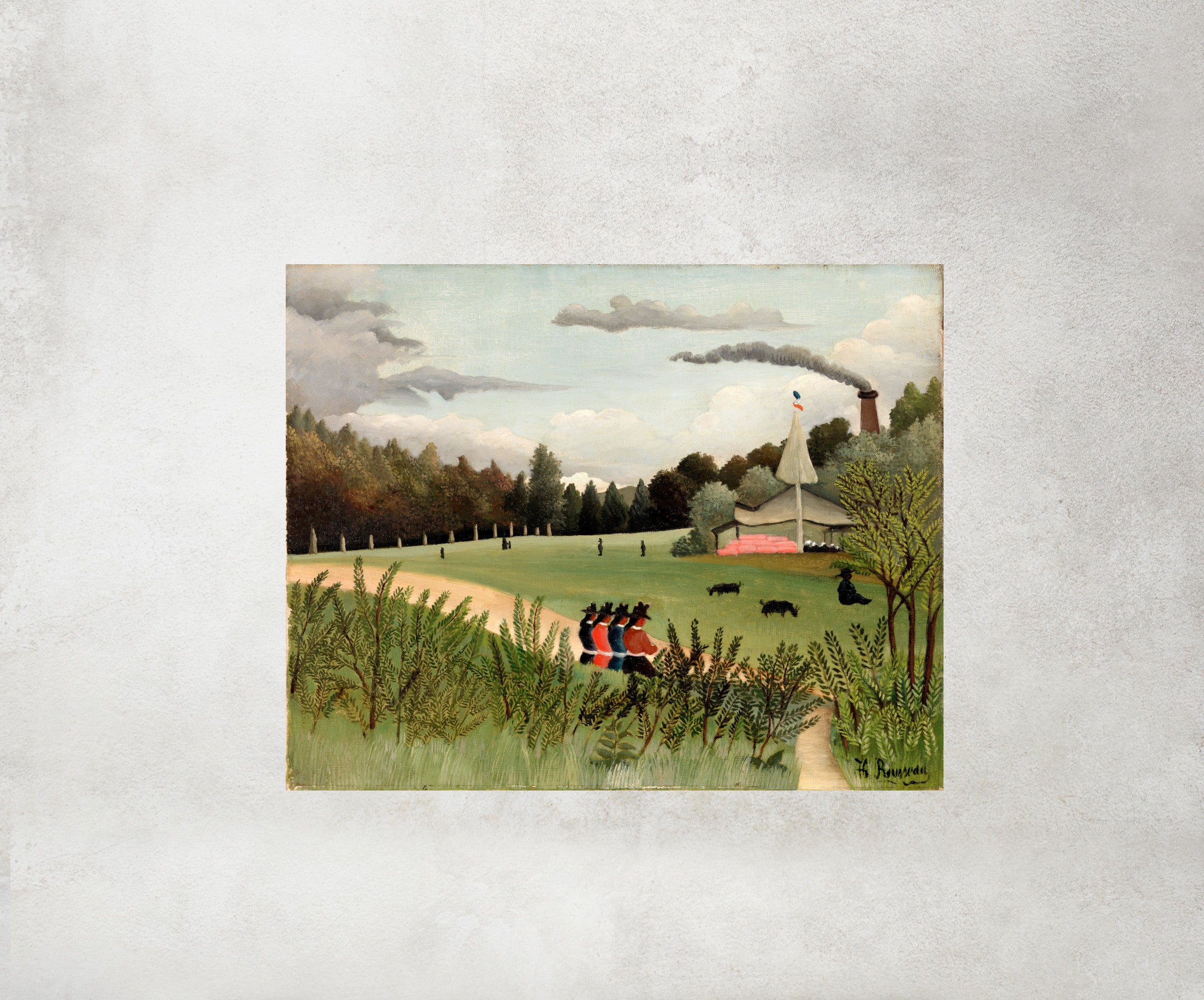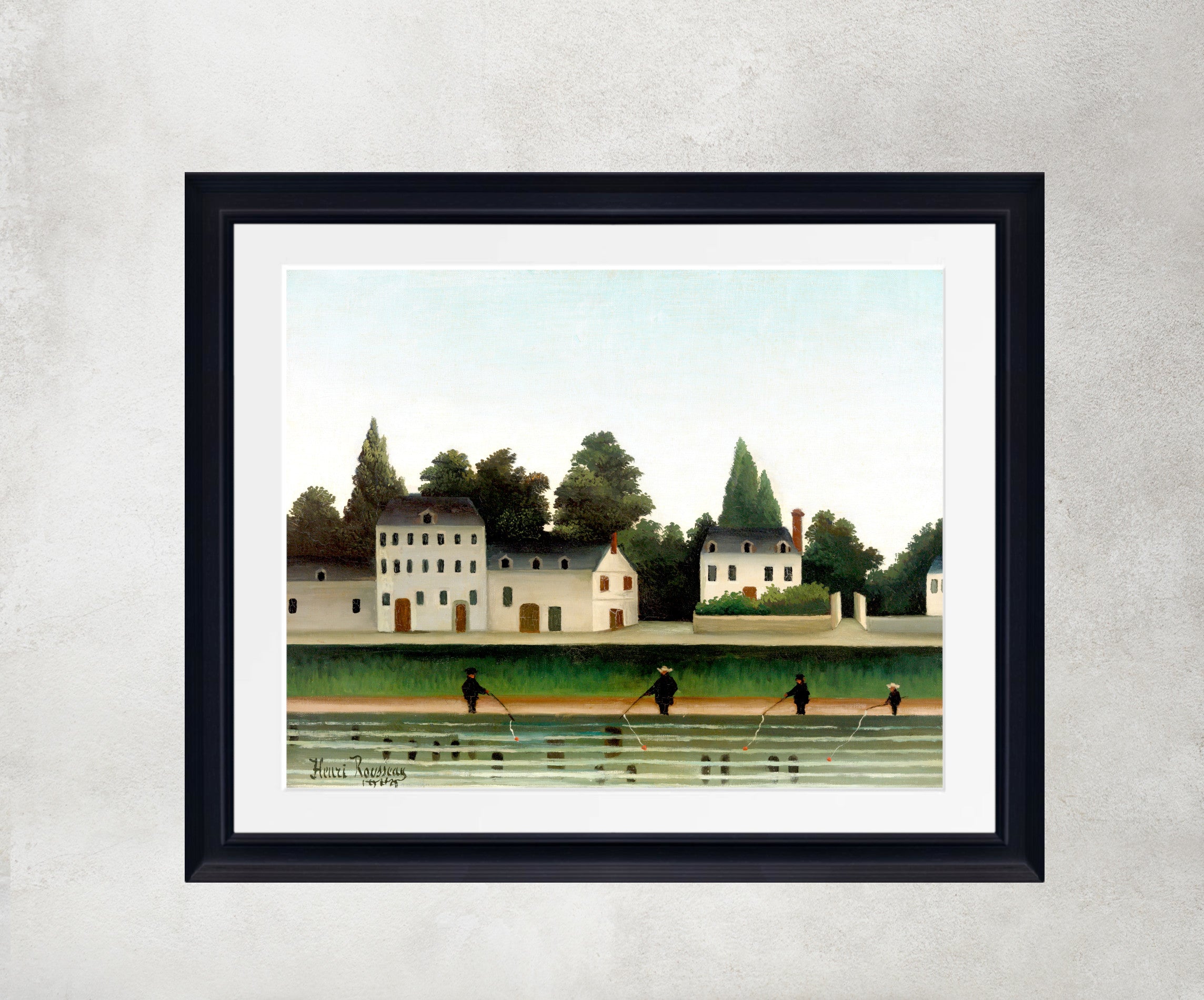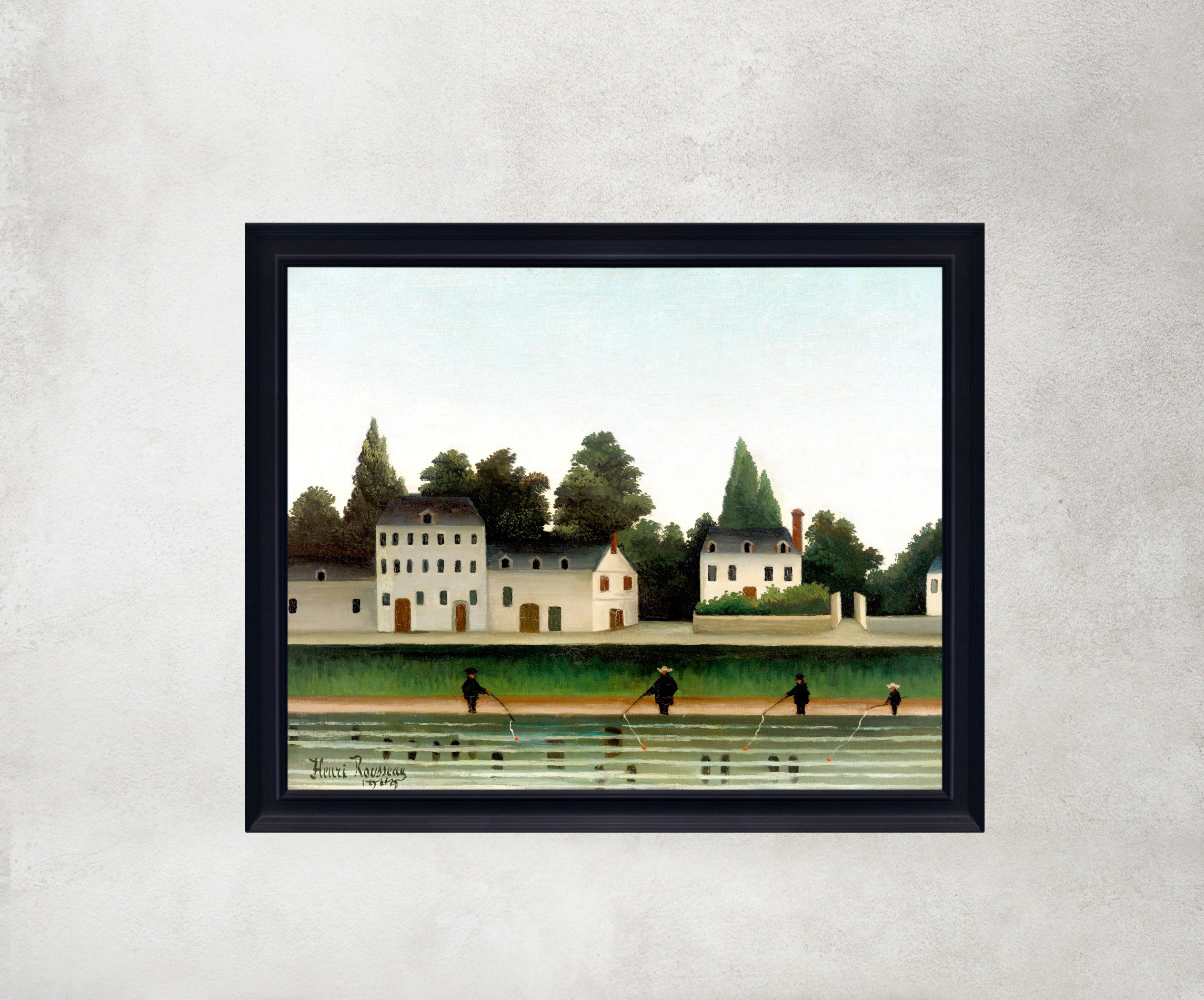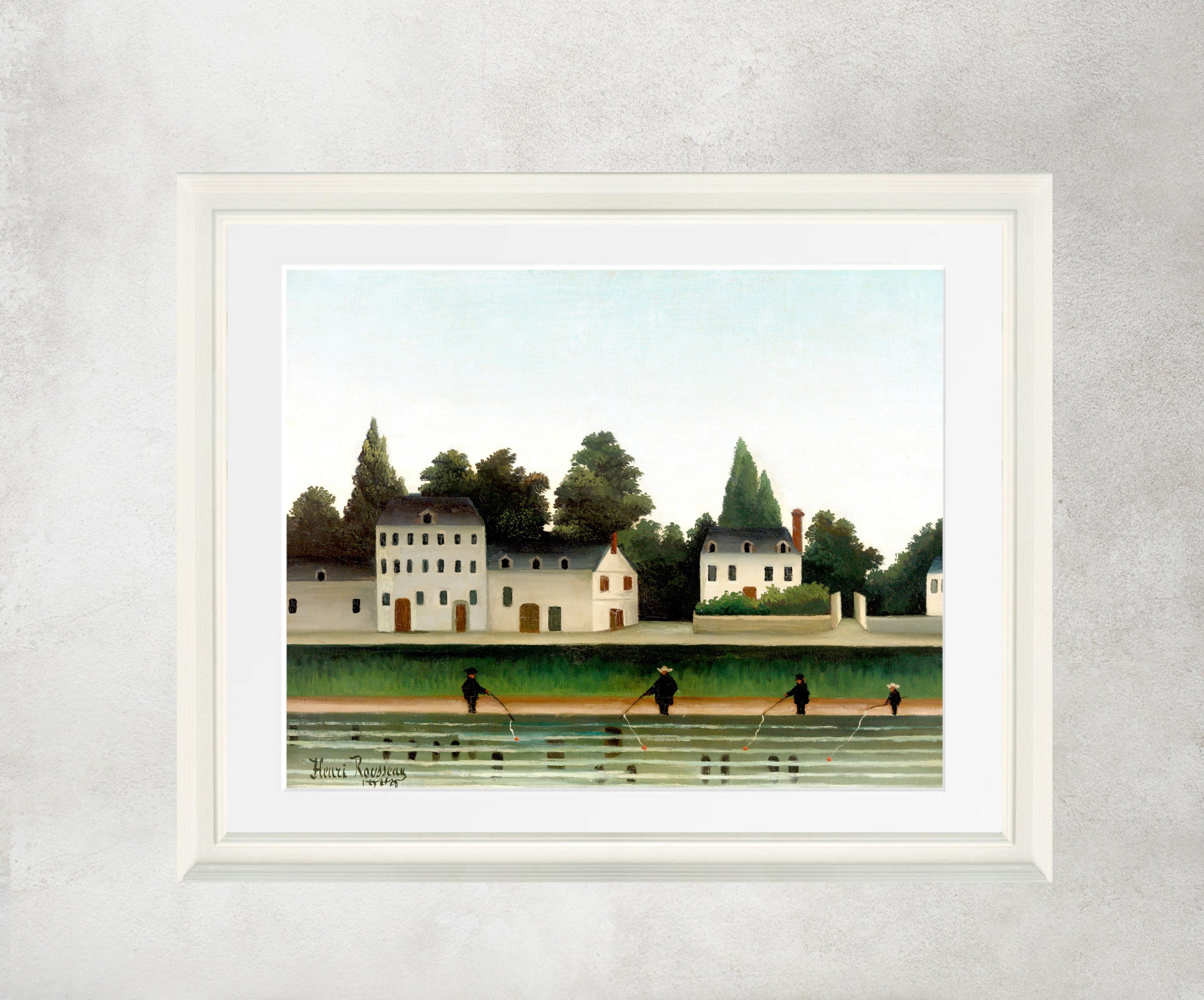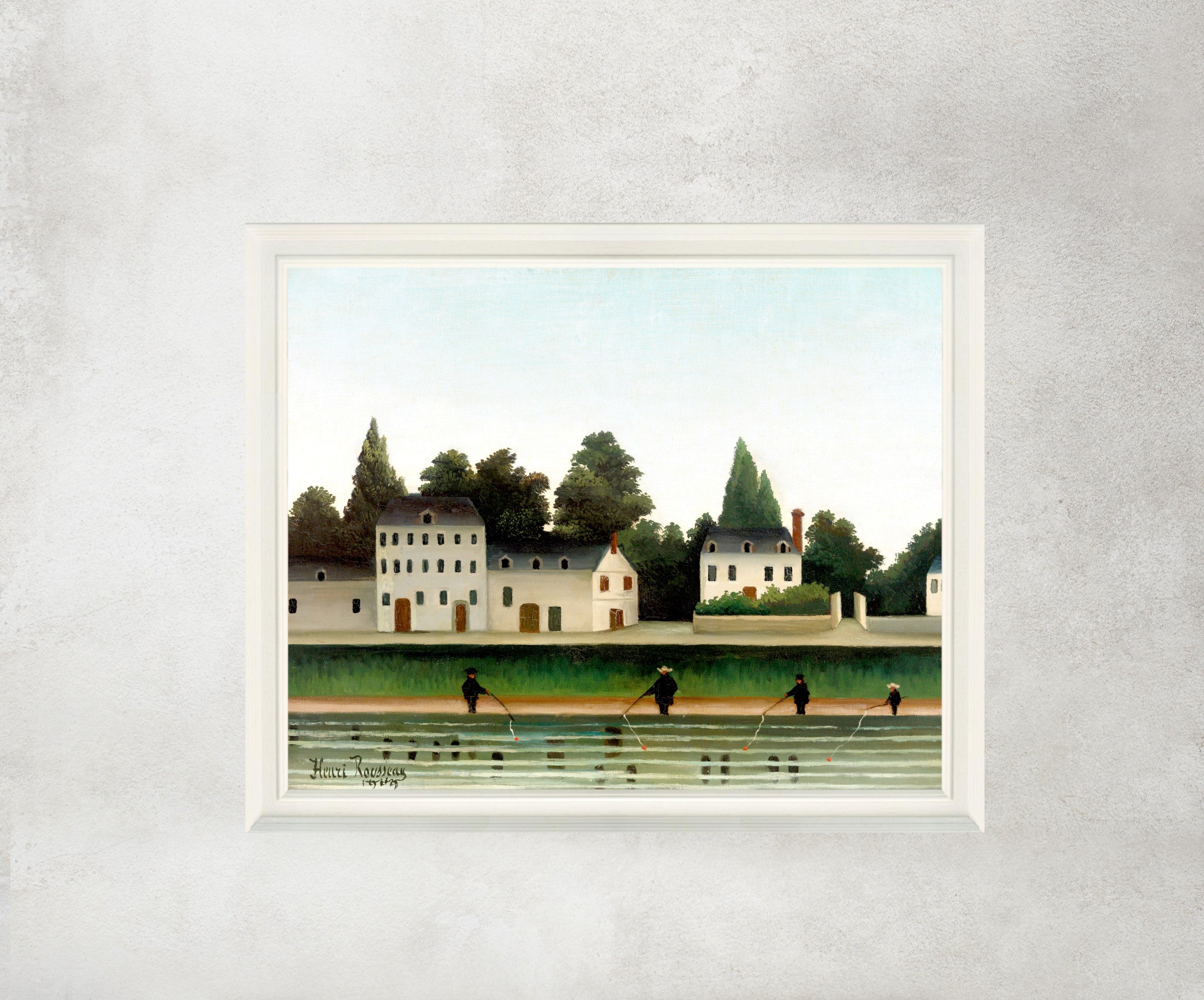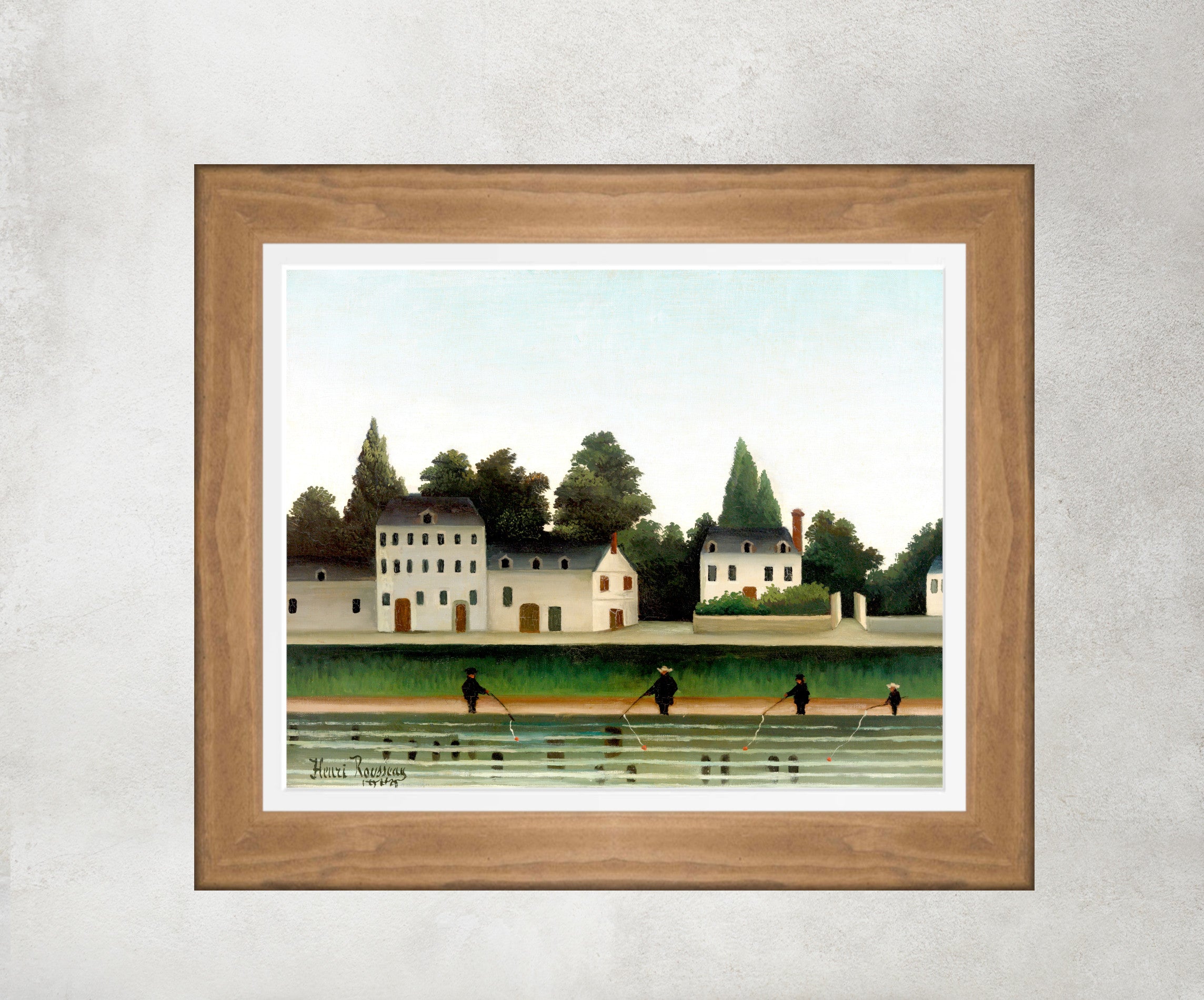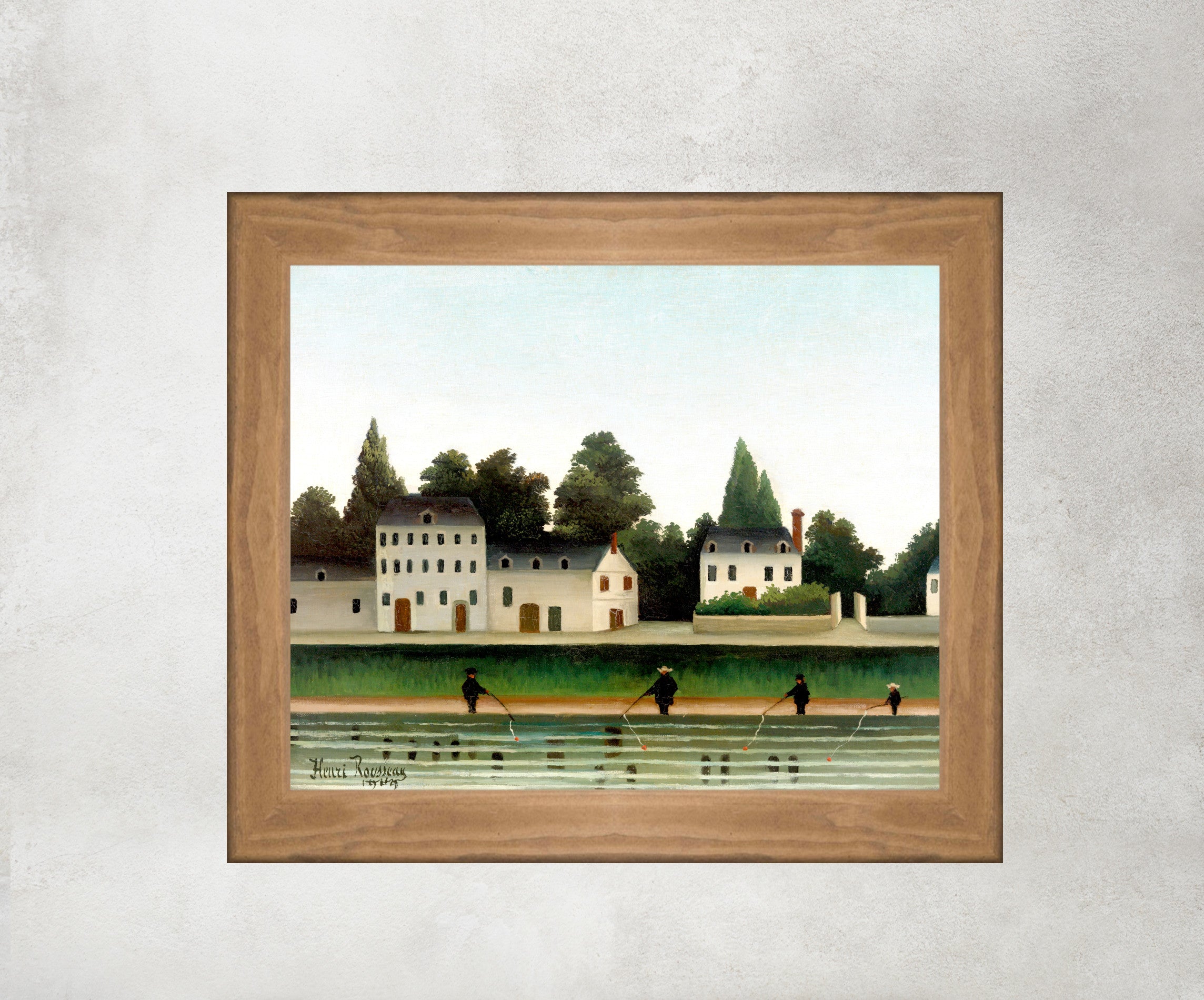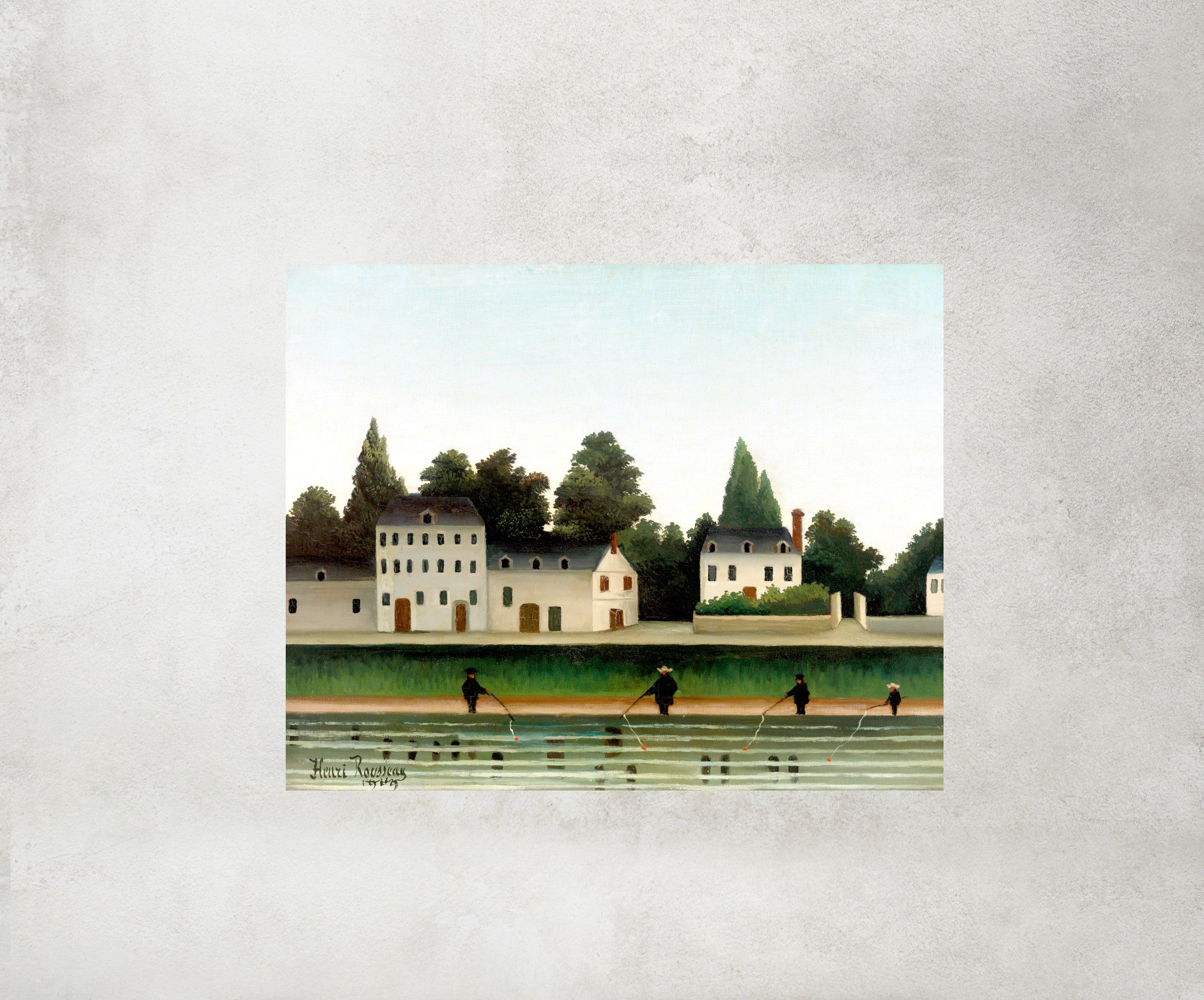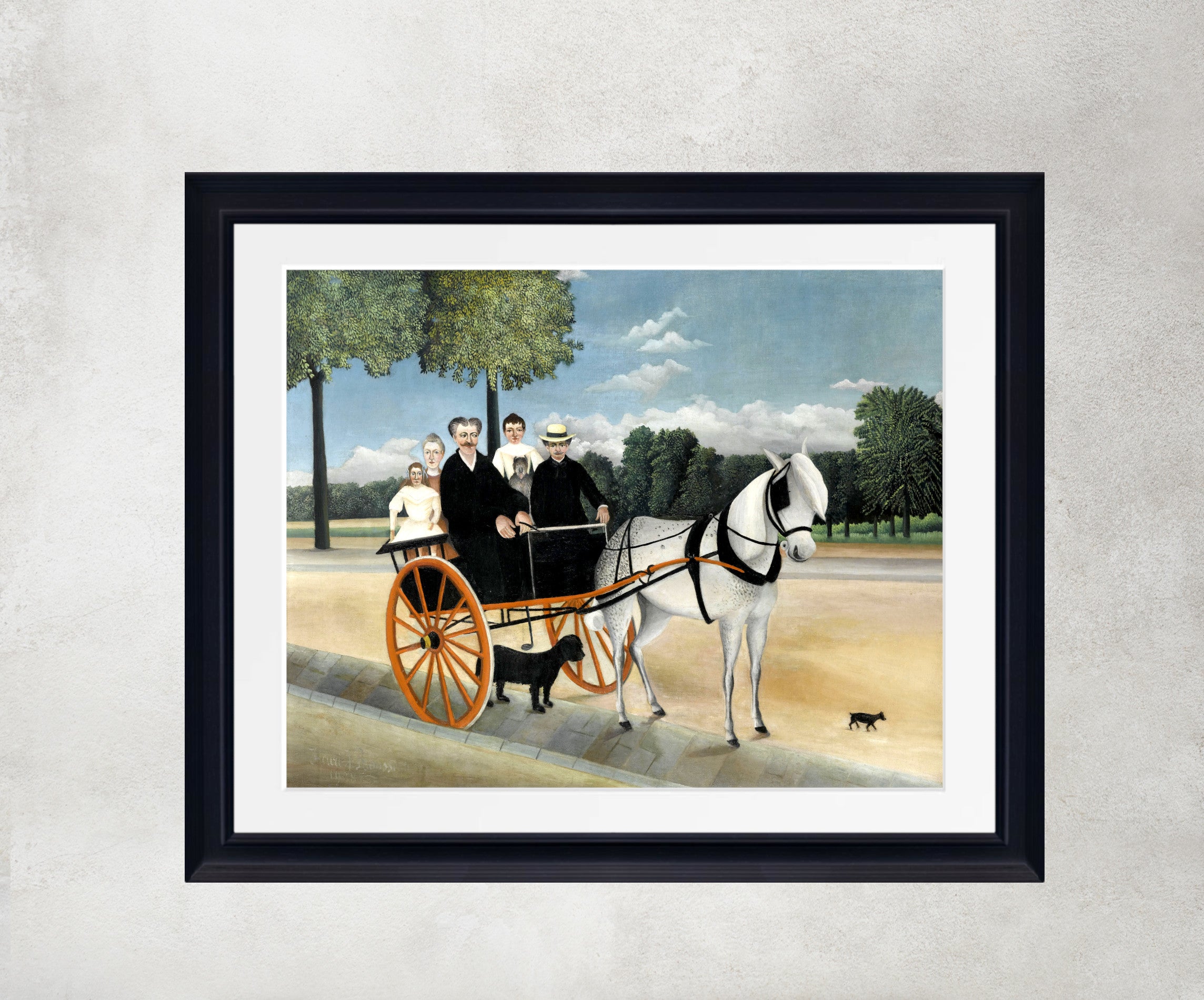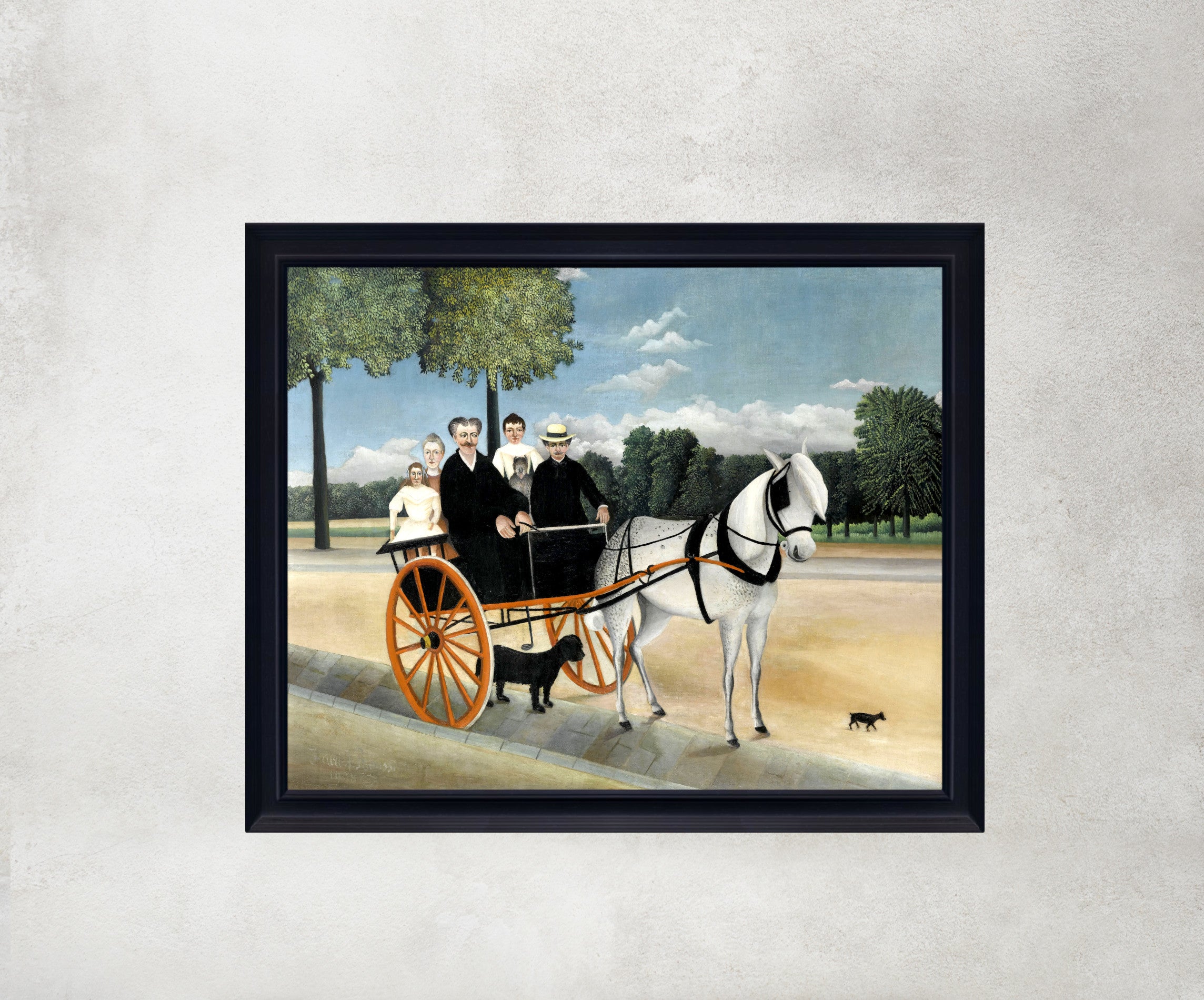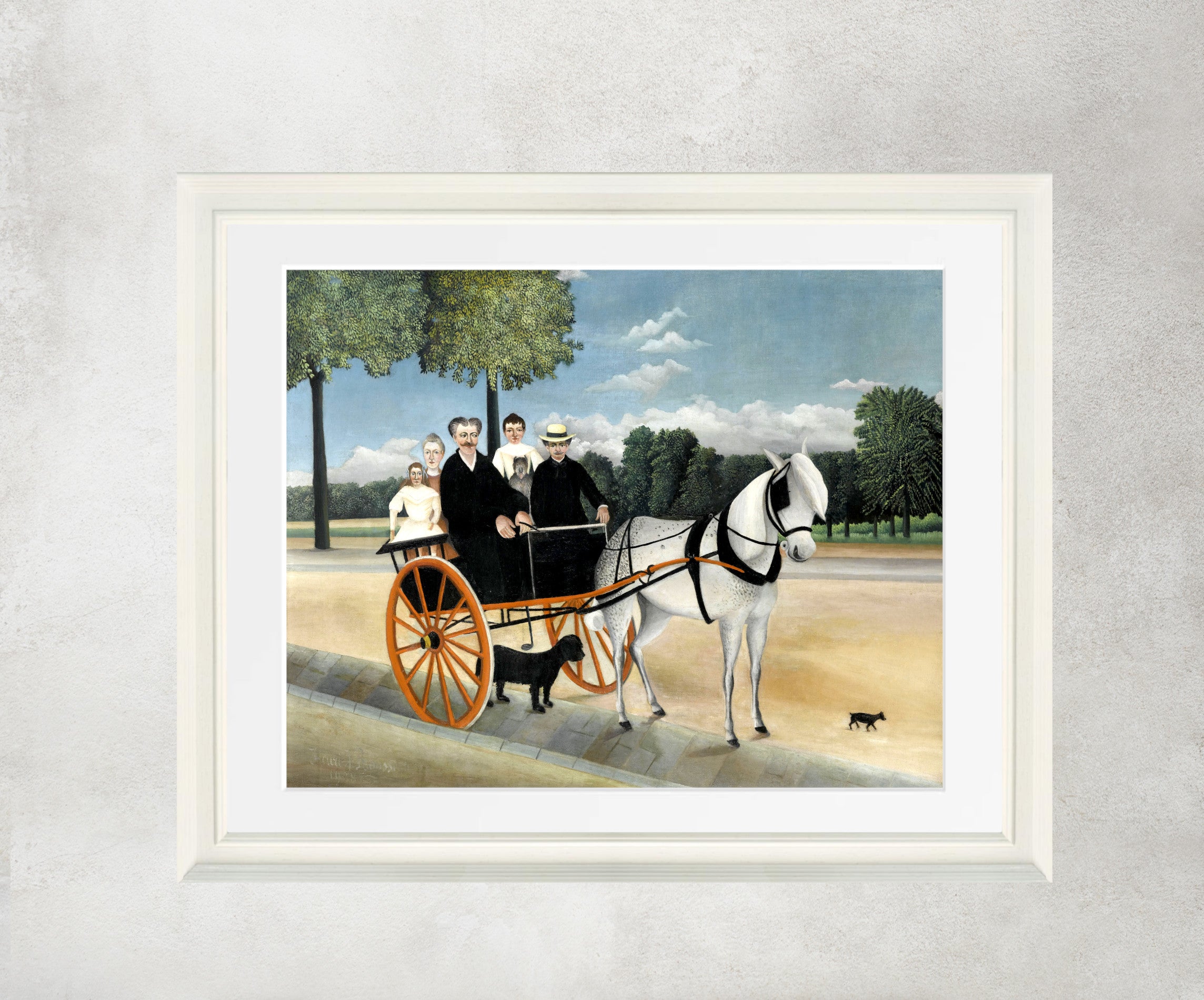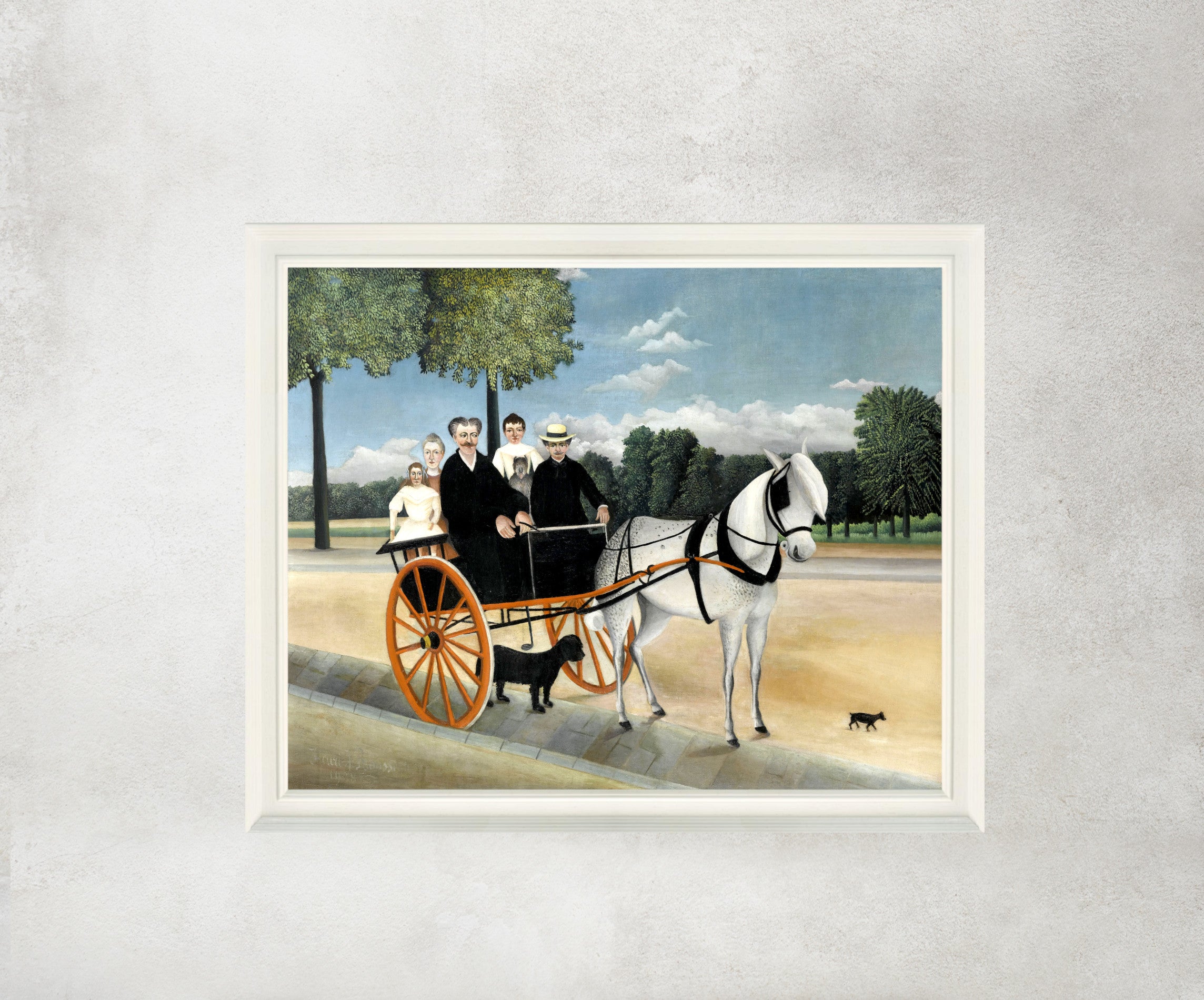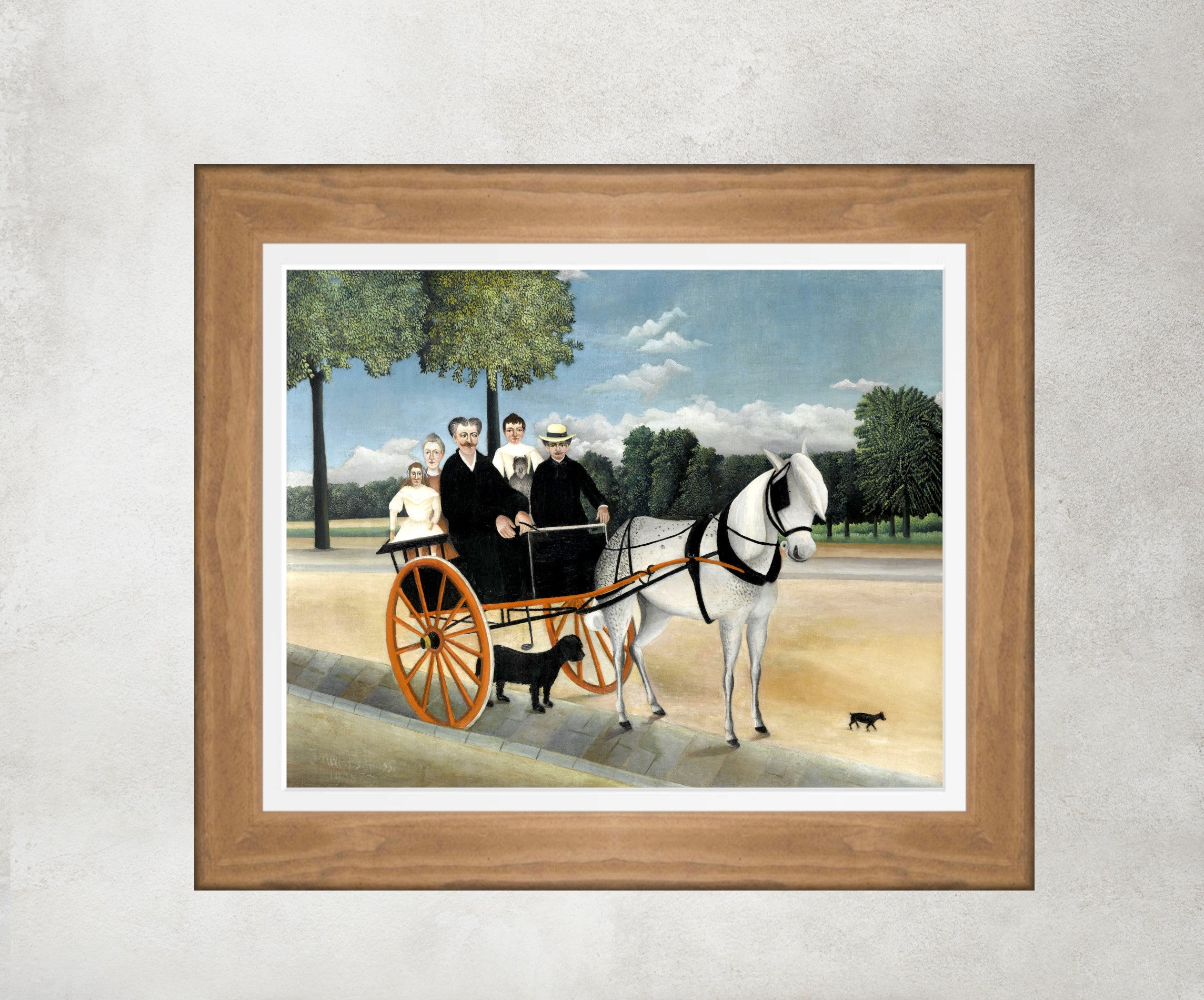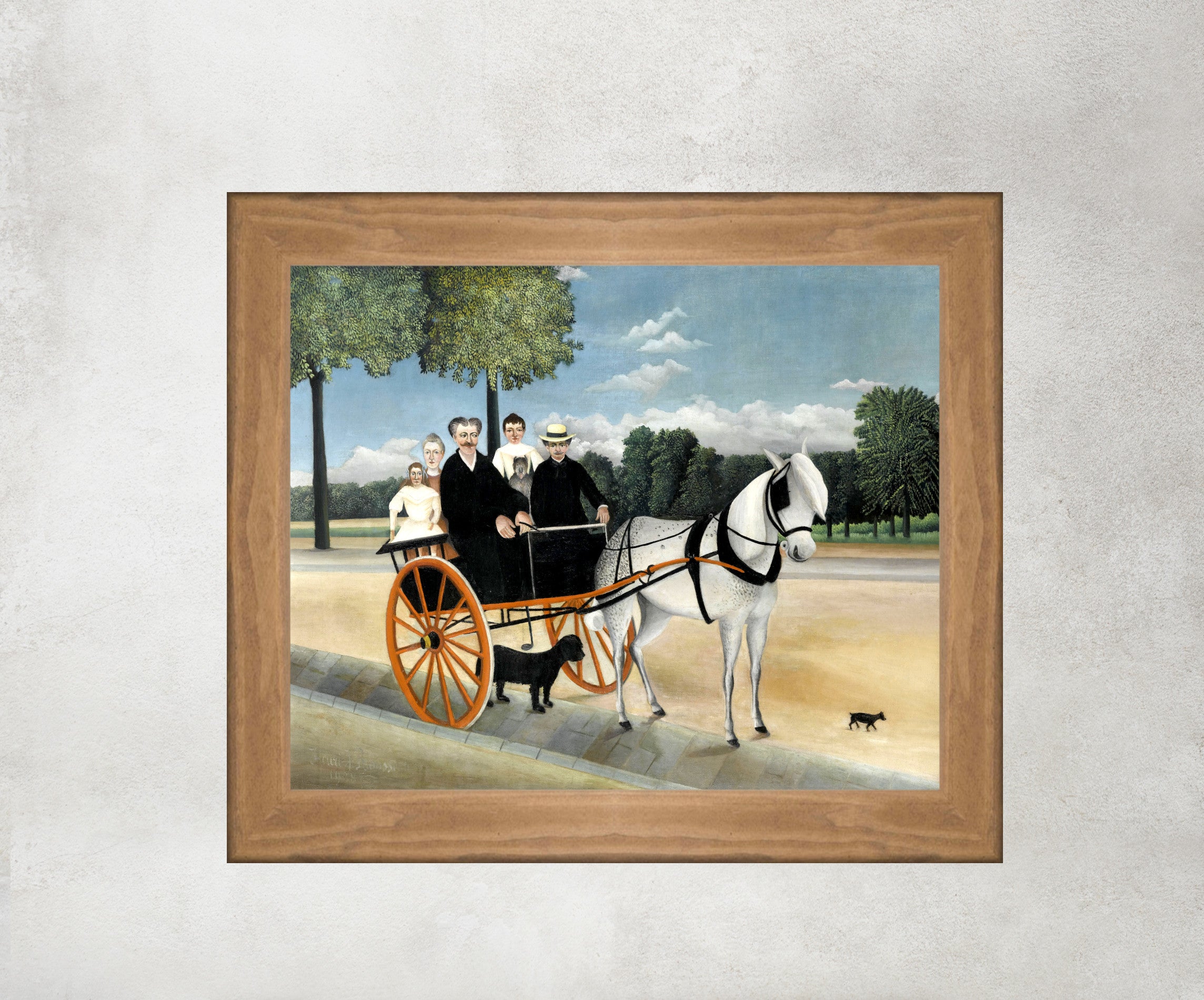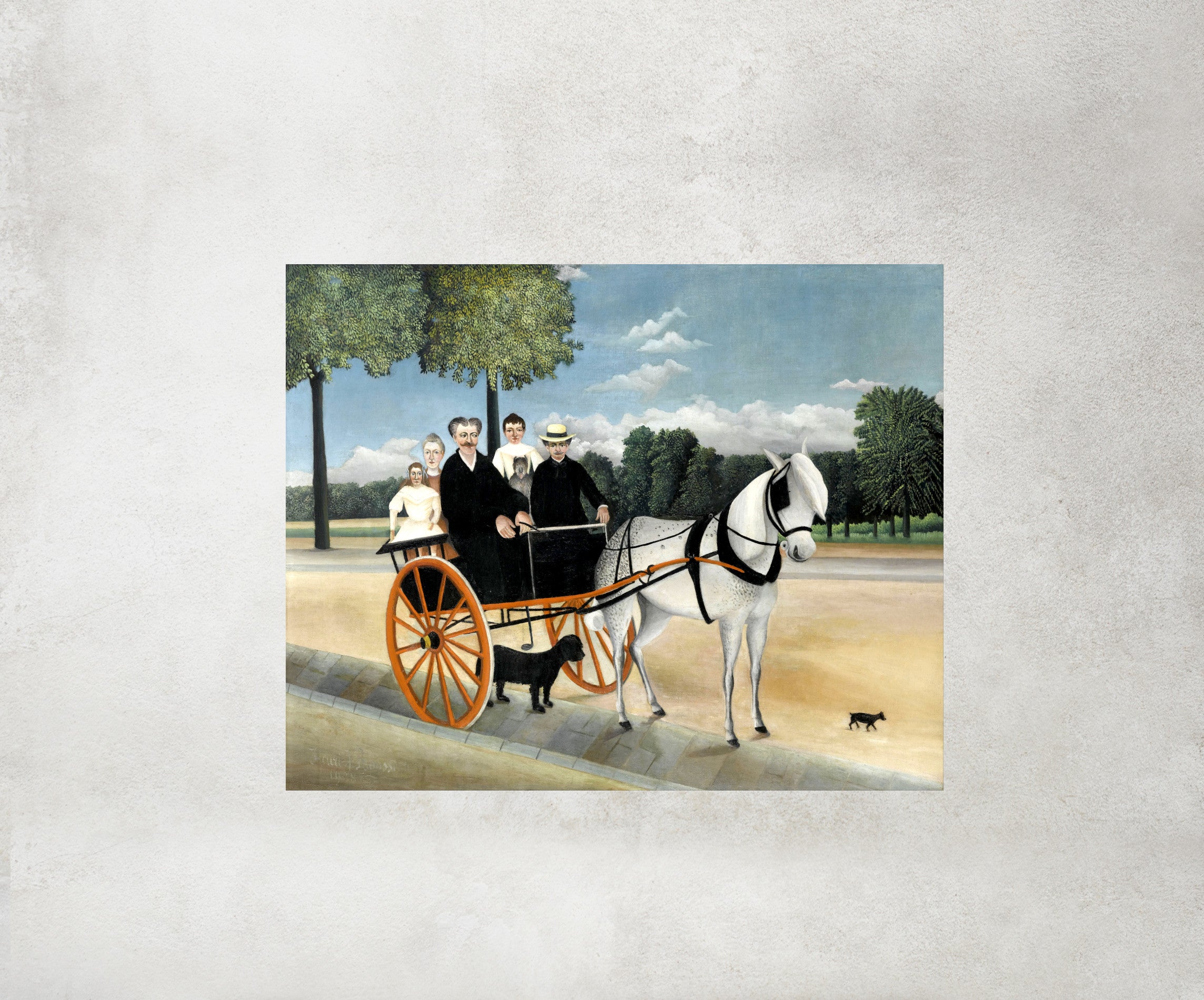Tiger in a Tropical Storm (Surprised!), Henri Rousseau
Henri Julien Félix Rousseau (21 May 1844 – 2 September 1910) was a French post-impressionist painter in the Naïve or Primitive manner. He was also known as Le Douanier (the customs officer), a humorous description of his occupation as a toll and tax collector. He started painting seriously in his early forties; by age 49, he retired from his job to work on his art full-time. Ridiculed during his lifetime by critics, he came to be recognized as a self-taught genius whose works are of high artistic quality. Rousseau's work exerted an extensive influence on several generations of avant-garde artists.

The Sleeping Gypsy, Henri Rousseau
Henri Rousseau - Early life
Rousseau was born in Laval, Mayenne, France, in 1844 into the family of a tinsmith; he was forced to work there as a small boy. He attended Laval High School as a day student, and then as a boarder after his father became a debtor and his parents had to leave the town upon the seizure of their house. Though mediocre in some of his high school subjects, Rousseau won prizes for drawing and music. After high school, he worked for a lawyer and studied law, but "attempted a small perjury and sought refuge in the army." He served four years, starting in 1863. With his father's death, Rousseau moved to Paris in 1868 to support his widowed mother as a government employee. In 1868, he married Clémence Boitard, his landlord's 15-year-old daughter, with whom he had six children (only one survived). In 1871, he was appointed as a collector of the octroi of Paris, collecting taxes on goods entering Paris. His wife died in 1888 and he married Josephine Noury in 1898.

The Snake Charmer, Henri Rousseau
Henri Rousseau - Art Career
From 1886, he exhibited regularly in the Salon des Indépendants, and, although his work was not placed prominently, it drew an increasing following over the years. Tiger in a Tropical Storm (Surprised!) was exhibited in 1891, and Rousseau received his first serious review when the young artist Félix Vallotton wrote: "His tiger surprising its prey ought not to be missed; it's the alpha and omega of painting." Yet it was more than a decade before Rousseau returned to depicting his vision of jungles. In 1893, Rousseau moved to a studio in Montparnasse where he lived and worked until his death in 1910. In 1897, he produced one of his most famous paintings, La Bohémienne endormie (The Sleeping Gypsy). In 1905, Rousseau's large jungle scene The Hungry Lion Throws Itself on the Antelope was exhibited at the Salon des Indépendants near works by younger leading avant-garde artists such as Henri Matisse, in what is now seen as the first showing of The Fauves. Rousseau's painting may even have influenced the naming of the Fauves. In 1907, he was commissioned by artist Robert Delaunay's mother, Berthe, Comtesse de Delaunay, to paint The Snake Charmer.

Fight between a Tiger and a Buffalo, Henri Roussseau

The Laundry Boat of Pont de Charenton Henri Roussseau
Le Banquet Rousseau
When Pablo Picasso happened upon a painting by Rousseau being sold on the street as a canvas to be painted over, the younger artist instantly recognised Rousseau's genius and went to meet him. In 1908, Picasso held a half serious, half burlesque banquet in his studio at Le Bateau-Lavoir in Rousseau's honour. Le Banquet Rousseau, "one of the most notable social events of the twentieth century," wrote American poet and literary critic John Malcolm Brinnin, "was neither an orgiastic occasion nor even an opulent one. Its subsequent fame grew from the fact that it was a colorful happening within a revolutionary art movement at a point of that movement's earliest success, and from the fact that it was attended by individuals whose separate influences radiated like spokes of creative light across the art world for generations." Guests at the banquet Rousseau included: Guillaume Apollinaire, Jean Metzinger, Juan Gris, Max Jacob, Marie Laurencin, André Salmon, Maurice Raynal, Daniel-Henri Kahnweiler, Leo Stein, and Gertrude Stein. Maurice Raynal, in Les Soirées de Paris, 15 January 1914, p. 69, wrote about "Le Banquet Rousseau". Years later the French writer André Salmon recalled the setting of the illustrious banquet: Here the nights of the Blue Period passed... here the days of the Rose Period flowered... here the Demoiselles d'Avignon halted in their dance to re-group themselves in accordance with the golden number and the secret of the fourth dimension... here fraternized the poets elevated by serious criticism into the School of the Rue Ravignan... here in these shadowy corridors lived the true worshippers of fire ... here one evening in the year 1908 unrolled the pageantry of the first and last banquet offered by his admirers to the painter Henri Rousseau called the Douanier.
Henri Rousseau - Retirement and Death
After Rousseau's retirement in 1893, he supplemented his small pension with part-time jobs and work such as playing a violin in the streets. He also worked briefly at Le petit Journal, where he produced a number of its covers. Rousseau exhibited his final painting, The Dream, in March 1910, at the Salon des Independants.
In the same month Rousseau suffered a phlegmon in his leg, one which he ignored. In August, when he was admitted to the Necker Hospital in Paris where his son had died, he was found to have gangrene in his leg. After an operation, he died from a blood clot on 2 September 1910. At his funeral, seven friends stood at his grave: the painters Paul Signac and Manuel Ortiz de Zárate; the artist couple Robert Delaunay and Sonia Terk; the sculptor Constantin Brâncuși; Rousseau's landlord Armand Queval, and Guillaume Apollinaire, who wrote the epitaph Brâncuși put on the tombstone:
We salute you Gentle Rousseau you can hear us. Delaunay, his wife, Monsieur Queval and myself. Let our luggage pass duty free through the gates of heaven. We will bring you brushes paints and canvas. That you may spend your sacred leisure in the light and Truth of Painting. As you once did my portrait facing the stars, lion and the gypsy.
Henri Rousseau - Paintings
Rousseau claimed he had "no teacher other than nature", although he admitted he had received "some advice" from two established Academic painters, Félix Auguste Clément and Jean-Léon Gérôme. Essentially, he was self-taught and is considered to be a naïve or primitive painter. His best-known paintings depict jungle scenes, even though he never left France or saw a jungle. Stories spread by admirers that his army service included the French expeditionary force to Mexico are unfounded. His inspiration came from illustrations in children's books and the botanical gardens in Paris, as well as tableaux of taxidermy wild animals. During his term of service, he had also met soldiers who had survived the French expedition to Mexico, and he listened to their stories of the subtropical country they had encountered. To the critic Arsène Alexandre, he described his frequent visits to the Jardin des Plantes: "When I go into the glass houses and I see the strange plants of exotic lands, it seems to me that I enter into a dream." Along with his exotic scenes there was a concurrent output of smaller topographical images of the city and its suburbs. He claimed to have invented a new genre of portrait landscape, which he achieved by starting a painting with a specific view, such as a favourite part of the city, and then depicting a person in the foreground.
Rousseau's flat, seemingly childish style was disparaged by many critics; people often were shocked by his work or ridiculed it. His ingenuousness was extreme, and he always aspired, in vain, to conventional acceptance. Many observers commented that he painted like a child, but the work shows sophistication with his particular technique.

View of Montsouris Park, the Kiosk, Henri Rousseau

View of the Bridge in Sevres and the Hills of Clamart, Henri Rousseau
Henri Rousseau - Legacy
Rousseau's work exerted an extensive influence on several generations of avant-garde artists, including Pablo Picasso, Jean Hugo, Fernand Léger Jean Metzinger, Max Beckmann, and the Surrealists. According to Roberta Smith, an art critic writing in The New York Times, "Beckmann’s amazing self-portraits, for example, descend from the brusque, concentrated forms of Rousseau’s portrait of the writer Pierre Loti." In 1911, a retrospective exhibition of Rousseau's works was shown at the Salon des Indépendants. His paintings were also shown at the first Blaue Reiter exhibition. Critics have noted the influence of Rousseau on Wallace Stevens's poetry. See, for instance, Stevens's "Floral Decorations for Bananas" in the collection Harmonium. The American poet Sylvia Plath was a great admirer of Rousseau, referencing his art, as well as drawing inspiration from his works in her poetry. The poem, "Yadwigha, on a Red Couch, Among Lilies" (1958), is based upon his painting, The Dream, whilst the poem "Snakecharmer" (1957) is based upon his painting The Snake Charmer. The song "The Jungle Line", by Joni Mitchell, is based upon a Rousseau painting. Underground comic artist Bill Griffith drew a four-page biographical sketch of Rousseau, A Couch in the Sun, which was included in issue #2 of the Arcade anthology. The visual style of Michel Ocelot's 1998 animation film, Kirikou and the Sorceress, is partly inspired by Rousseau, particularly the depiction of the jungle vegetation. A Rousseau painting was used as an inspiration for the 2005 animated film Madagascar. Rousseau's 1908 painting Fight Between a Tiger and a Buffalo was used as the inspiration for a series of 2021 advertisements concerning the rebrand of Facebook into the metaverse company Meta
Henri Rousseau - The Complete Works
| Title | Date | Current Location |
|---|---|---|
| Paysage d'Alger | 1880 | |
| Bataille de Champigny - Episode de la guerre de 1870 | 1882 | Musée des Beaux-Arts de la ville de Paris |
| Walk in the Wood | 1886 | Kunsthaus Zürich |
| Carnival Evening | 1886 | Philadelphia Museum of Art |
| Rendezvous in the Forest | 1889 | National Gallery of Art |
| Le Donjon | 1889 | Santa Barbara Museum of Art |
| Myself: Portrait – Landscape | 1890 | National Gallery Prague |
| The Family | 1890 | Barnes Foundation |
| Toll Gate | 1890 | Courtauld Institute of Art |
| A menina com uma boneca e duas margaridas | 1890 | |
| Portrait de Madame M. | 1890 | Musée d'Orsay |
| Paysage au clocher | 1890 | Villa Flora Hahnloser Collection in Villa Flora |
| Tiger in a Tropical Storm | 1891 | National Gallery |
| Sawmill, Outskirts of Paris | 1891 | Art Institute of Chicago |
| Portrait of Frumence Biche in Civilian Clothes | 1892 | Musée international d'art naïf Anatole Jakovsky |
| The child with the doll | 1892 | Jean Walter-Paul Guillaume Collection |
| Vista da ponte de Grenelle | 1892 | musée d'Art naïf et d'Arts singuliers |
| A Centennial of Independence | 1892 | J. Paul Getty Museum |
| Portrait of a Woman in a Landscape (Portrait de femme dans un paysage) | 1892 | Barnes Foundation |
| Artillerymen | 1893 | Solomon R. Guggenheim Museum |
| La Guerre | 1894 | Musée d'Orsay |
| Outskirts of Paris (Environs de Paris) | 1895 | Barnes Foundation |
| Landscape and Four Young Girls (Paysage et quatre jeunes filles) | 1895 | Barnes Foundation |
| The Laundry Boat of Pont de Charenton (Le Bateau-lavoir du Pont de Charenton) | 1895 | Barnes Foundation |
| Portrait of a Woman | 1895 | Musée Picasso |
| La Falaise | 1895 | Jean Walter-Paul Guillaume Collection |
| Self-Portrait | 1895 | National Gallery of Art Drawings in the National Gallery of Art |
| La Guerre (The War) | 1895 | National Gallery of Art Prints in the National Gallery of Art Rosenwald Collection |
| La Guerre (The War) | 1895 | National Gallery of Art Prints in the National Gallery of Art Rosenwald Collection |
| Study for Family Fishing | 1895 | Israel Museum |
| The Moulin d'Alfort | 1895 | Pola Museum of Art |
| Tiger Hunt | 1895 | Columbus Museum of Art |
| View of the Île de la Cité, Paris | 1895 | Ackland Art Museum |
| Landscape with Watermill | 1896 | Gothenburg Museum of Art |
| Retrato de Léon-Paul Fargue | 1896 | |
| The Barnyard | 1896 | National museum of modern art |
| Street in the Suburbs | 1896 | Fred Jones Jr. Museum of Art |
| The Sleeping Gypsy | 1897 | Museum of Modern Art John Quinn Art Collection |
| Boy on the Rocks | 1897 | National Gallery of Art |
| The Chair Factory in Alfortville | 1897 | Jean Walter-Paul Guillaume Collection |
| The Chair Factory | 1897 | Jean Walter-Paul Guillaume Collection |
| Seine and Eiffel Tower in the Sunset | 1897 | Pola Museum of Art |
| The Hungry Lion | 1897 | Kunstmuseum Basel |
| The Eiffel Tower | 1898 | Museum of Fine Arts, Houston |
| Malakoff | 1898 | |
| Flowers in a Vase | 1898 | Rhode Island School of Design Museum |
| The Ship in the Tempest | 1899 | Jean Walter-Paul Guillaume Collection |
| The Past and the Present, | 1899 | Barnes Foundation |
| Self-portrait | 1900 | Brooklyn Museum |
| Portrait of the second wife of the artist | 1900 | Musée Picasso |
| Portrait of the artist with oil lamp | 1900 | Musée Picasso |
| Landscape with Cattle | 1900 | Philadelphia Museum of Art |
| View of the Quai d' Asnières | 1900 | Barnes Foundation |
| Woman with Basket of Eggs | 1900 | Barnes Foundation |
| Eve and the Serpent | 1900 | Hamburger Kunsthalle |
| Le Peintre et son modèle | 1900 | National museum of modern art |
| View of the Quai d'Ivry near the Port à l'Anglais, Seine | 1900 | Baltimore Museum of Art |
| Flowers in a Vase | 1900 | Museum of Modern Art |
| Outskirts of Paris | 1901 | Cleveland Museum of Art |

| Title | Date | Current Location |
|---|---|---|
| Unpleasant Surprise (Mauvaise surprise) | 1901 | Barnes Foundation |
| Heureux Quatuor | 1902 | |
| A Corner of the Park at Bellevue, Autumn, Sunset | 1902 | Rhode Island School of Design Museum |
| Zur Feier des Kindes ! | 1903 | The Winterthur Museum of Art |
| Dahlia and Daisies in a Vase | 1904 | Art Institute of Chicago |
| Scouts Attacked by a Tiger (Éclaireurs attaqués par un tigre) | 1904 | Barnes Foundation |
| Jungle with Lion | 1904 | Pola Museum of Art |
| Still Life with Flowers | 1905 | Philadelphia Museum of Art |
| The Wedding Party | 1905 | Musée de l'Orangerie |
| Portrait of the father of the artist | 1905 | National Museum of Fine Arts |
| Monkeys and Parrot in the Virgin Forest | 1905 | Barnes Foundation |
| Banks of the Oise | 1905 | Smith College Museum of Art |
| House on the Outskirts of Paris | 1905 | Carnegie Museum of Art |
| The Hungry Lion Throws Itself on the Antelope | 1905 | Beyeler Foundation |
| Woman Walking in an Exotic Forest | 1905 | Barnes Foundation |
| Le canal | 1905 | Yale University Art Gallery |
| Etude pour: Maison de campagne à St-Cloud | 1905 | Alte Nationalgalerie |
| Stroller and Child | 1905 | Dallas Museum of Art |
| The industrial town | 1905 | Yoshino Gypsum |
| Portrait of Monsieur X (Pierre Loti) | 1906 | Kunsthaus Zürich |
| Landscape with Milkmaids | 1906 | McNay Art Museum |
| Liberty Inviting Artists to Take Part in the 22nd Exhibition of the Societe des Artistes Independants | 1906 | Artizon Museum |
| The Merry Jesters | 1906 | Philadelphia Museum of Art |
| Landscape With Milkmaids | 1906 | McNay Art Museum |
| Landscape with Ruins | 1906 | Pola Museum of Art |
| Young Girl in Pink | 1907 | Philadelphia Museum of Art |
| The Representatives of Foreign Powers Coming to Greet the Republic as a Sign of Peace | 1907 | Musée Picasso |
| The Flamingoes | 1907 | |
| La encantadora de serpientes | 1907 | Musée d'Orsay |
| Quai d'Ivry | 1907 | Artizon Museum |
| The Repast of the Lion | 1907 | Metropolitan Museum of Art |
| The Banks of the Oise | 1907 | Fogg Museum Harvard Art Museums |
| Charenton-le-Pont | 1907 | Pola Museum of Art |
| The Banks of the Bièvre near Bicêtre | 1908 | Metropolitan Museum of Art |
| In a Tropical Forest. Struggle between Tiger and Bull | 1908 | Hermitage Museum |
| Anglers | 1908 | Jean Walter-Paul Guillaume Collection |
| View of Montsouris Park, the Kiosk | 1908 | Barnes Foundation |
| Exotic Landscape | 1908 | |
| View of the Bridge of Sevres | 1908 | Pushkin Museum of Fine Arts |
| The Beauty and the Beast | 1908 | Scharf-Gerstenberg Collection |
| The Football Players | 1908 | Solomon R. Guggenheim Museum |
| La Carriole du Père Junier | 1908 | Jean Walter-Paul Guillaume Collection |
| The Pink Candle | 1908 | The Phillips Collection |
| The Rabbit's Meal | 1908 | Barnes Foundation |
| Study for View of the Pont de Sèvres | 1908 | Barnes Foundation |
| Fight between a Tiger and a Buffalo | 1908 | Cleveland Museum of Art |
| The Avenue in Saint-Cloud Park | 1908 | Städel Museum |
| Eve in the Garden of Eden | 1908 | Pola Museum of Art |
| Le quai d'Austerlitz | 1908 | Kunstmuseum Basel |
| Landscape | 1909 | Philadelphia Museum of Art |
| Village Street | 1909 | Philadelphia Museum of Art |
| Scene in Bagneux on the Outskirts of Paris | 1909 | Ohara Museum of Art |
| The Muse Inspiring the Poet | 1909 | Kunstmuseum Basel |
| Portrait de Joseph Brummer | 1909 | |
| The Muse Inspiring the Poet | 1909 | Pushkin Museum of Fine Arts |
| The Equatorial Jungle | 1909 | National Gallery of Art |
| Luxembourg Gardens. Monument to Chopin | 1909 | Hermitage Museum |
| Notre Dame | 1909 | The Phillips Collection |
| View of the Fortifications to the left of the Gate of Vanves | 1909 | Hermitage Museum |

| Title | Date | Current Location |
|---|---|---|
| Statue of Diana in the Park | 1909 | National Galleries of Scotland |
| Landscape and Four Fisherman | 1909 | Barnes Foundation |
| The Environs of Paris | 1909 | Detroit Institute of Arts |
| Les Parents | 1909 | Uehara Museum of Modern Art |
| View of St. Cloud | 1909 | Israel Museum |
| Flowers in a Vase | 1909 | Buffalo AKG Art Museum |
| Landscape with the Dirigible Republique and a Wright Airplane | 1909 | Pola Museum of Art |
| View of the Fortifications | 1909 | Hiroshima Museum of Art |
| Virgin forest with sunset | 1909 | Kunstmuseum Basel |
| The Waterfall | 1910 | Art Institute of Chicago |
| Bouquet of Flowers | 1910 | Barnes Foundation |
| Bouquet of Flowers | 1910 | Tate National Gallery |
| Banana Harvest | 1910 | Yale University Art Gallery |
| Jaguar Attacking a Horse | 1910 | Pushkin Museum of Fine Arts |
| Singes dans la forêt vierge | 1910 | |
| Exotic Landscape | 1910 | Norton Simon Museum |
| Deux lions à l'affût dans la jungle | 1910 | |
| The Dream | 1910 | Museum of Modern Art |
| Meadowland (The Pasture) | 1910 | Artizon Museum |
| Tropical Forest with Monkeys | 1910 | National Gallery of Art |
| Bouquet of Flowers with China Asters and Tokyos | 1910 | Barnes Foundation |
| Tropical Landscape: American Indian Struggling with a Gorilla | 1910 | Virginia Museum of Fine Arts |
| Promeneurs dans un parc | Musée de l'Orangerie | |
| Lake of Geneva (Lac Leman) | Museum of Fine Arts Boston | |
| Vase of Flowers | Detroit Institute of Arts | |
| Le Barrage | ||
| L'Artiste peignant sa femme | ||
| Child with a Doll in a Landscape | ||
| Landscape with Factory | ||
| Die Liebe der Vögel | ||
| view on Paris |







